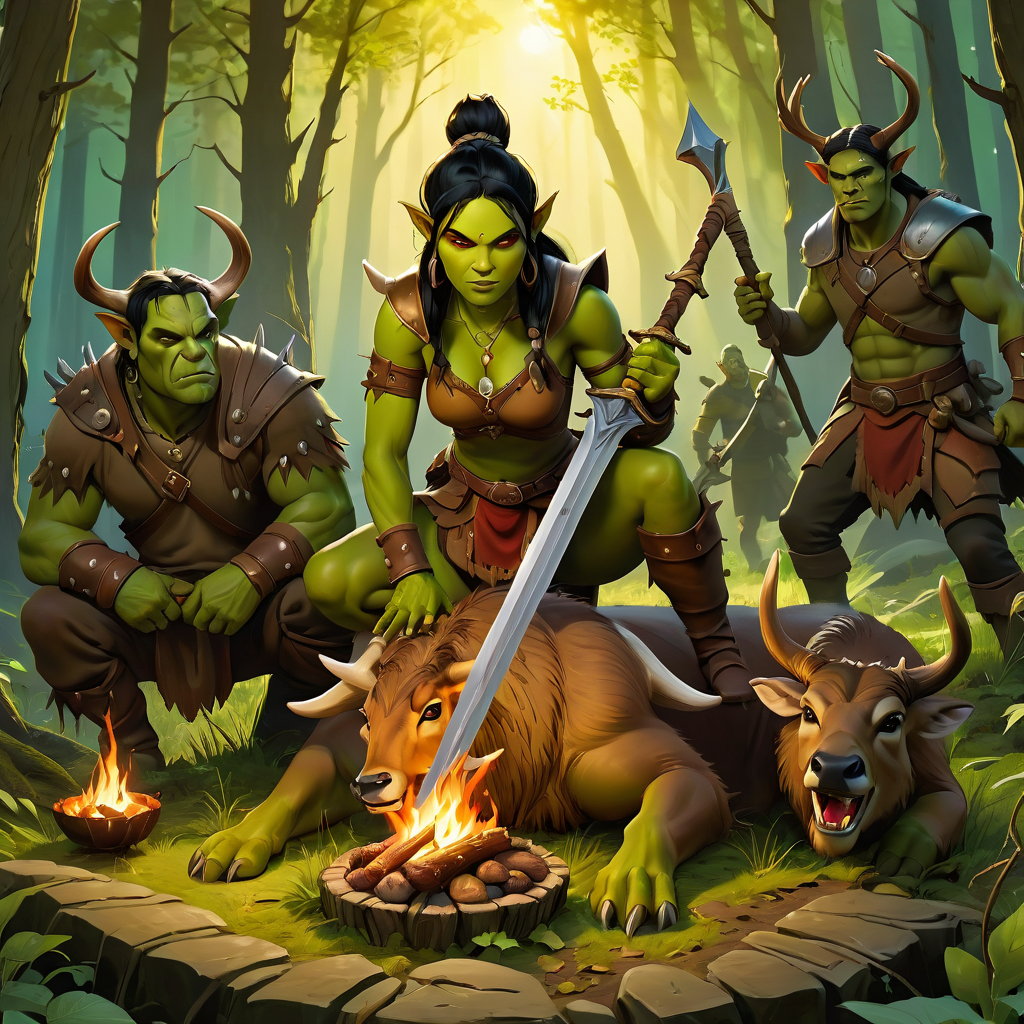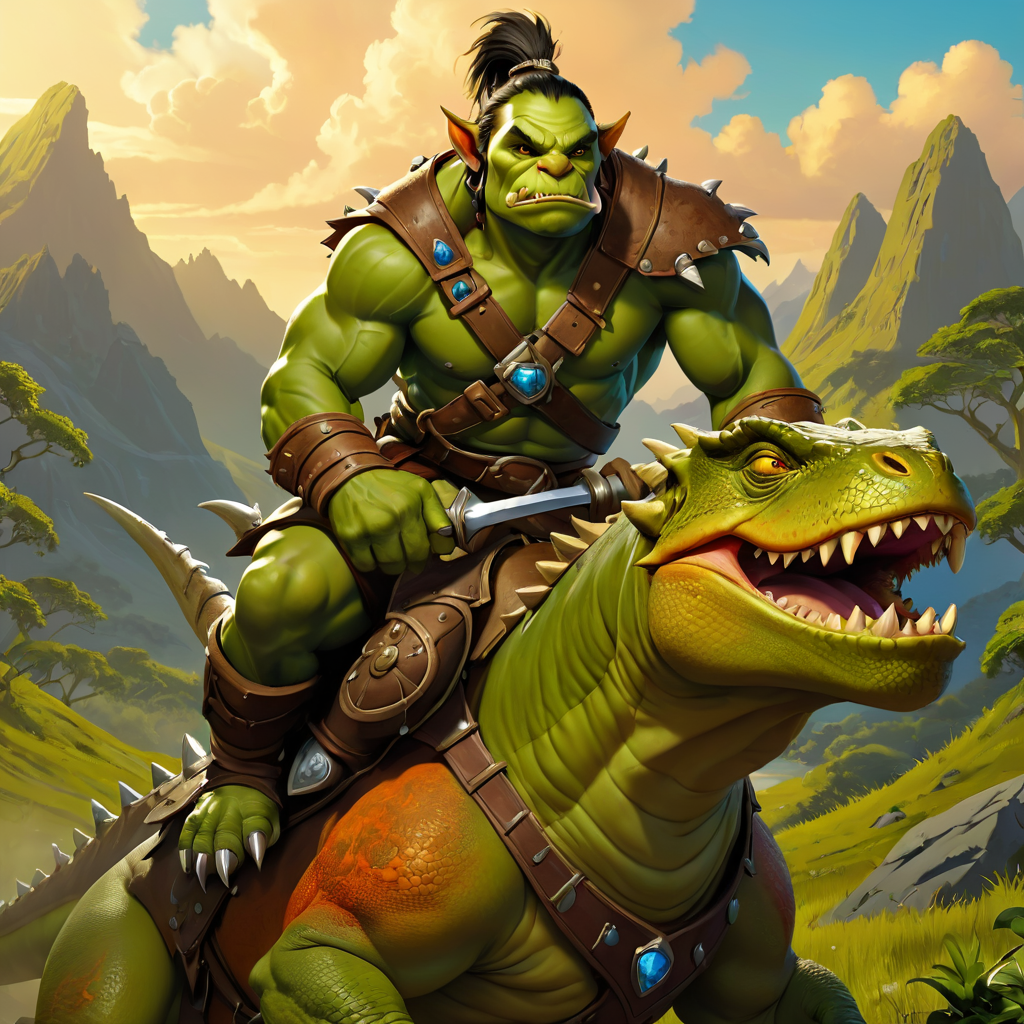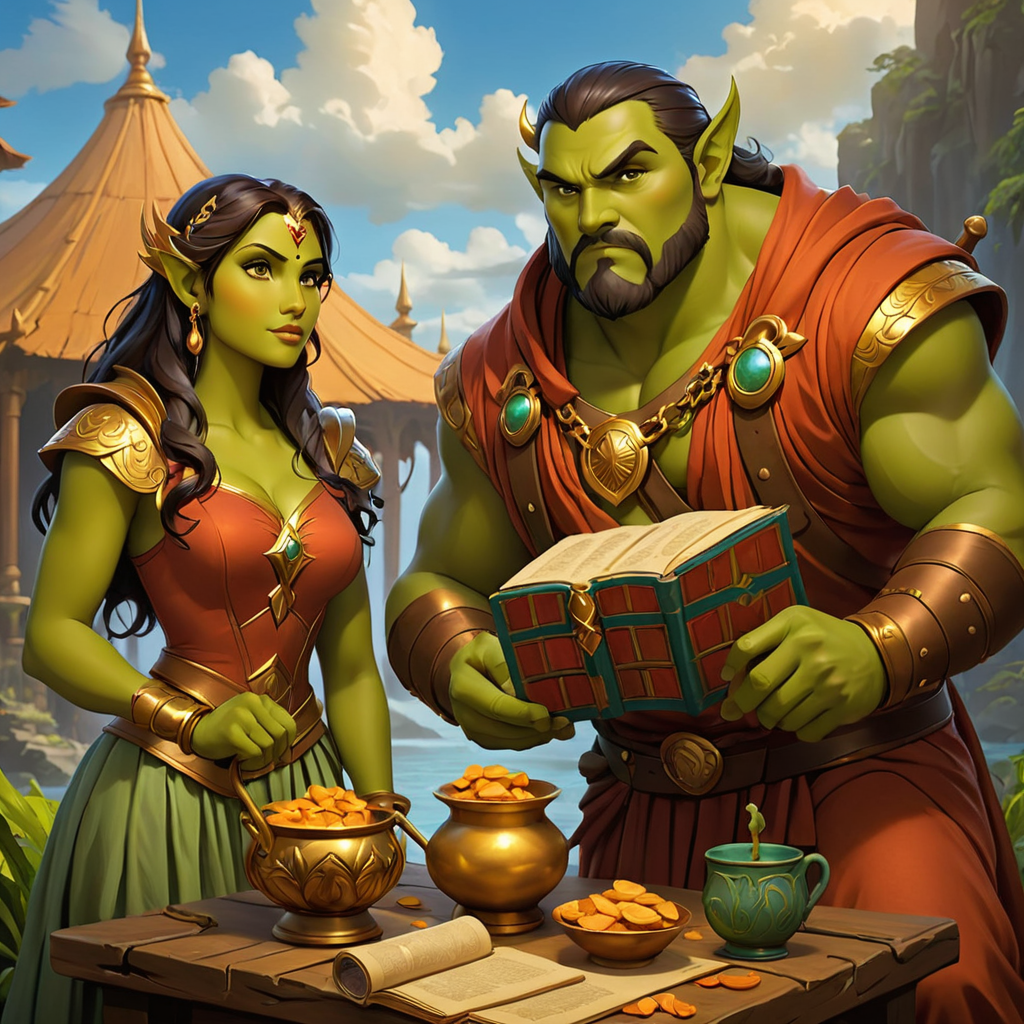The Orcs
The orcs are a proud and diverse people, united by ancestry and divided by tradition. Each clan follows its own interpretation of strength, death, and duty, resulting in unique expressions across architecture, faith, and daily life.(used to be a united empire n the past but by time split in to clans) Their architecture is sturdy and symbolic—ranging from desert tombs to mountain fortresses and fire-lit forges.(arhitetecture has formed du to geography and infuense of naeighbours) Food is more than sustenance; it’s a ritual act tied to clan identity, often involving feasts that honor both the living and the dead.
In religion, the orcs venerate Kaba-Kaar, god of death, though each clan sees him differently—some as a flame, others as silence or rebirth.(this has be in development even from the great families from the grat empire) Their language is rich in ancestral terms and bone-symbolic writing( well read priests still know the old language and alphabet from Age of Golden Fire , while music plays a role in everything from mourning rites to war chants. Clothing is crafted from bone, hide, and stone-colored fabrics, with each piece reflecting social standing or spiritual belief( and clan membership).
Traditions are central: dream-reading, ancestral carvings, and sacred games are passed through generations. Orc weapons are often handmade in rituals, inscribed with runes and clan marks, symbolizing both craft and spirit. They also form bonds with animals, some clans domesticating lizards or training desert beasts as companions or protectors.
Ultimately, orc culture is a mosaic of memory and might—each aspect a living testament to a people who honor death not as an end, but as part of the eternal cycle.

The Orcs
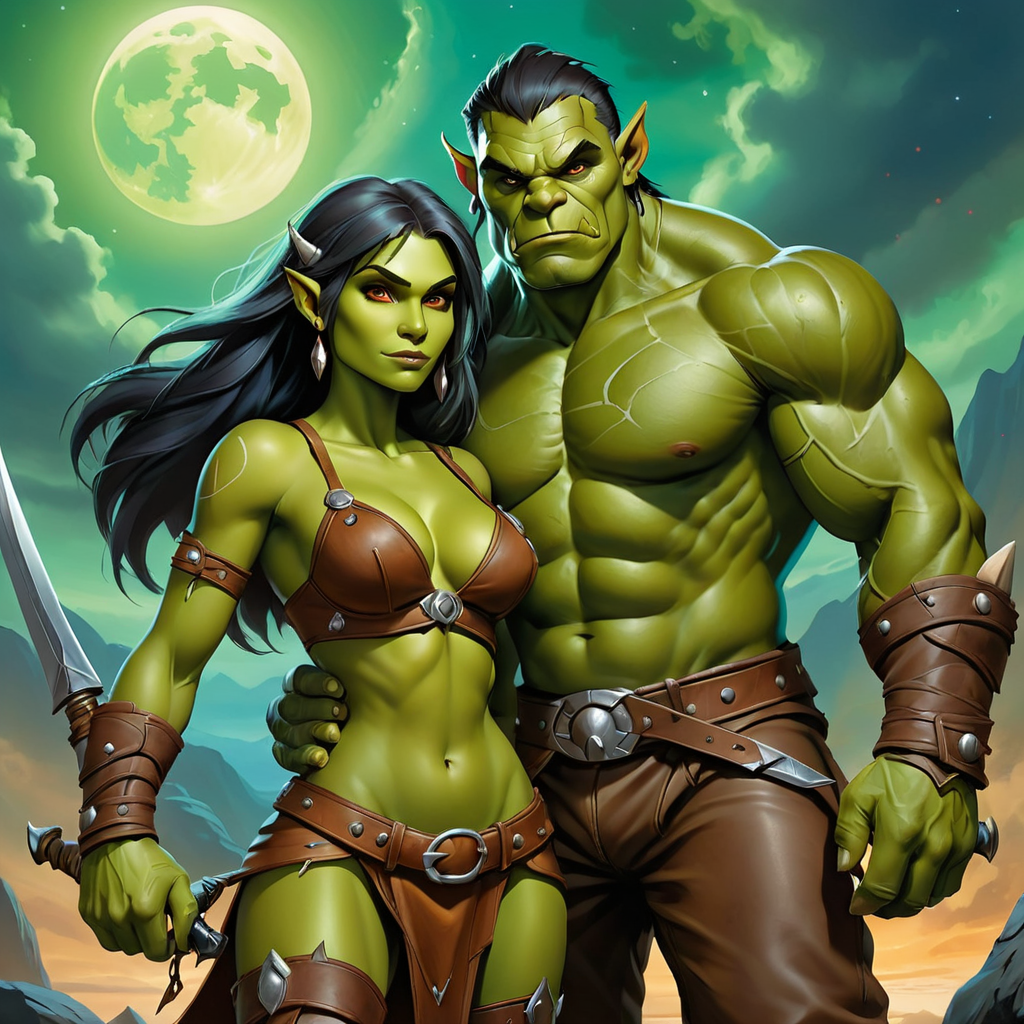
To the top

Clans

For generations, the orcs of Bellaria have lived in clan-based societies, each rooted in its own understanding of strength, honor, and the will of the death god Kaba-Kaar. These clans are more than family lines — they are living traditions shaped by blood, battle, and sacred memory.
Five hundred years ago, during the Age of Golden Fire, the orc clans were united under a mighty kingdom known as the Federations of the Dunes. It was a time of rare unity and cultural brilliance. The land flourished with temples, monuments, and strongholds — each a testament to the power, faith, and artistry of the sixteen great clans. At the center of this era stood a grand temple, where each clan’s banner was enshrined in sacred ceremony — richly embroidered, symbolically precise, and spiritually potent.
But that age did not last. Civil strife, betrayal, and the erosion of time brought the Federations to ruin. Today, nearly all of those temples lie broken and scattered across the dunes. Only one remains — a lone, weatherworn structure fiercely guarded by the clan whose lands it still graces. They claim guardianship over the ancient ways and the last true link to the orcish golden age.
Still, all sixteen clans endure. Some struggle to preserve their heritage, others have adapted or diverged, but all carry the echoes of a time when orcish unity carved cities into the sand and set banners blazing beneath desert suns.

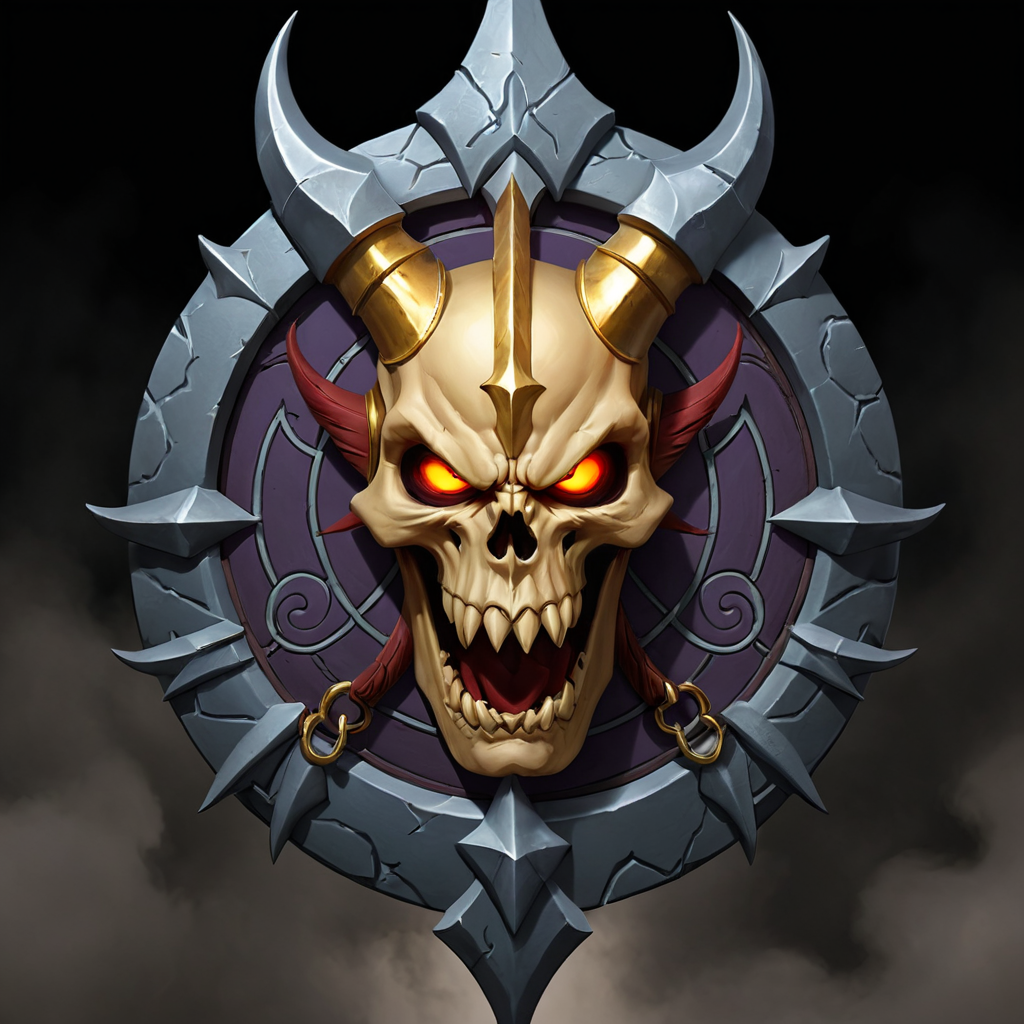

Grakk-Marr
This clan is known for their role as tomb tenders, ritual smiths, and ceremonial guardians. They follow the ancient faith of Kaba-Kaar in its purest form, viewing death as sacred order. Their tents are shaped like funerary shrines, draped in black and bone, with bone emblems sewn into the flaps. Structures are adorned with silent motifs—skull totems, tied bones, and painted symbols. Governance lies with a priest-led theocracy, guided by “The Ring of Death,” a circle of preserved elders consulted through ritual.

Top Down Token
Grakk-Marr Chaman
Right click on image to download PNG

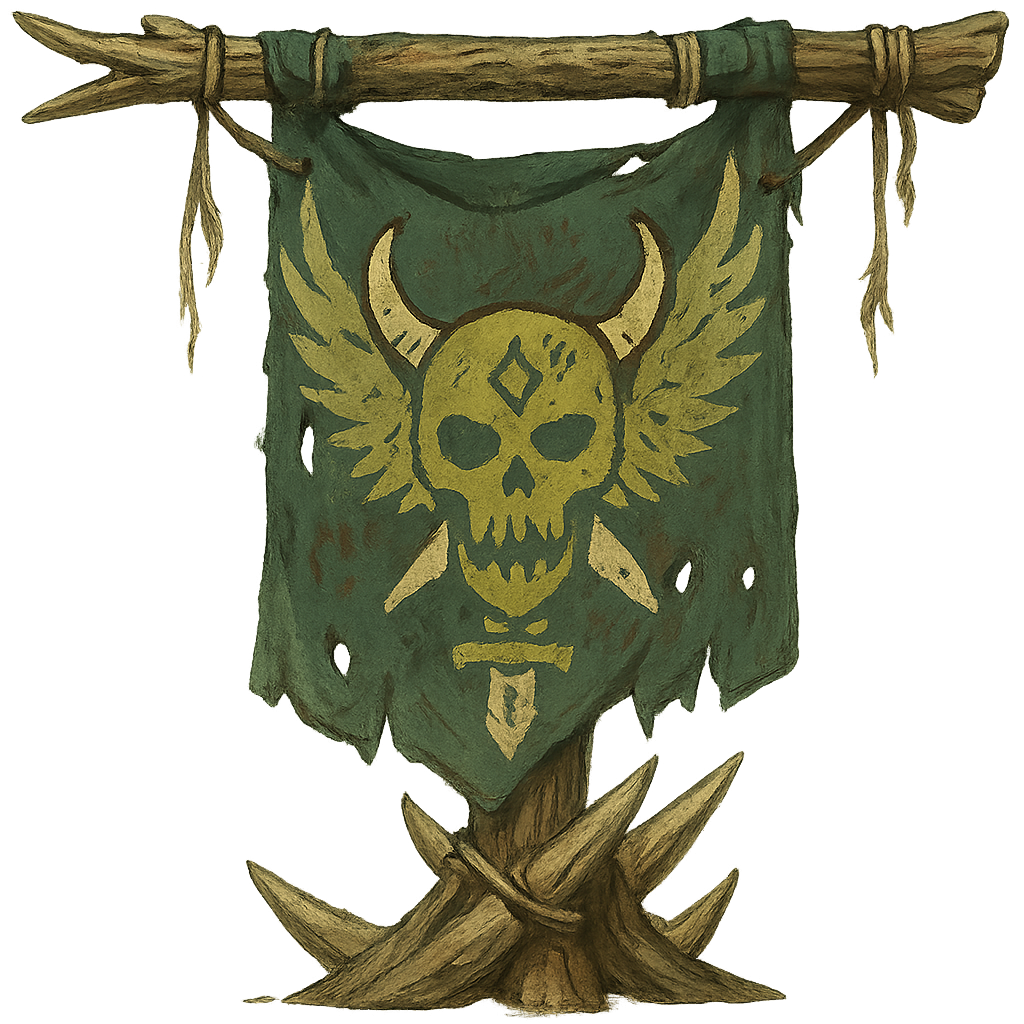
Tharn’gul
A militaristic clan marked by discipline and elite warriors. They see death as liberation through battle, a passage to the sacred fields of Kaarn’Vol. Their war tents are symmetrical, tightly bound with bone-plated ornamentation and training markers. Camp layouts are precise and sacred; leadership belongs to those who prove themselves through strategy and blood.
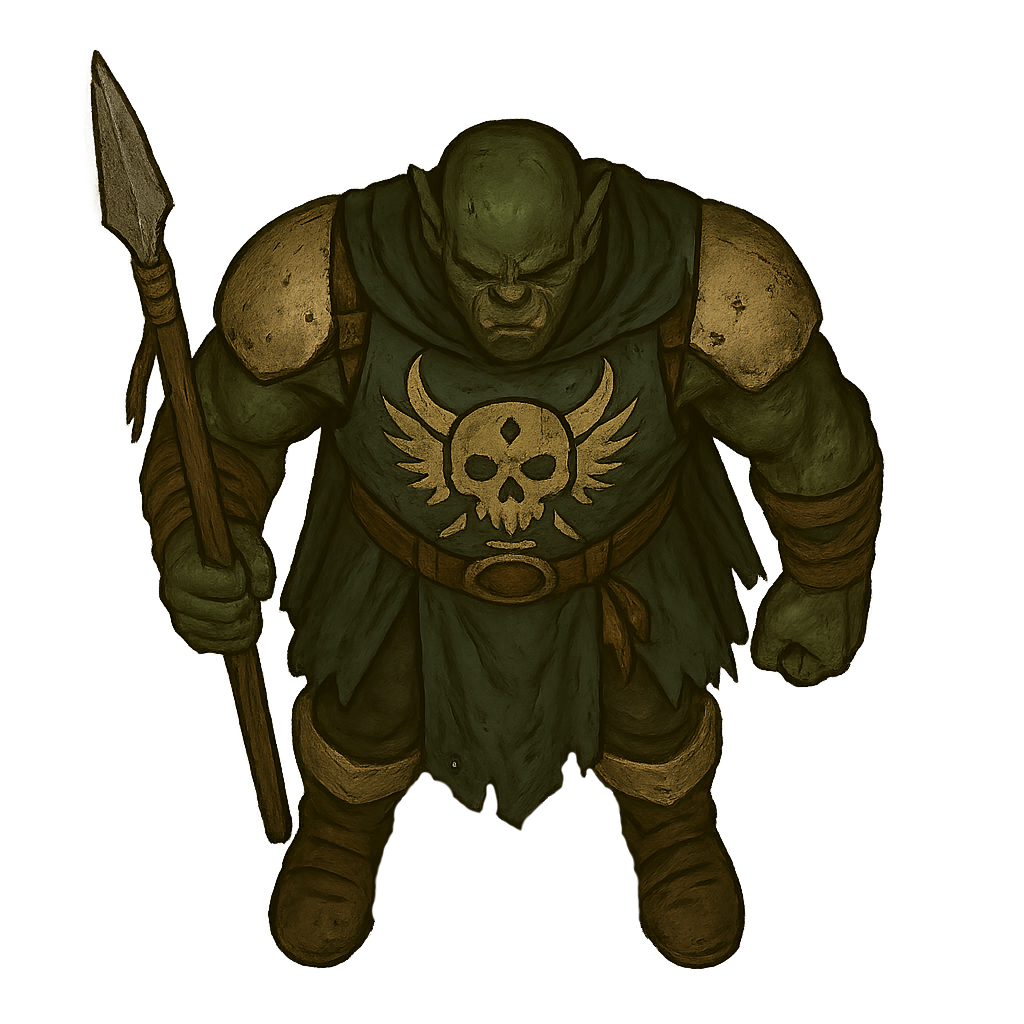
Top Down Token
Tharn’gul Guard
Right click on image to download PNG
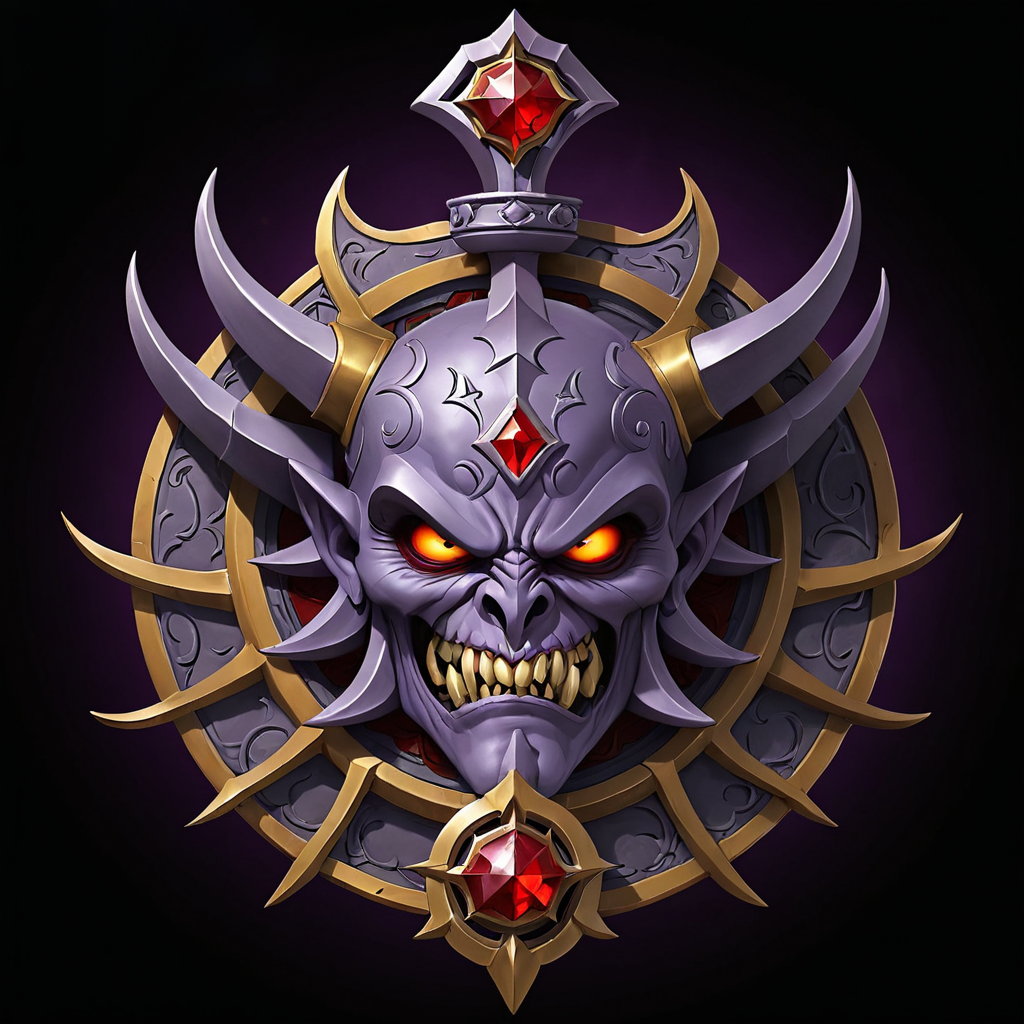

Zuur-Khaal
Nomads of the desert, masters of embalming, medicine, and long-distance survival. To them, death is a passage through sand and time. Their caravans are ringed with bone-framed tents in sand tones, marked with spirit charms and wind cloths. Preserved ancestors are carried within special ritual tents, and leadership flows through mummified councils interpreted by living guardians.
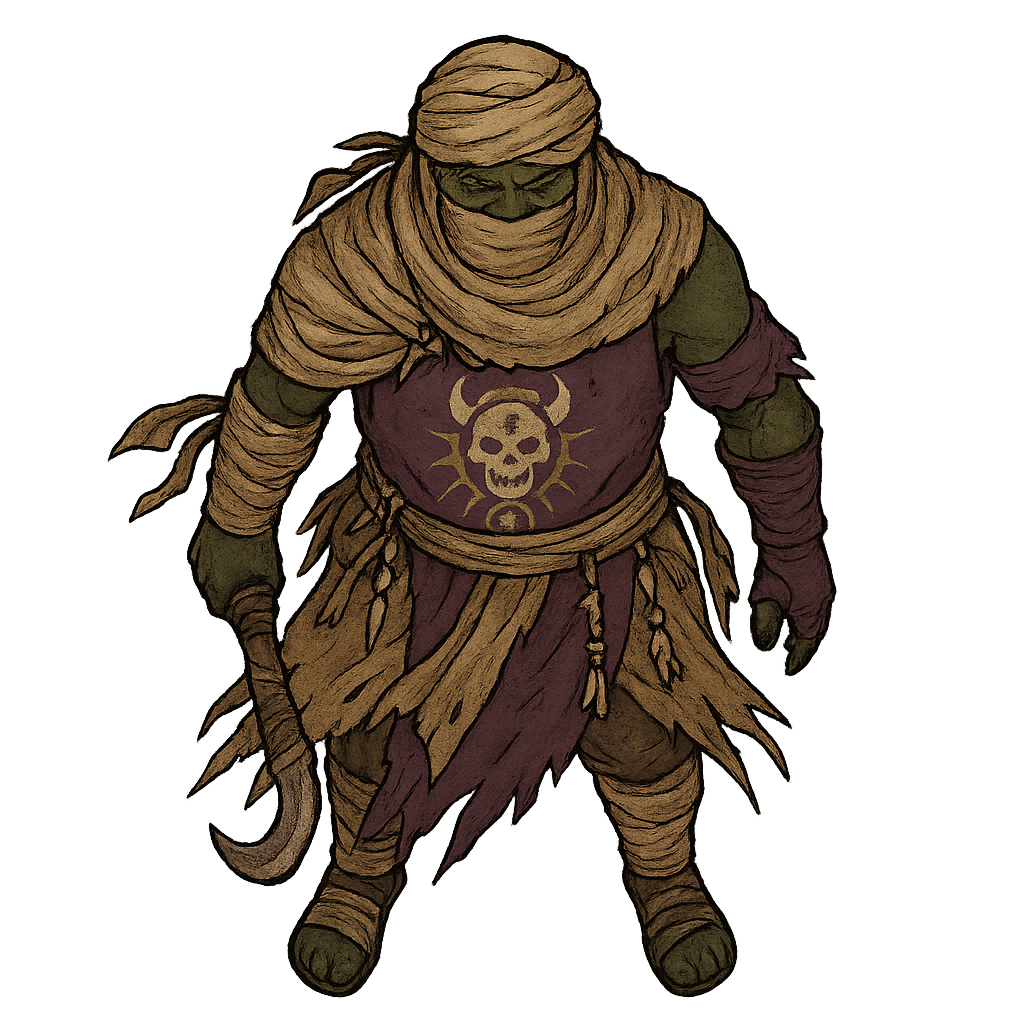
Top Down Token
Zuur-Khaal Tracker
Right click on image to download PNG
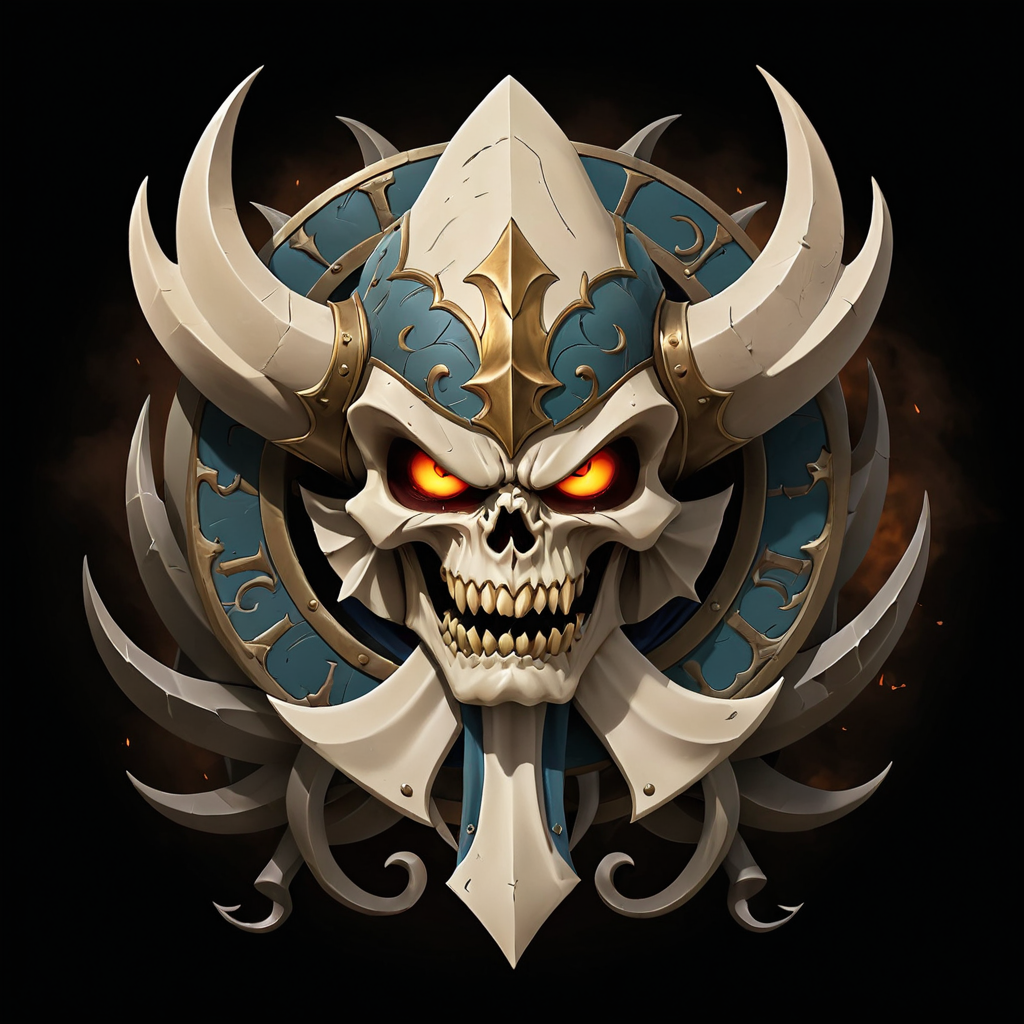

Vrak’Nir
Mountain orcs who craft with raw hide and bone to mimic the strength of stone. They believe death is memory pressed into form. Their tents are heavy with layered hides, reinforced to withstand wind and time, etched with runes and family lines. Loyalty is carved not in rock, but in bone, hide, and oath.
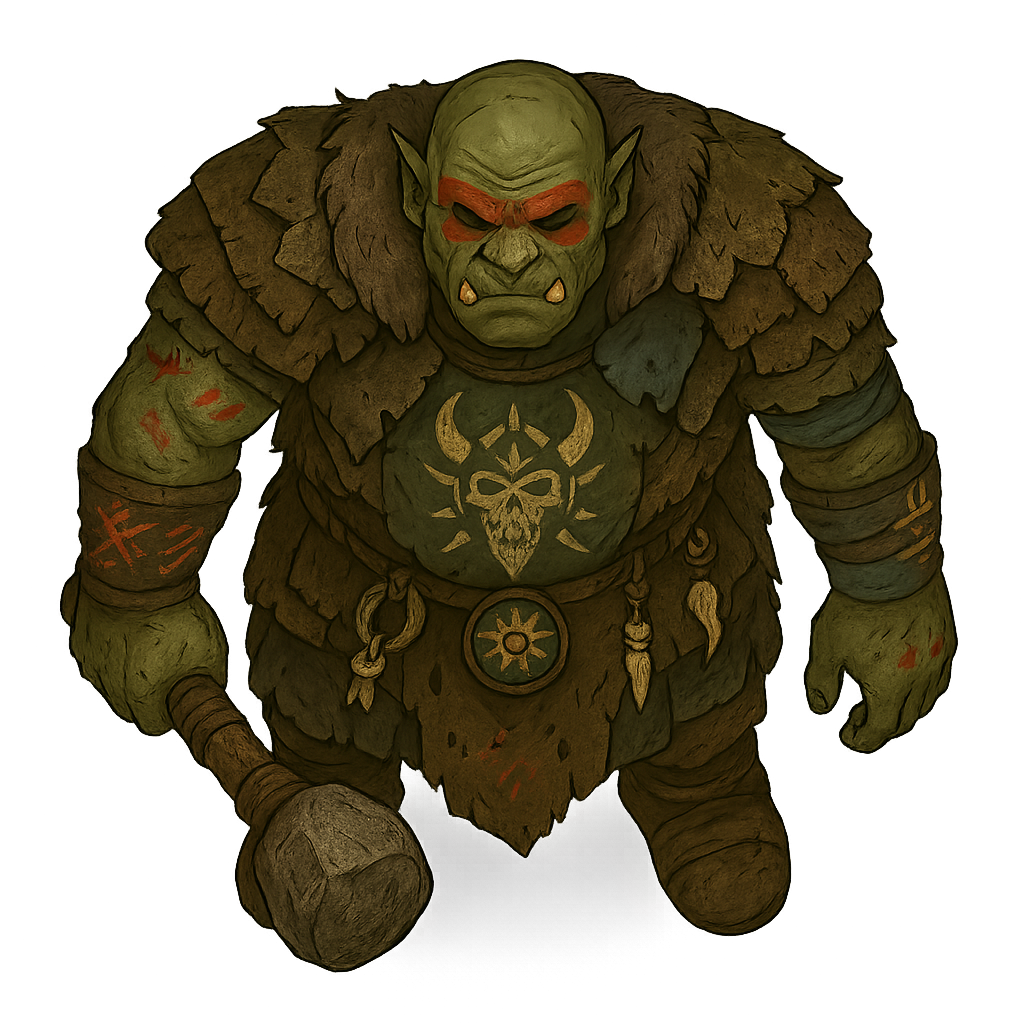
Top Down Token
Vrak’Nir Stone masonry
Right click on image to download PNG


Kaarn’Ghuz
Tied to fire, transformation, and smithing. Death is the sacred burning away of the old. Their tents are scorched at the edges and marked with soot symbols, lined with black and ember-red fabric. Tools and weapons hang as charms, and clan rites are held by priest-smiths who lead through ritual contest and creation.
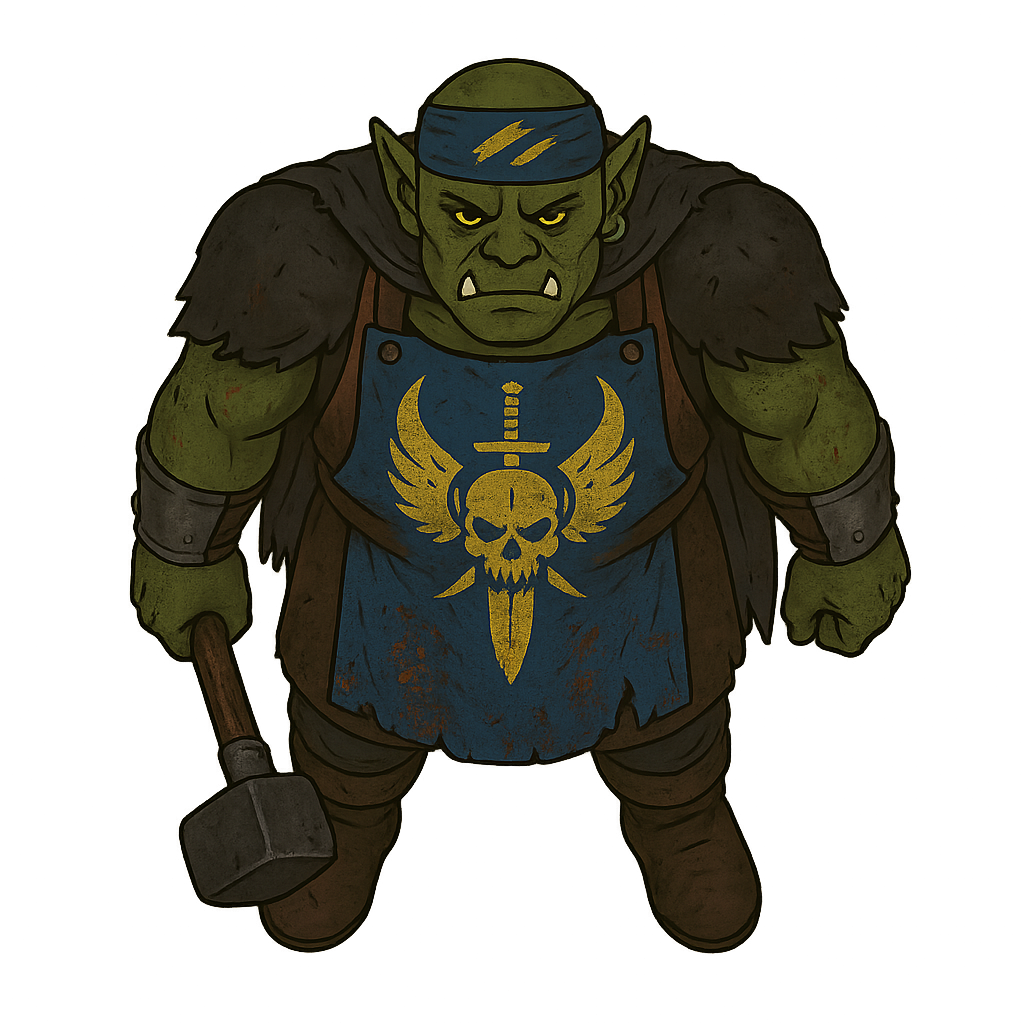
Top Down Token
Kaarn’Ghuz Black smith
Right click on image to download PNG
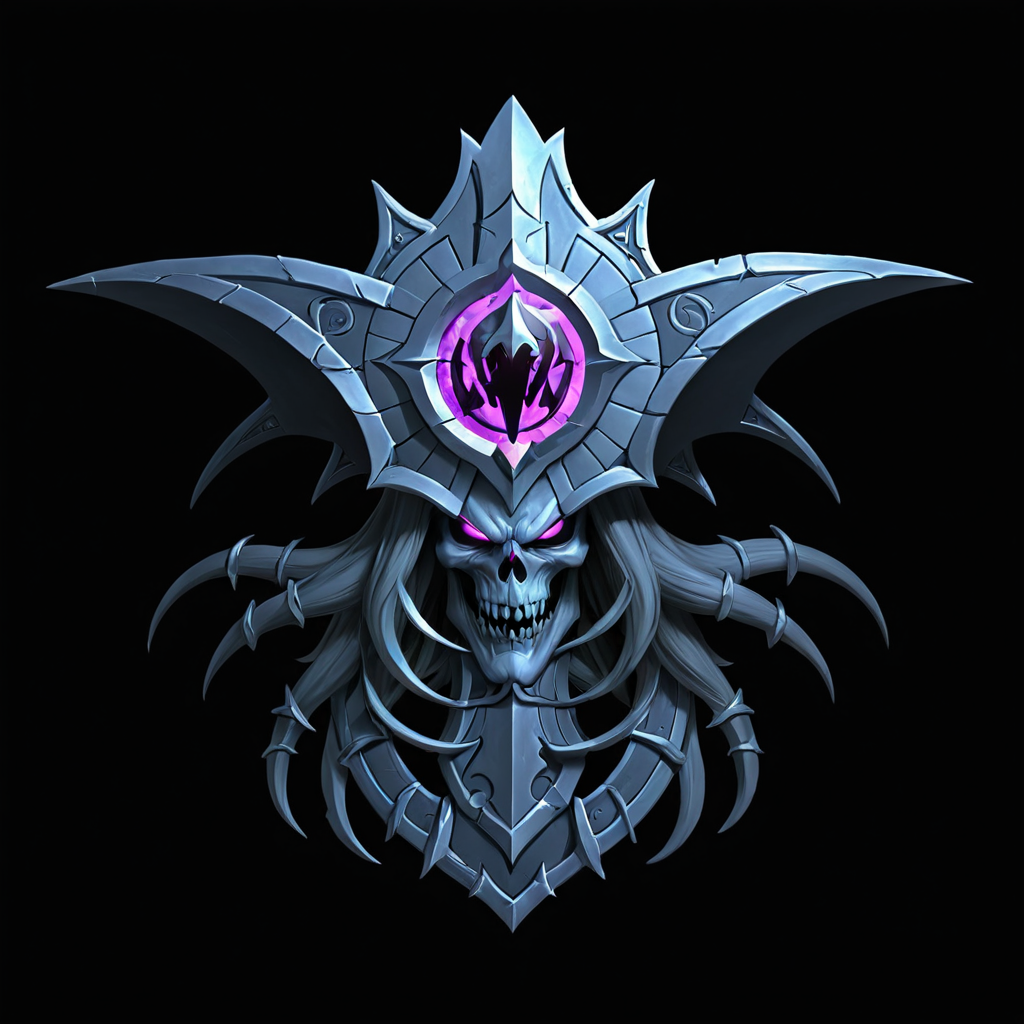
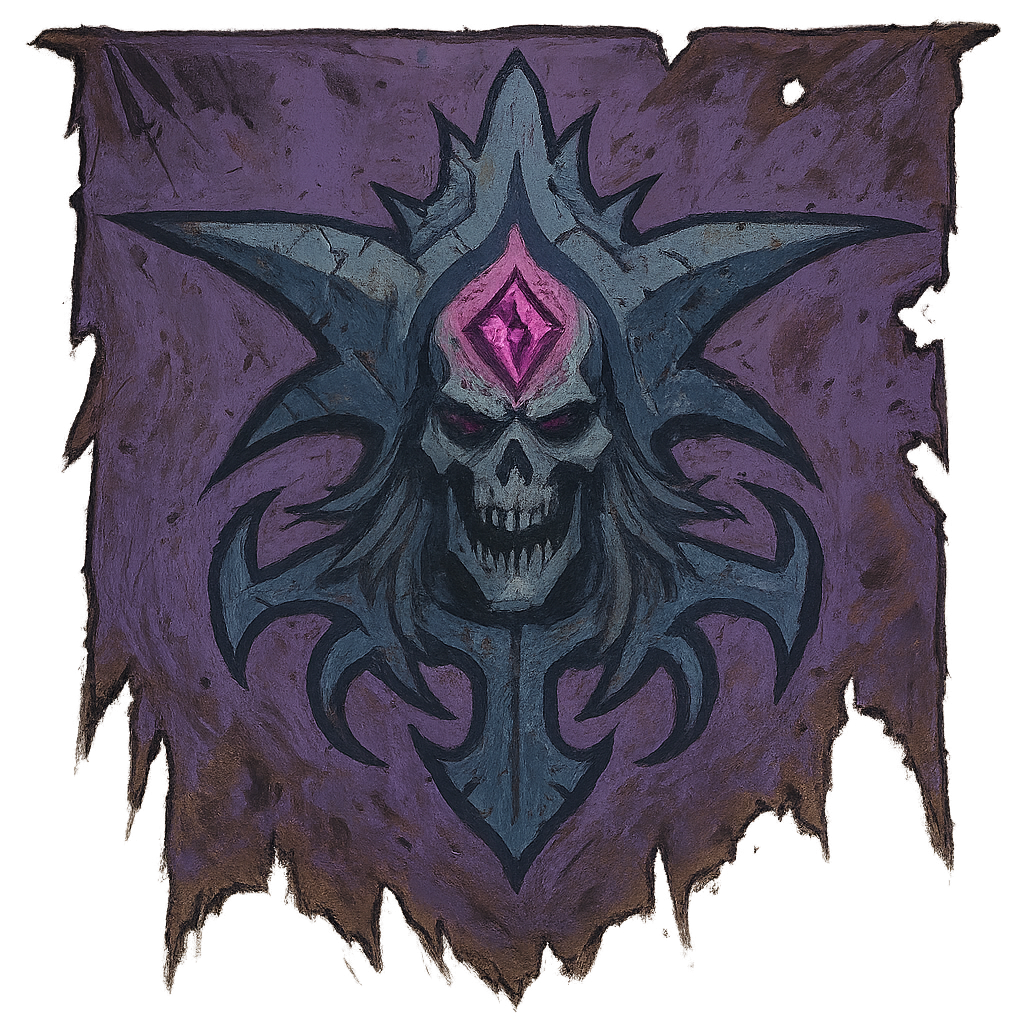
Thok’Maruun
Listeners of dreams and interpreters of death’s whispers. Their tents are round and layered like cocoons, hung with bone mobiles, horns, and night-chimes. Painted symbols across their sleeping hides serve both protection and divination. They are ruled by an oracle circle, each member proven through recurring visions.
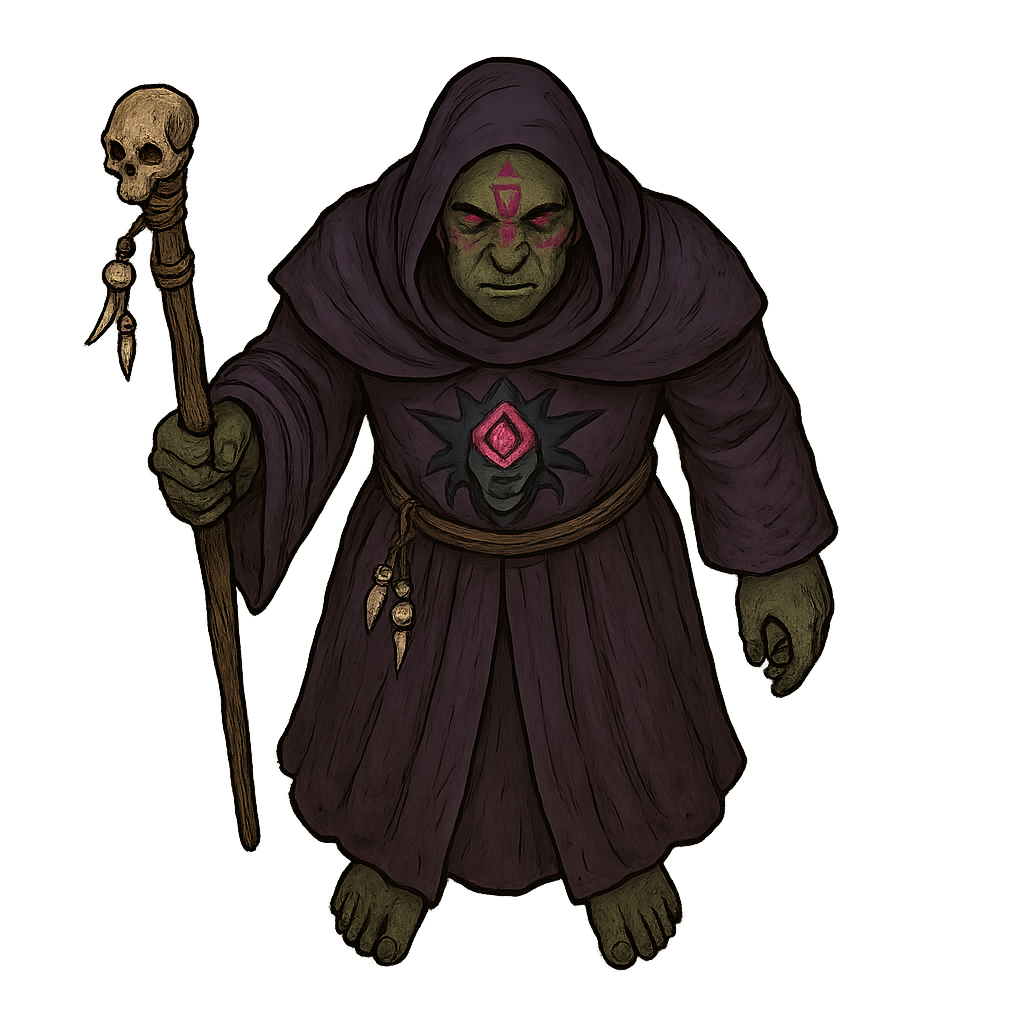
Top Down Token
Thok’Maruun Chaman
Right click on image to download PNG
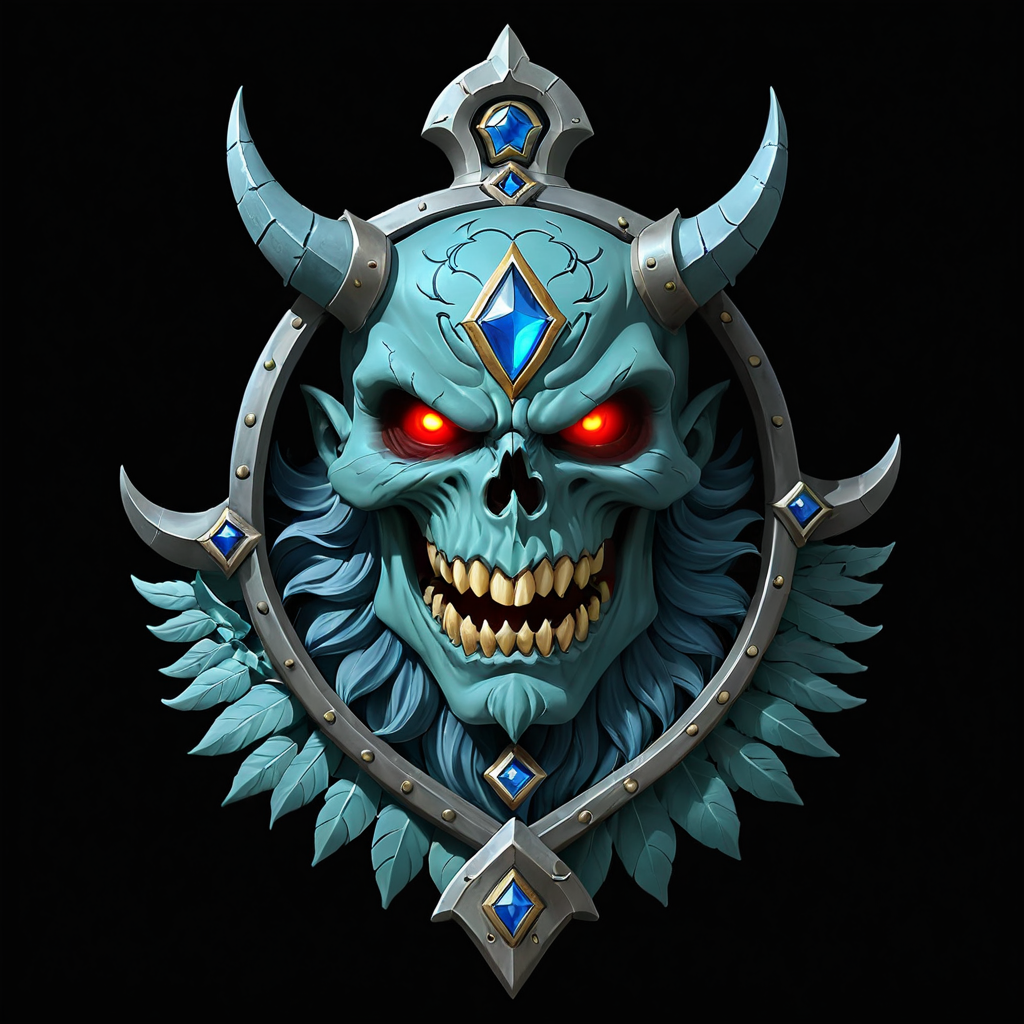

Ug’Kotha
Northerners who value preservation and stillness. Death is rest, not violence. Their tents are layered in hide and ice-bleached cloth, decorated with frost runes and bone icicles. Clan elders—those who have endured many winters—lead through wisdom and seasonal memory.
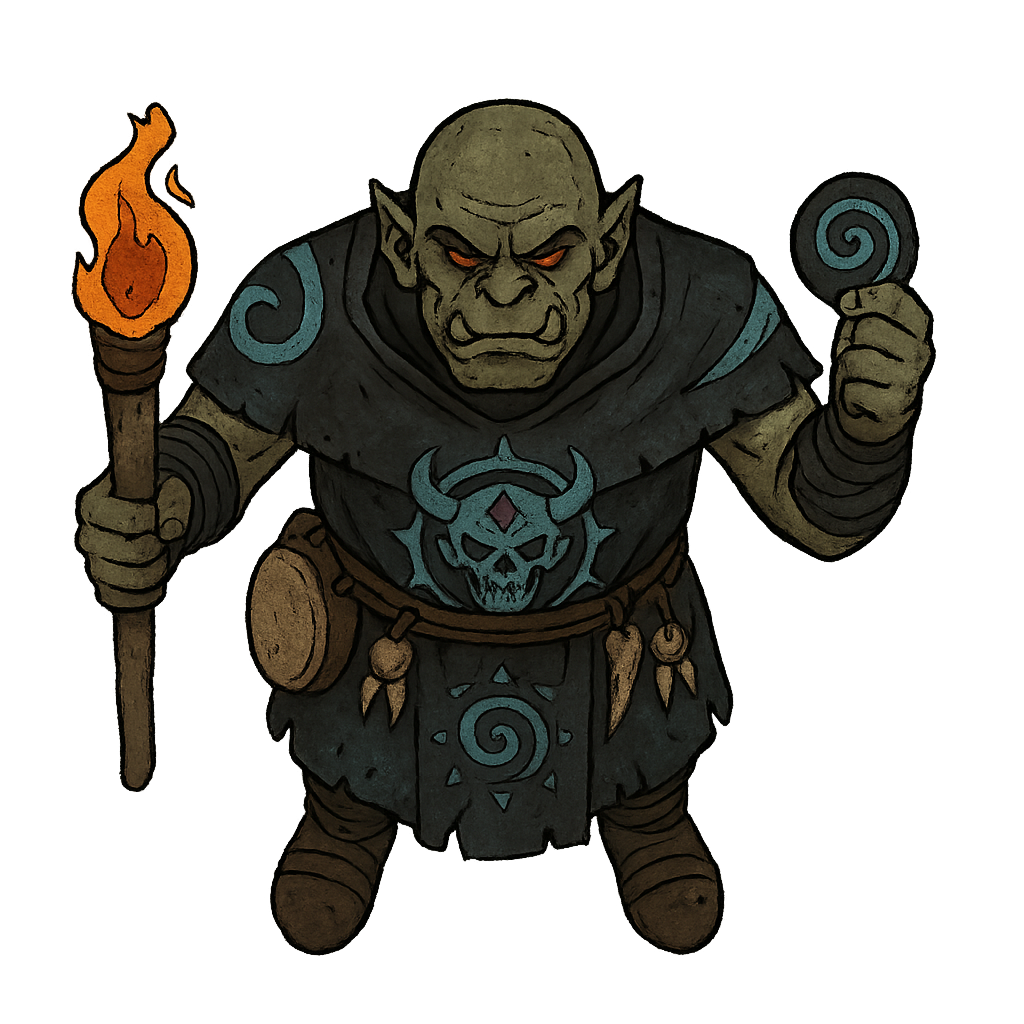
Top Down Token
Ug’Kotha Chaman
Right click on image to download PNG
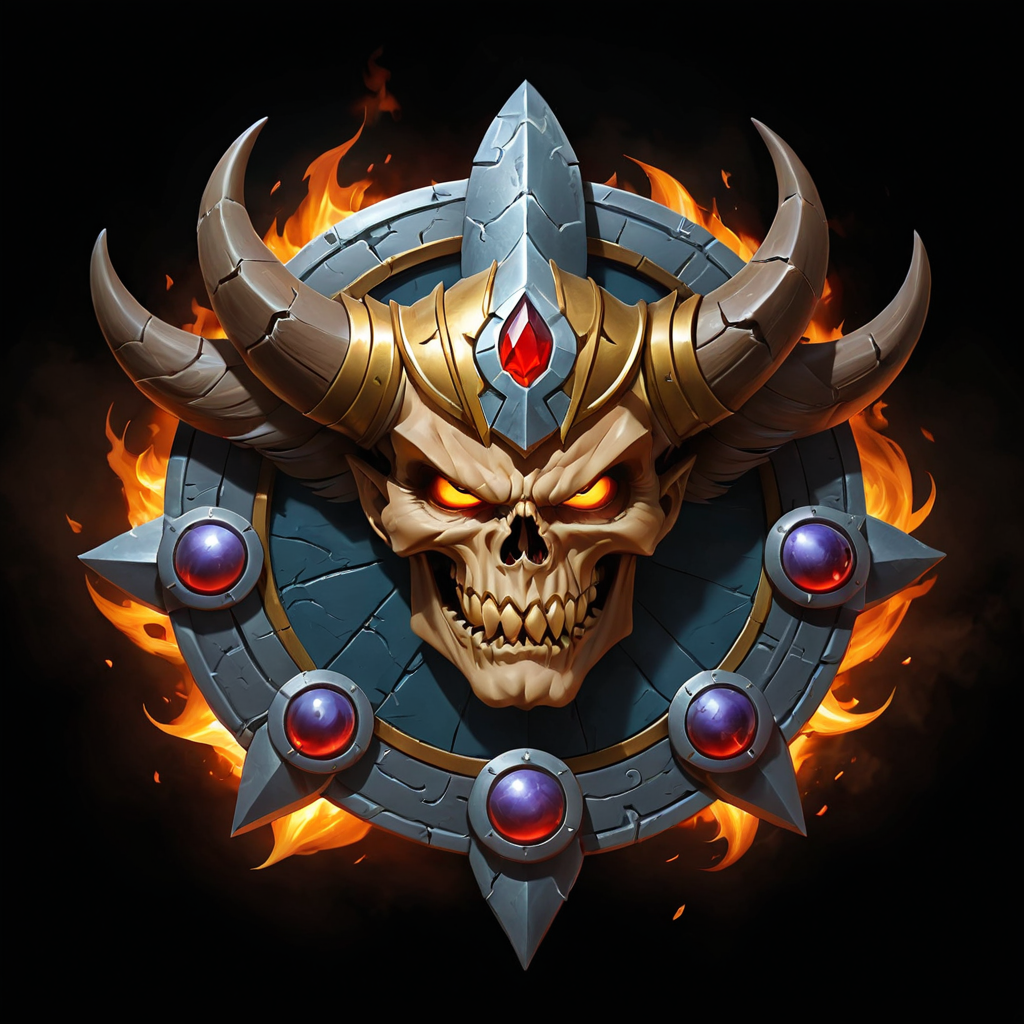

Druk-Maath
Nomadic traders and ritualists. Death walks with them, not behind. Their spiral-patterned camps are filled with rhythm—bone drums, walking chants, and marked tents that shift with the caravan. Leadership is flexible, chosen during journeys by those with proven insight and age.
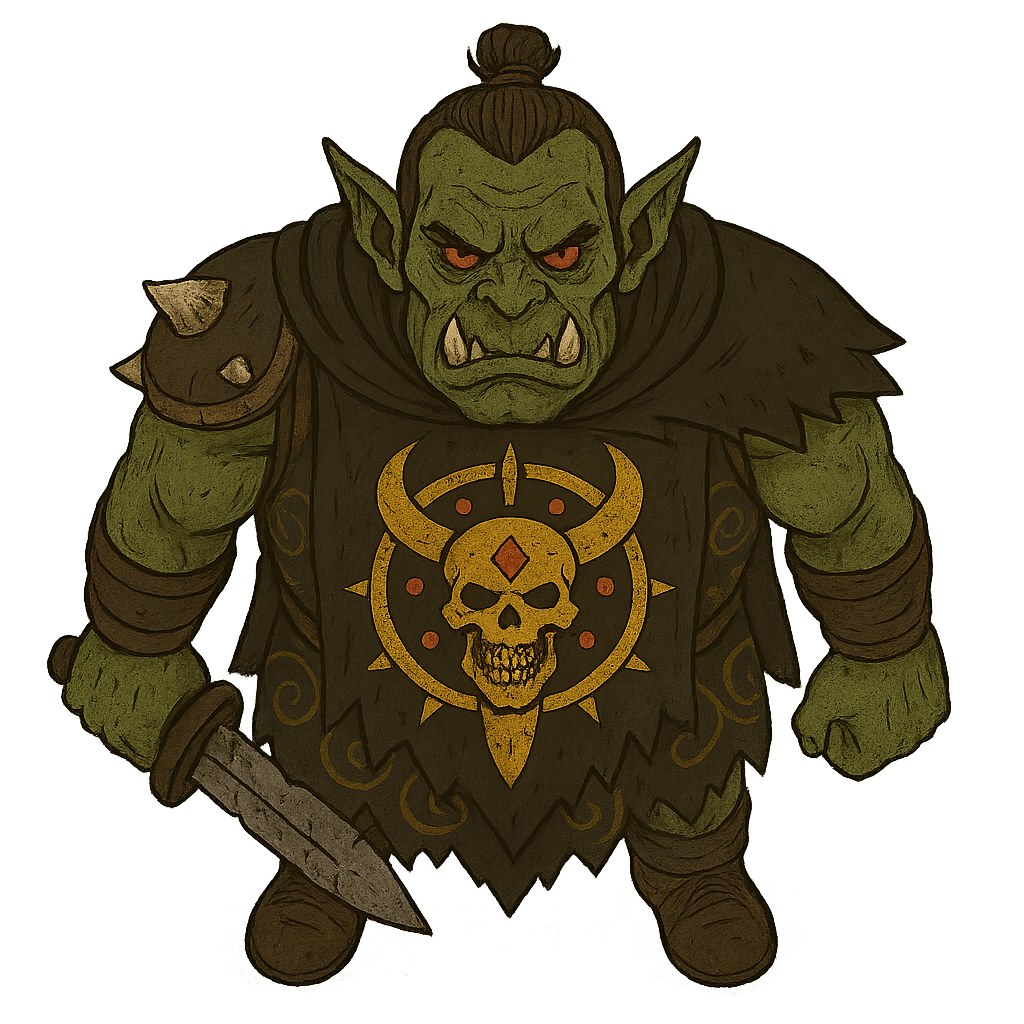
Top Down Token
Druk-Maath Warrior
Right click on image to download PNG

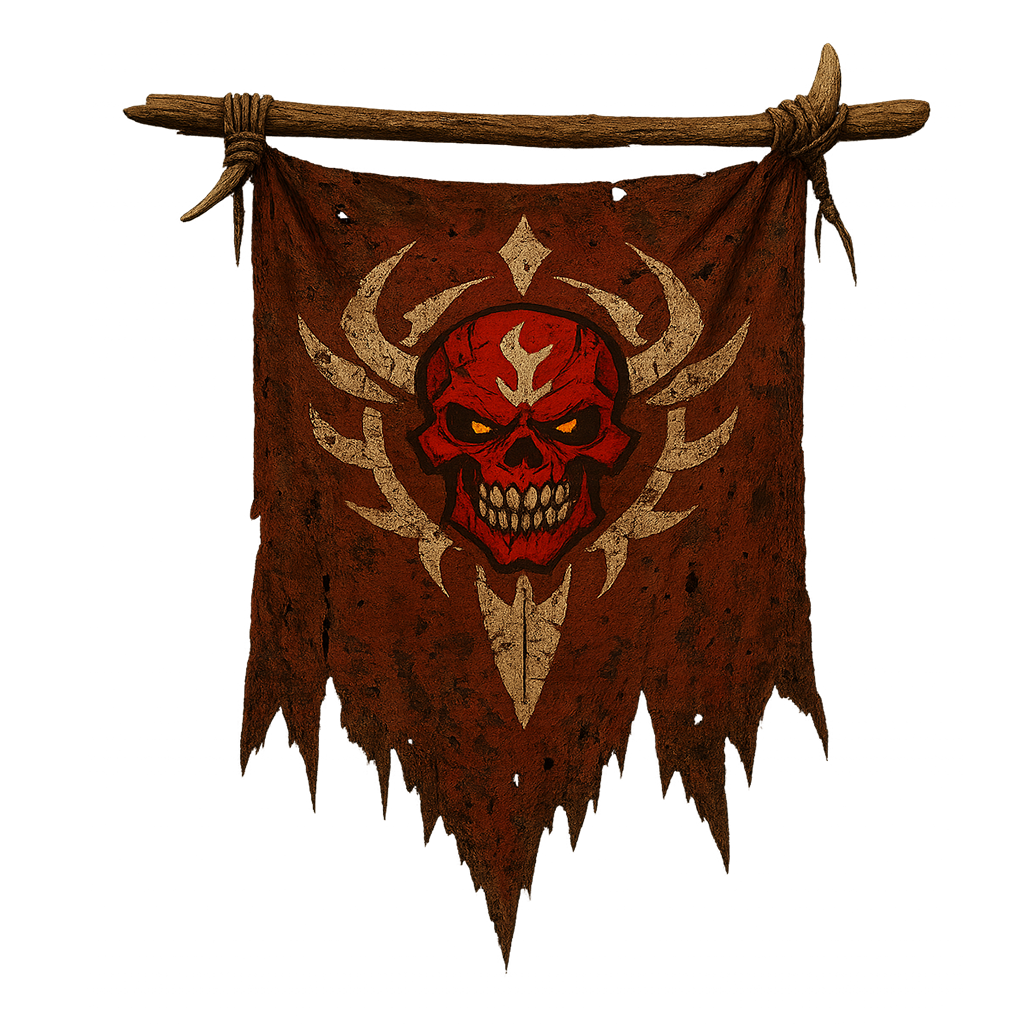
Khuur’Thok
Sun-watchers who believe death is a return to light. Their tents shine in golds and reds, with horns and radiant banners rising from their peaks. Solar symbols mark their garments, weapons, and shelters. Led by sun-priests who read eclipses and guide the clan through celestial rhythms.
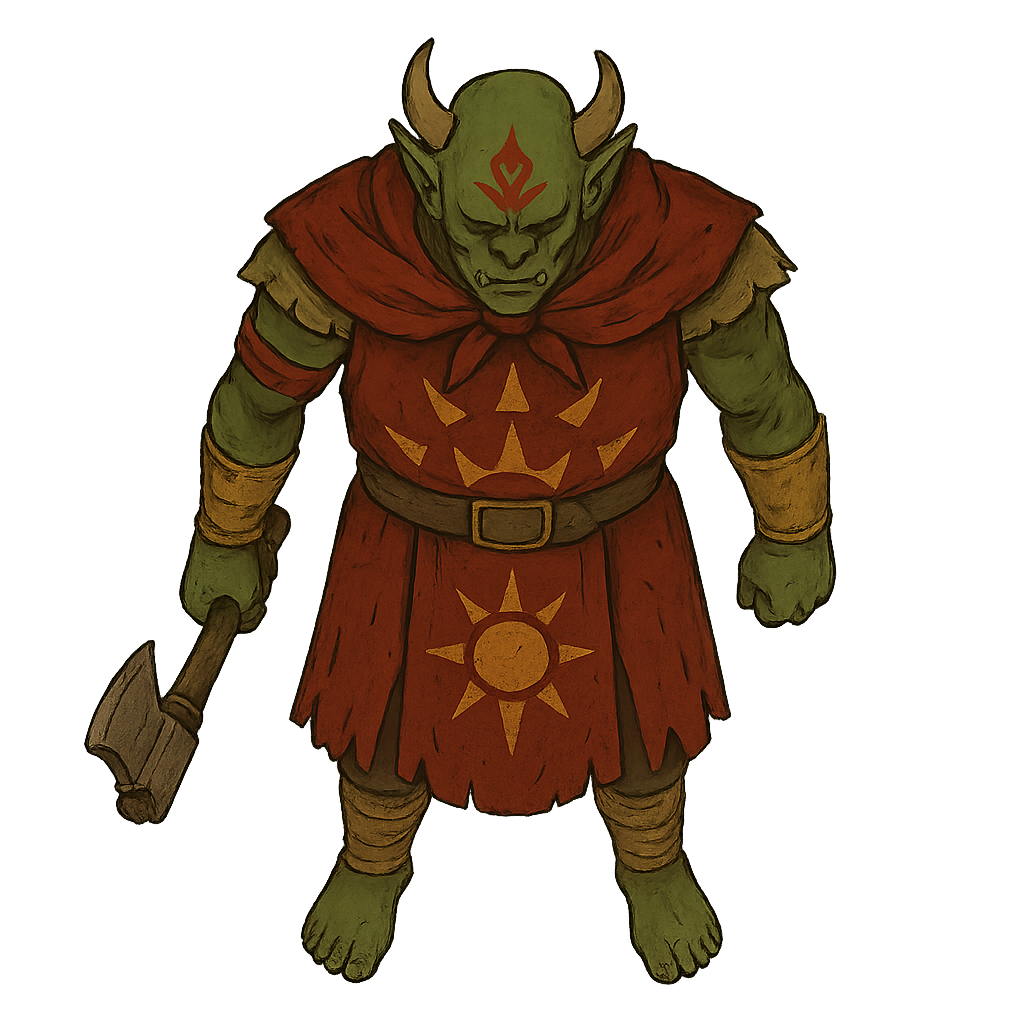
Top Down Token
Khuur’Thok Priest
Right click on image to download PNG

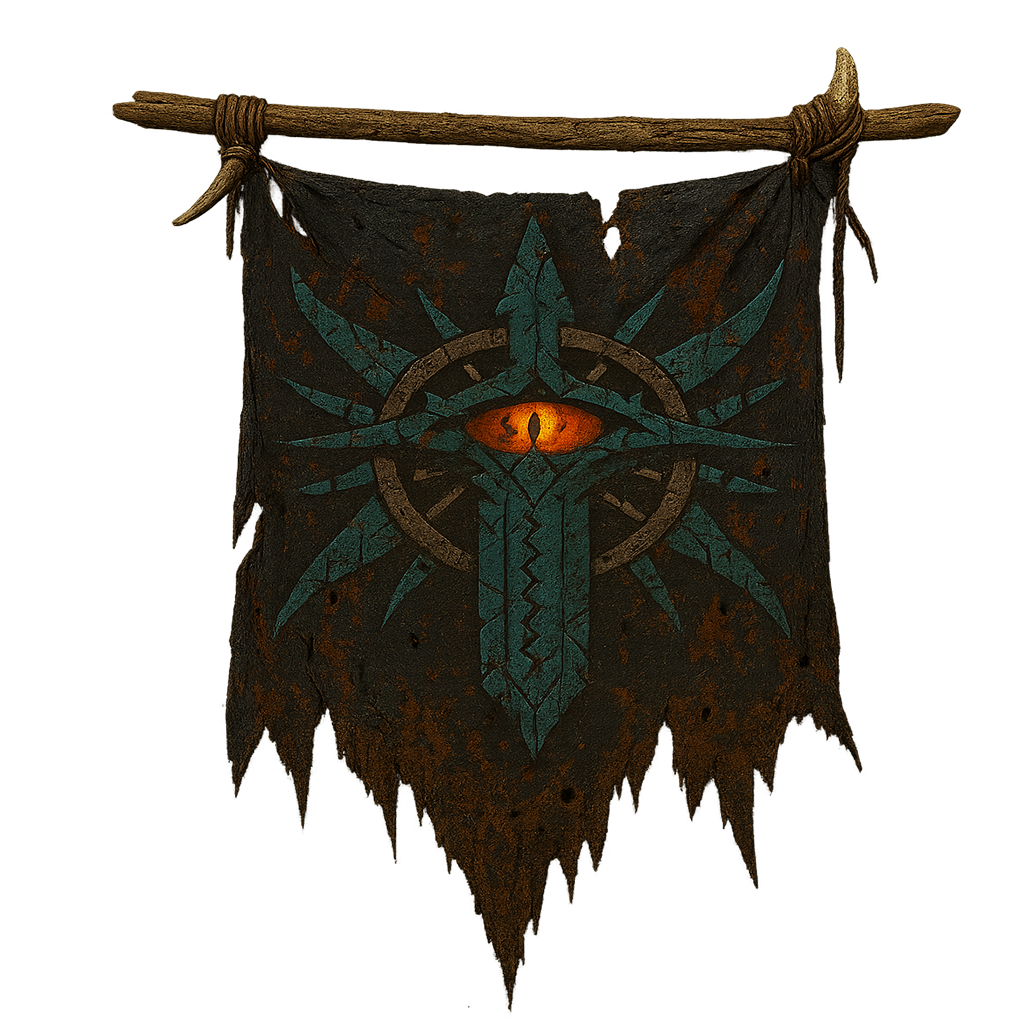
Gorm-Draz
Secretive seekers of unseen knowledge. Death is a gate to deeper truths. Their tents are mathematically precise and patterned with moons, eyes, and sound threads. Artifacts hum softly in certain light. Governance rotates among Seers who interpret visions from mirror bowls and lunar signs.
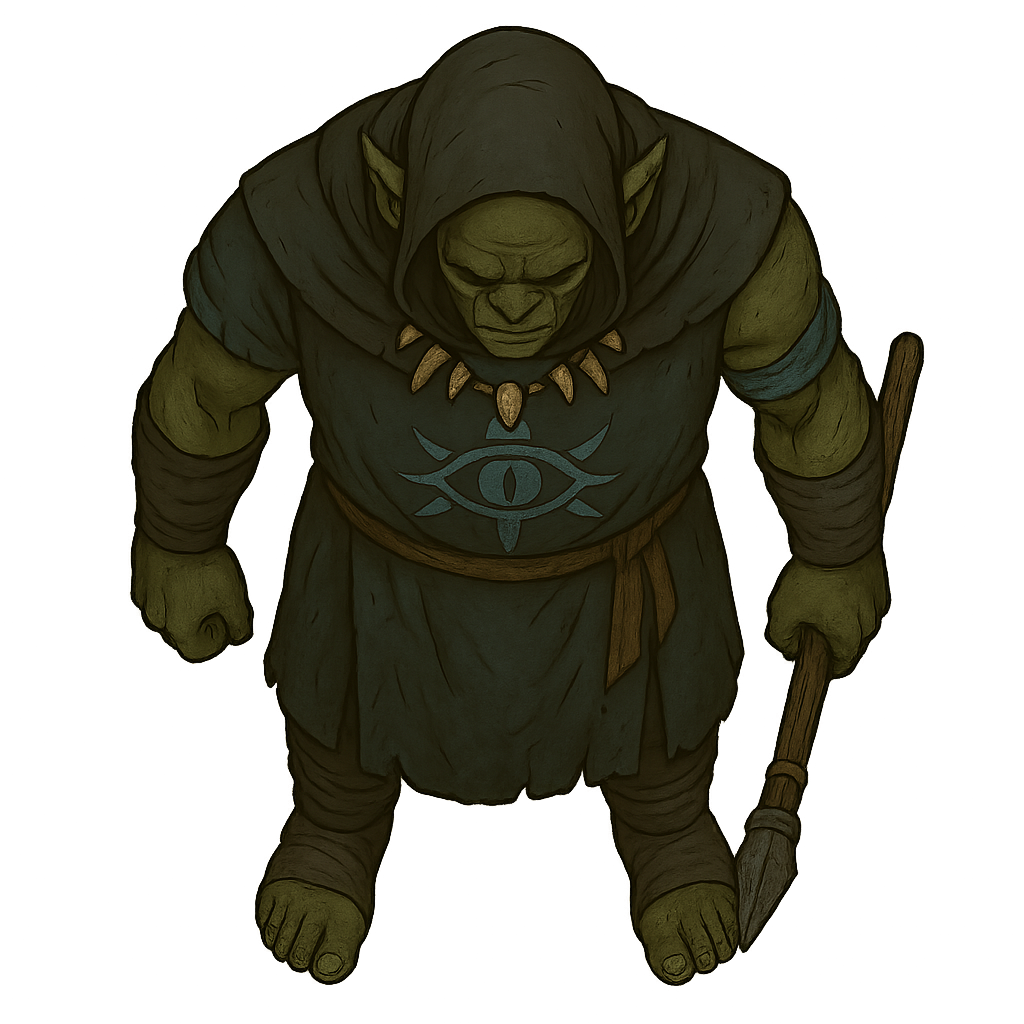
Top Down Token
Gorm-Draz Trapper
Right click on image to download PNG

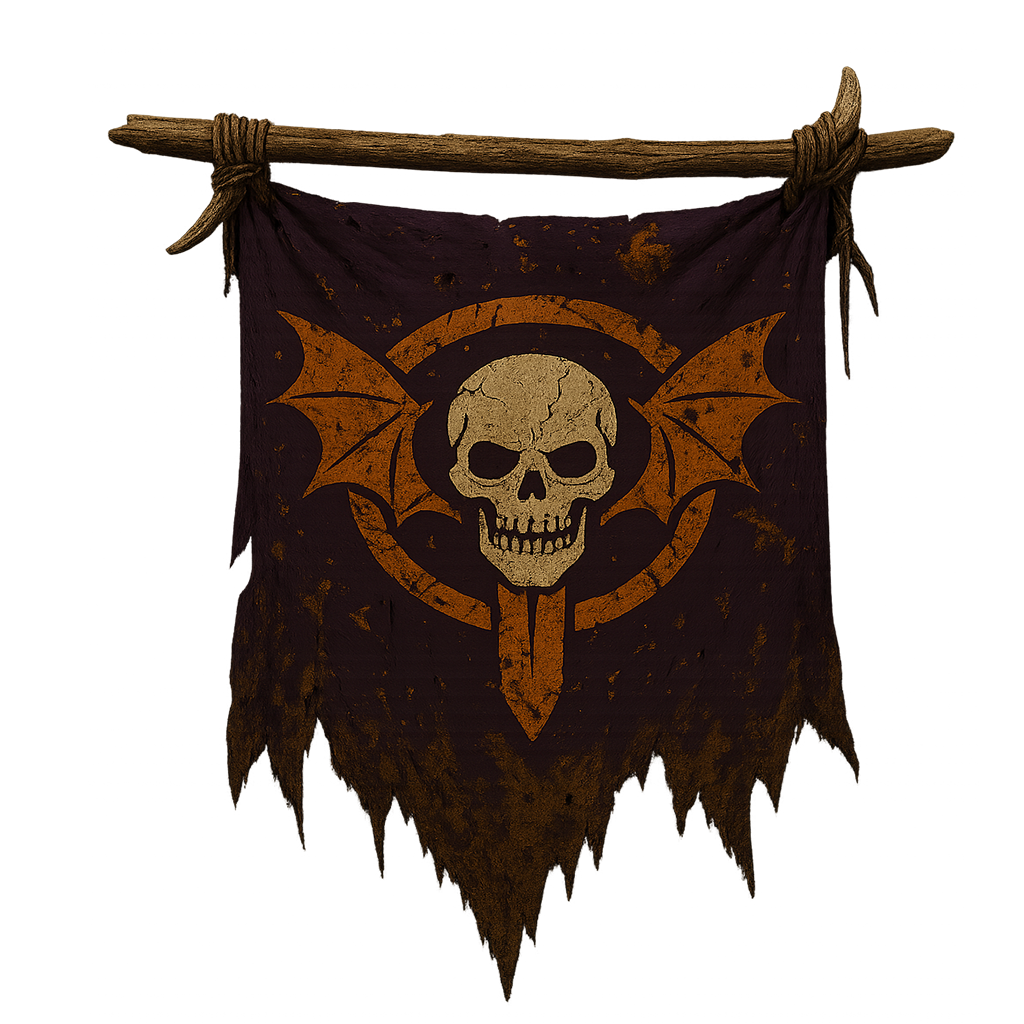
Nozz-Vhaar
Dwellers of caves and dusk. Death is the stillness between heartbeats. Their tents are low and shadowed, often within or near natural caverns. Bone wings and silence charms hang at every entry. Decisions are made under moonlight in ritual circles where silence holds more meaning than words.
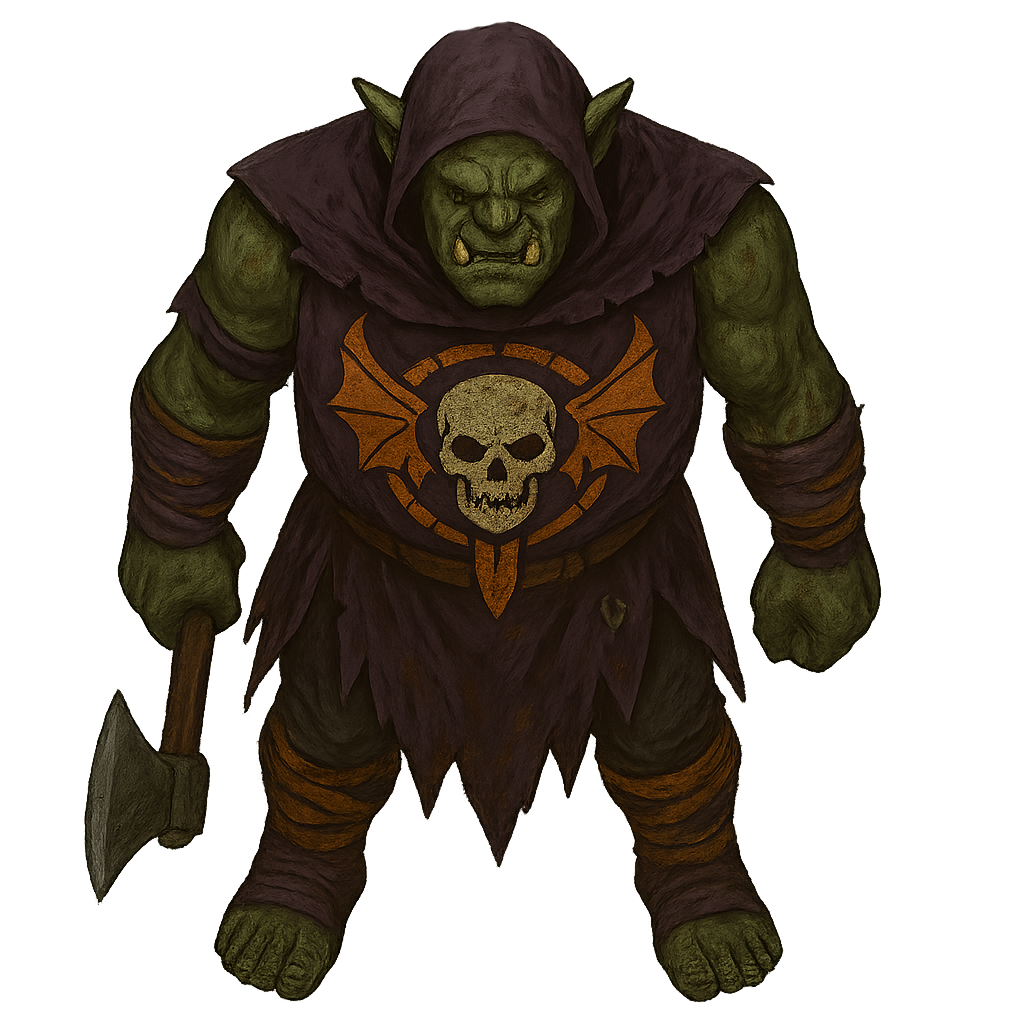
Top Down Token
Nozz-Vhaar Guard
Right click on image to download PNG


Ghul-Takar
A fortified clan of siege experts and death-defiers. They see death as something to delay through strength. Their tents are shield-like in shape, layered with bone frames and etched curses. War-constructs and trial weapons line the outer flaps. Rule is held by a war-smith council that tests all tools in battle.
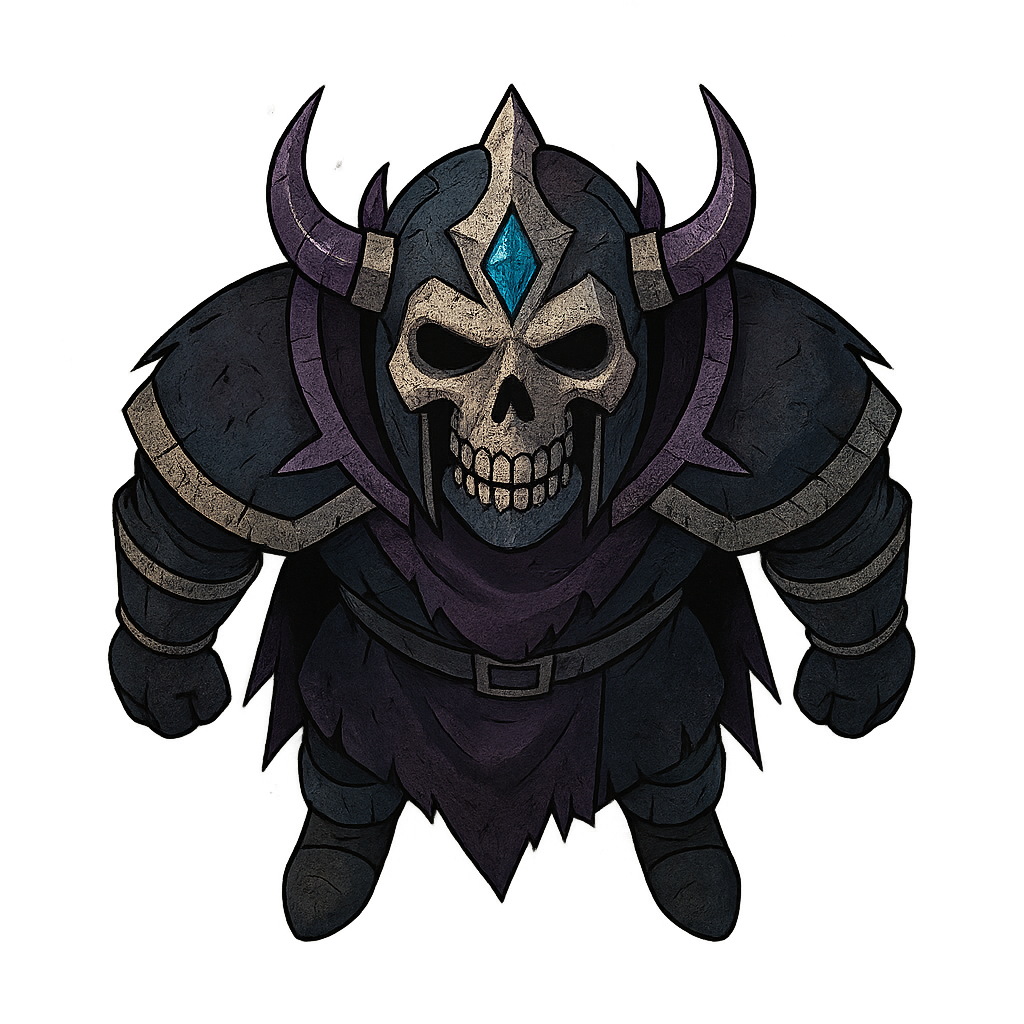
Top Down Token
Ghul-Takar General
Right click on image to download PNG
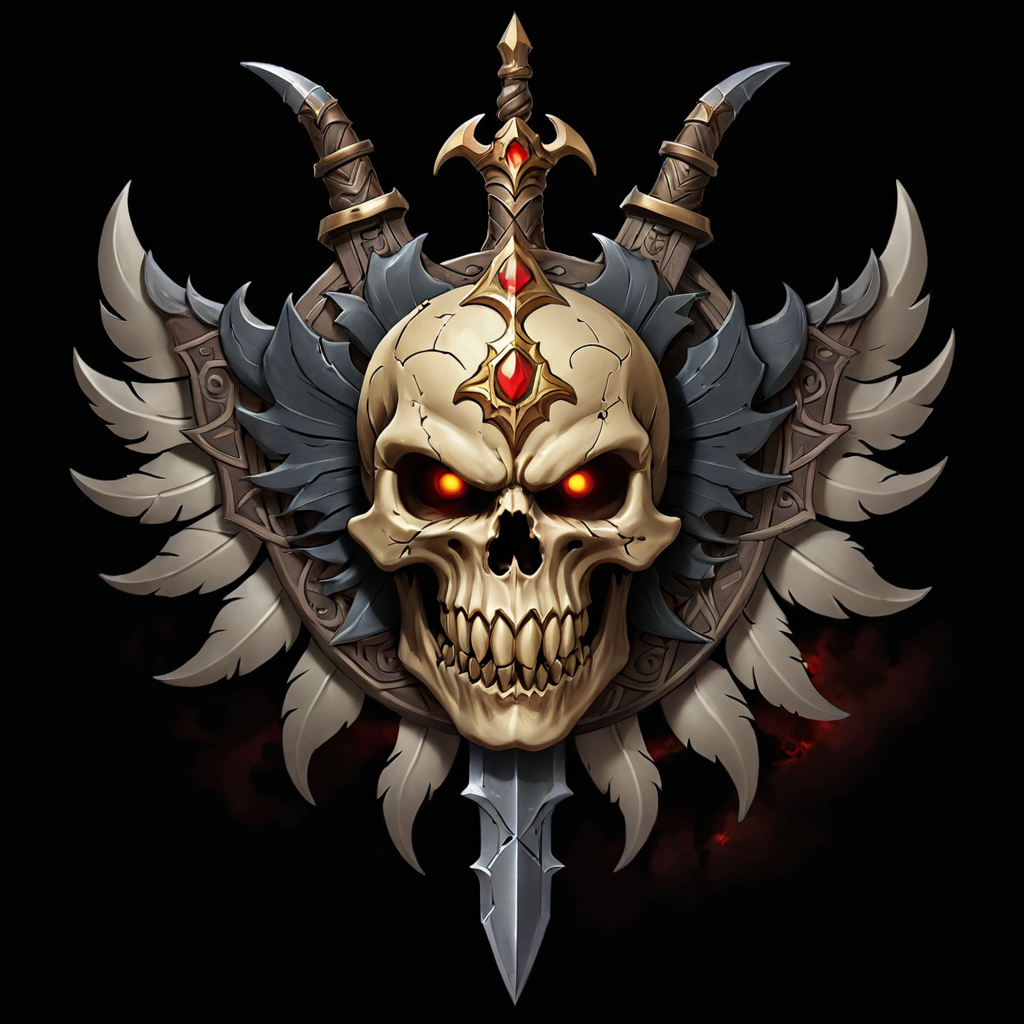

Korr-Mazhul
Aerial tacticians and skeletal crafters who see death as legacy in flight. Their tents rise like wings—wide, high-arched, and decorated with feather-bone structures. Banners stretch between poles like airborne sigils. Leadership is earned through acts remembered in sky-song and ritual display.
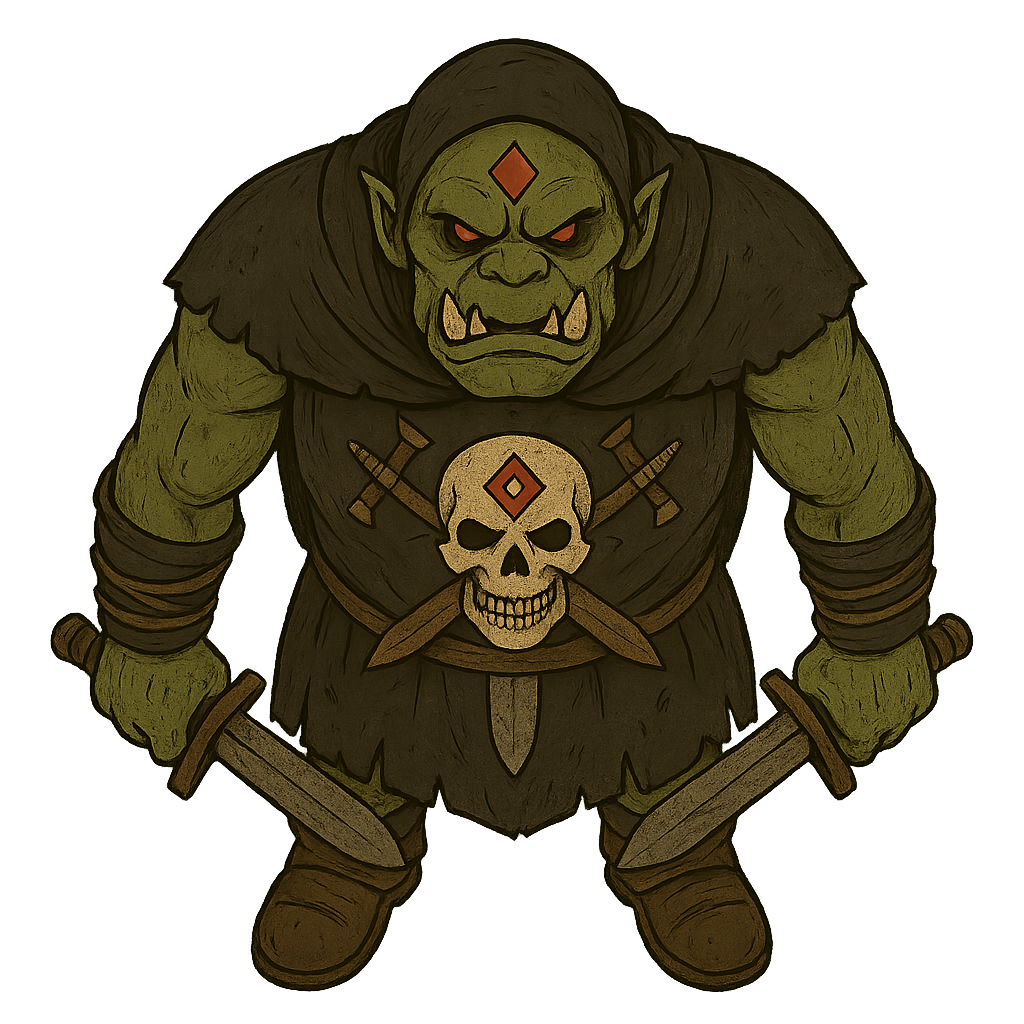
Top Down Token
Korr-Mazhul Guard
Right click on image to download PNG


Varn-Kath
Quiet archivists and memory-keepers. Death is a story passed down in signs and fragments. Their tents are soft-angled and script-covered, with hanging cloth markers embroidered with names and mottos. Governance is handled by scribes who preserve lineage and correct ceremonial detail.
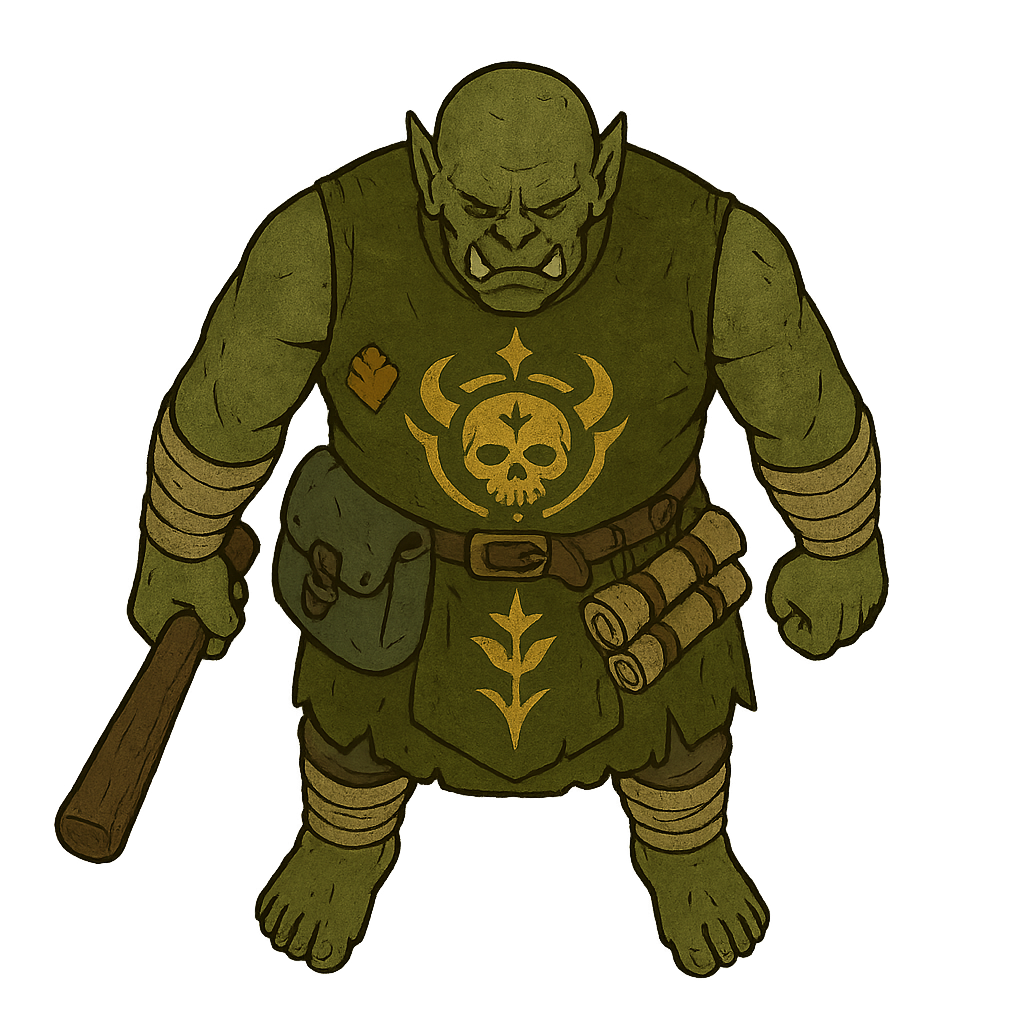
Top Down Token
Varn-Kath Guard
Right click on image to download PNG


Mraag-Tor
Honorable warriors clad in green and gold. Death is part of the golden cycle: forge, field, flame. Their tents are balanced in shape and finely ornamented, used for feasting, council, and celebration of the fallen. Champions are elected through games and tests of strength.
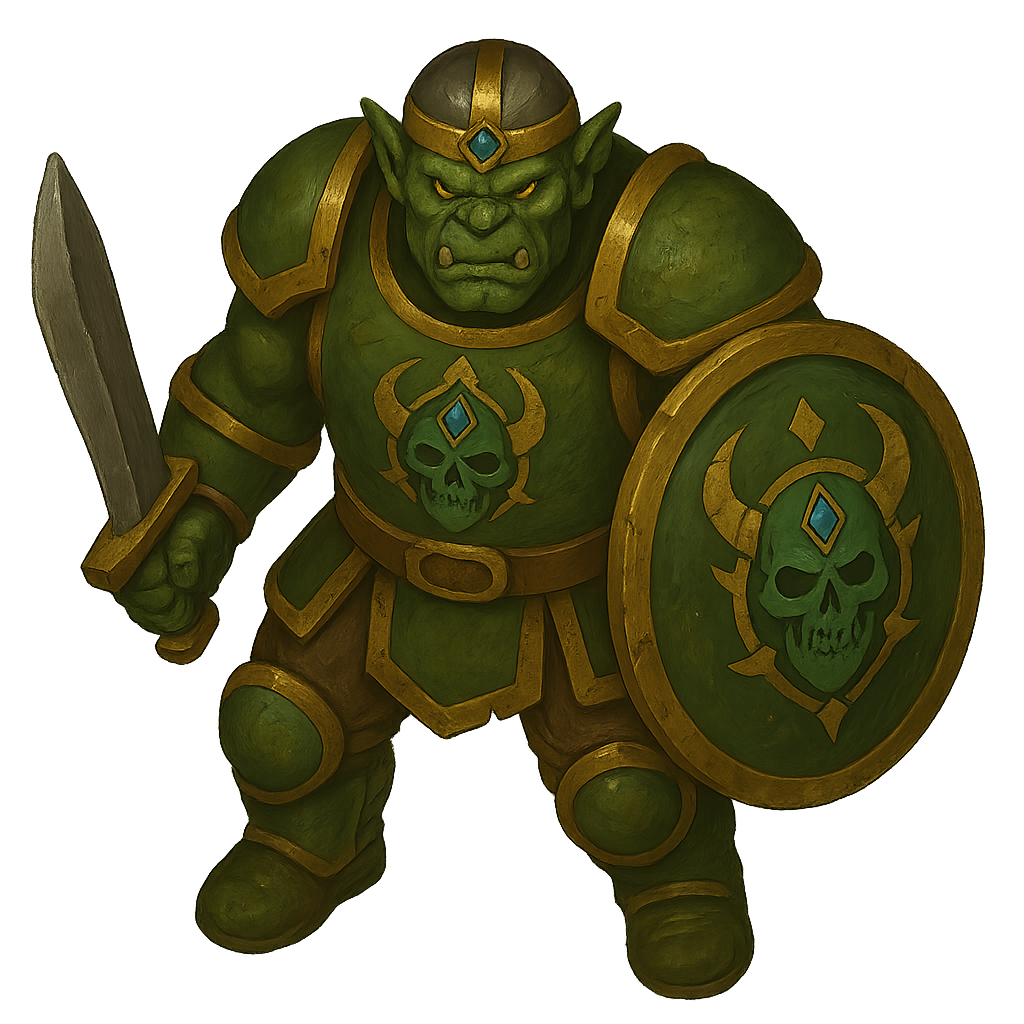
Top Down Token
Mraag-Tor Soldier
Right click on image to download PNG


Ur’Zhaal
A mystical clan of duality and secrets. Death is a hidden truth, revealed only through insight. Their tents are draped in violet and ash-black, with layered symbols, spirals, and glowing pigment. Lorekeepers lead in shifting roles to maintain balance between known and unknown.
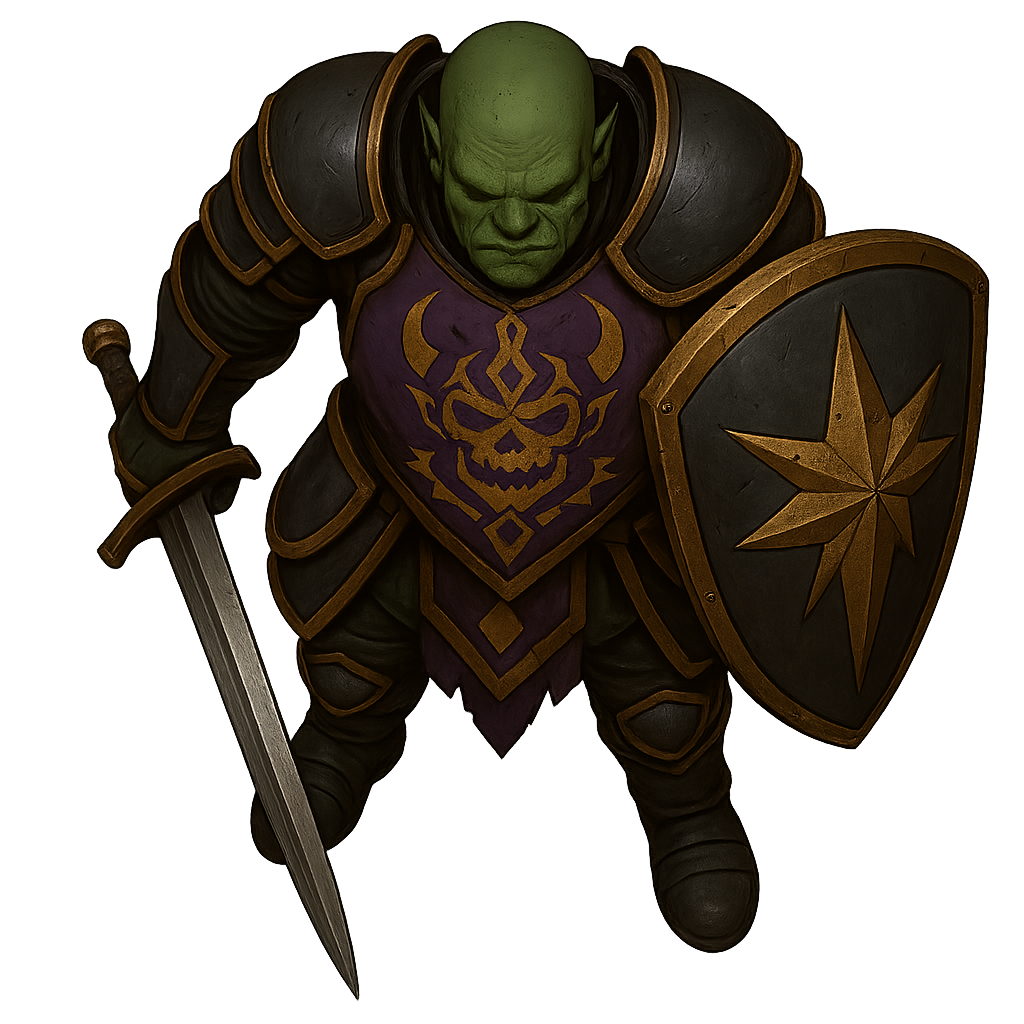
Top Down Token
Ur’Zhaal General
Right click on image to download PNG
Your content goes here. Edit or remove this text inline or in the module Content settings. You can also style every aspect of this content in the module Design settings and even apply custom CSS to this text in the module Advanced settings.

Your content goes here. Edit or remove this text inline or in the module Content settings. You can also style every aspect of this content in the module Design settings and even apply custom CSS to this text in the module Advanced settings.
To the top

Buildings

Orcs in Bellaria do not simply build shelters—they carry their history in every structure. Whether it’s a simple leather hut or a ceremonial hall for a war chief, the foundation remains the same: the tent. The domed or peaked silhouette is seen across the land. No matter the region or clan, an orcish building is instantly recognizable by how it leans back into tradition. Building like the ancestors is not a limitation—it’s a point of honor. Orcs do not build upward to dominate the sky; they build outward, to protect, to remember, and to live together.
Color is just as important as form. Every clan has its own palette and symbols, expressed through dyed fabric, painted wood, stitched hides, and carved decorations. From a distance, an orc can often tell who lives in a structure—what clan they belong to, what rank they hold, even what battles they may have survived—simply by reading the colors and patterns. The most common materials are leather, wood, cloth, and rope. These are chosen not just for practicality, but for meaning. Nothing is wasted. Stone and metal are rare and carry weight, both literal and symbolic. They appear only in ancient temples, lost strongholds, or the homes of legendary leaders—where every brick speaks of blood, power, and legacy.
In certain ruins, whispers still speak of a time when orcs built under the Golden Fire—a forgotten age of unity and greatness, when the clans stood as one and their halls burned with pride, power, and flame. Today, only fragments remain: scorched stones, faded sigils, and bones etched with memory. Orc architecture is not merely a style—it’s a living part of the culture. Every structure holds a story. An echo of a time when every orc was a wandering hunter, and every tent was both home and shield.
They do not build this way because they must. They build this way because they remember.

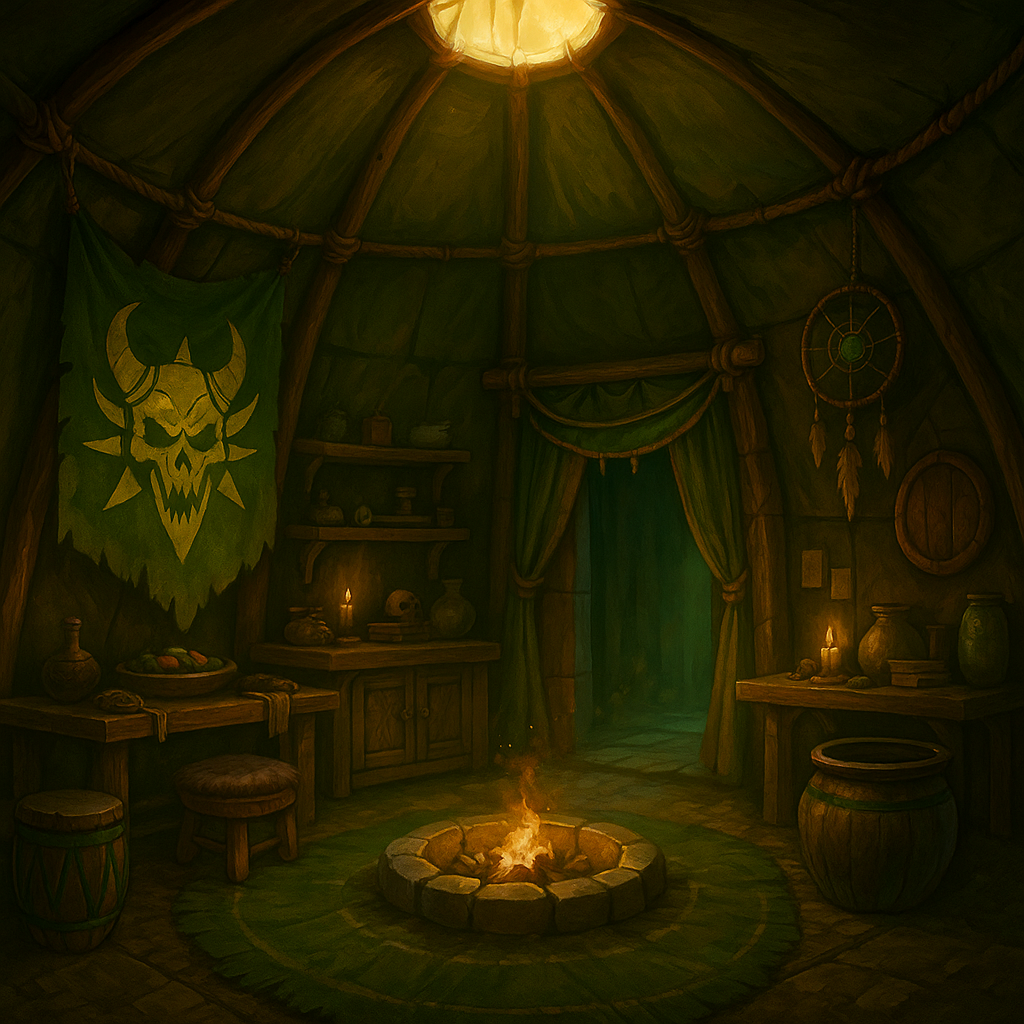
Nomad Tent – Hunters & Laborers
A low, dome-shaped leather tent with a simple wooden frame. Quick to raise and easy to move, this type is common among hunters, workers, and young footsoldiers. Decoration is minimal, with small clan tags or markings near the entrance.

Top Down Token
Right click on image to download PNG
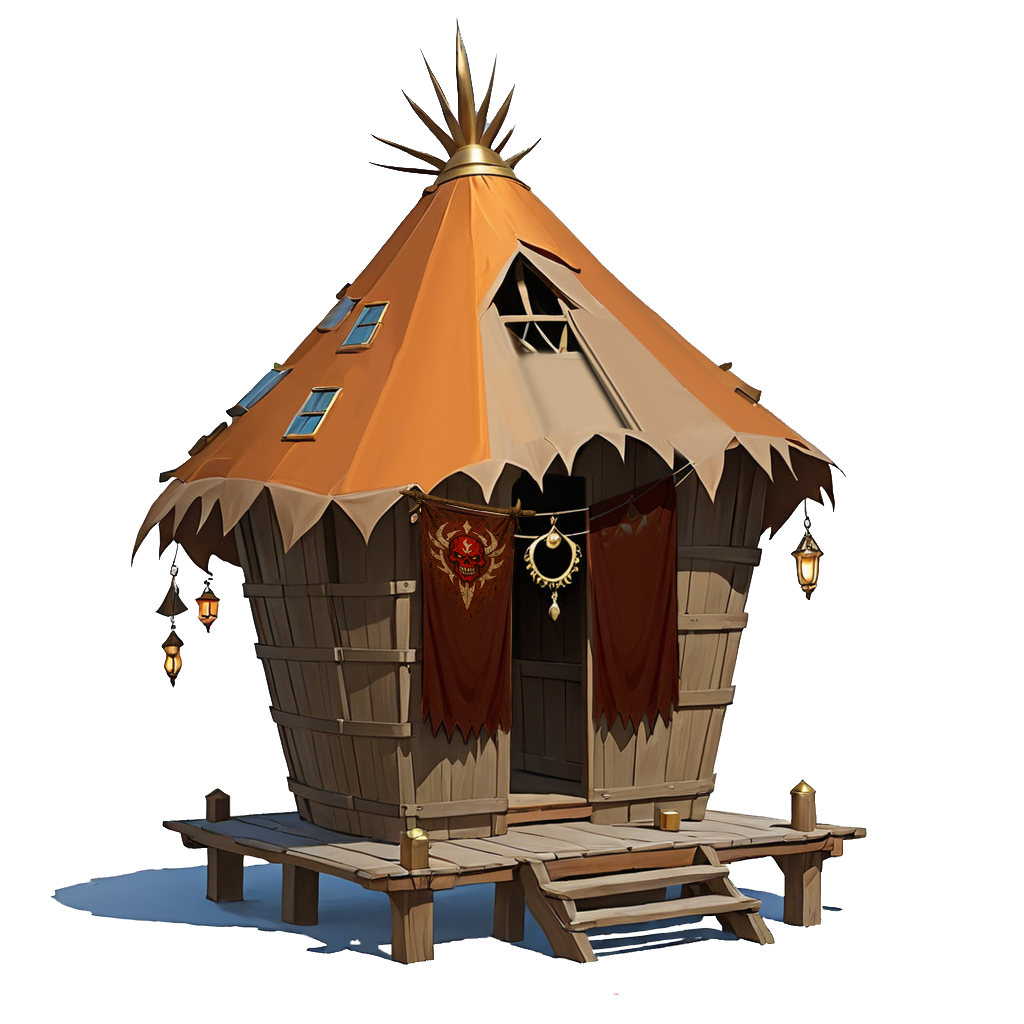
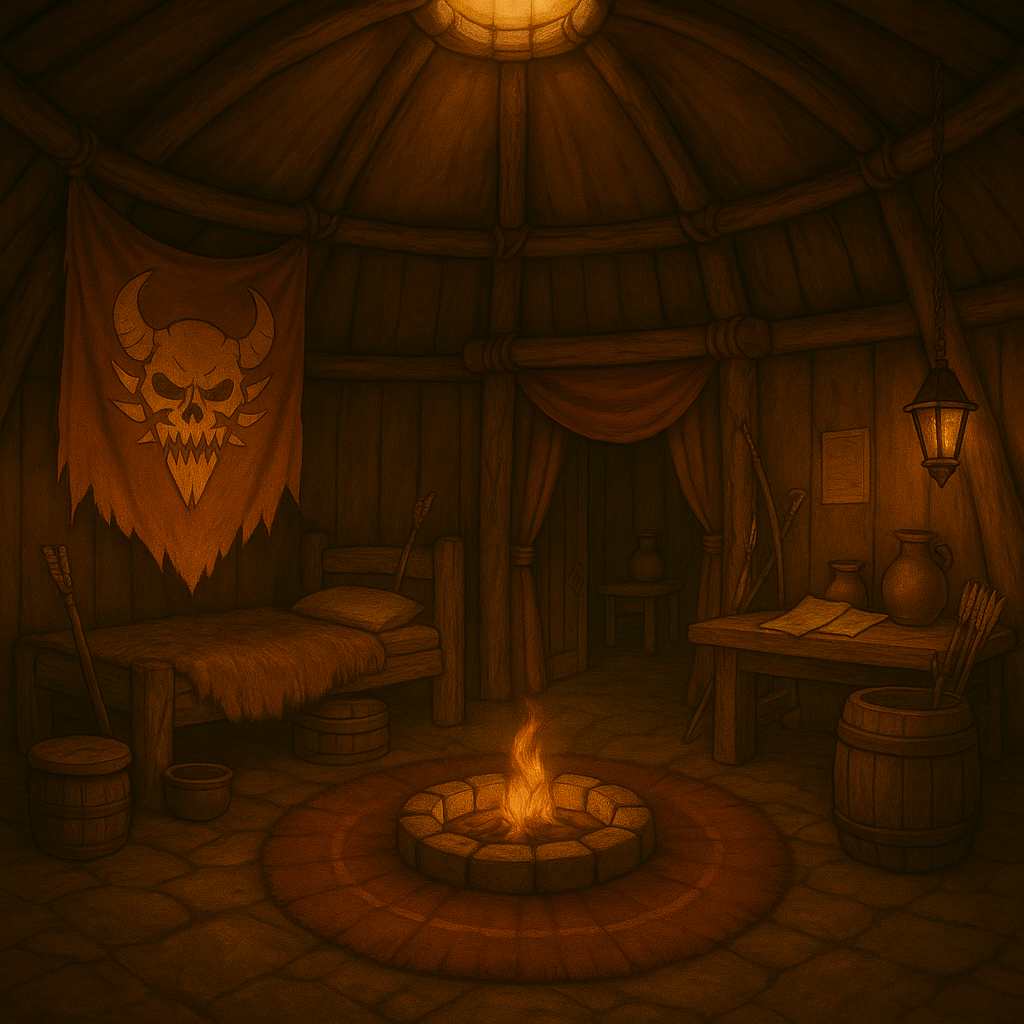
Warrior Tent – Veterans & Patrol Leaders
Taller and more reinforced, often with extra leather flaps and painted shields. The angled shape and added structure signal authority. Typically used by ranking warriors or small-unit leaders on the move.
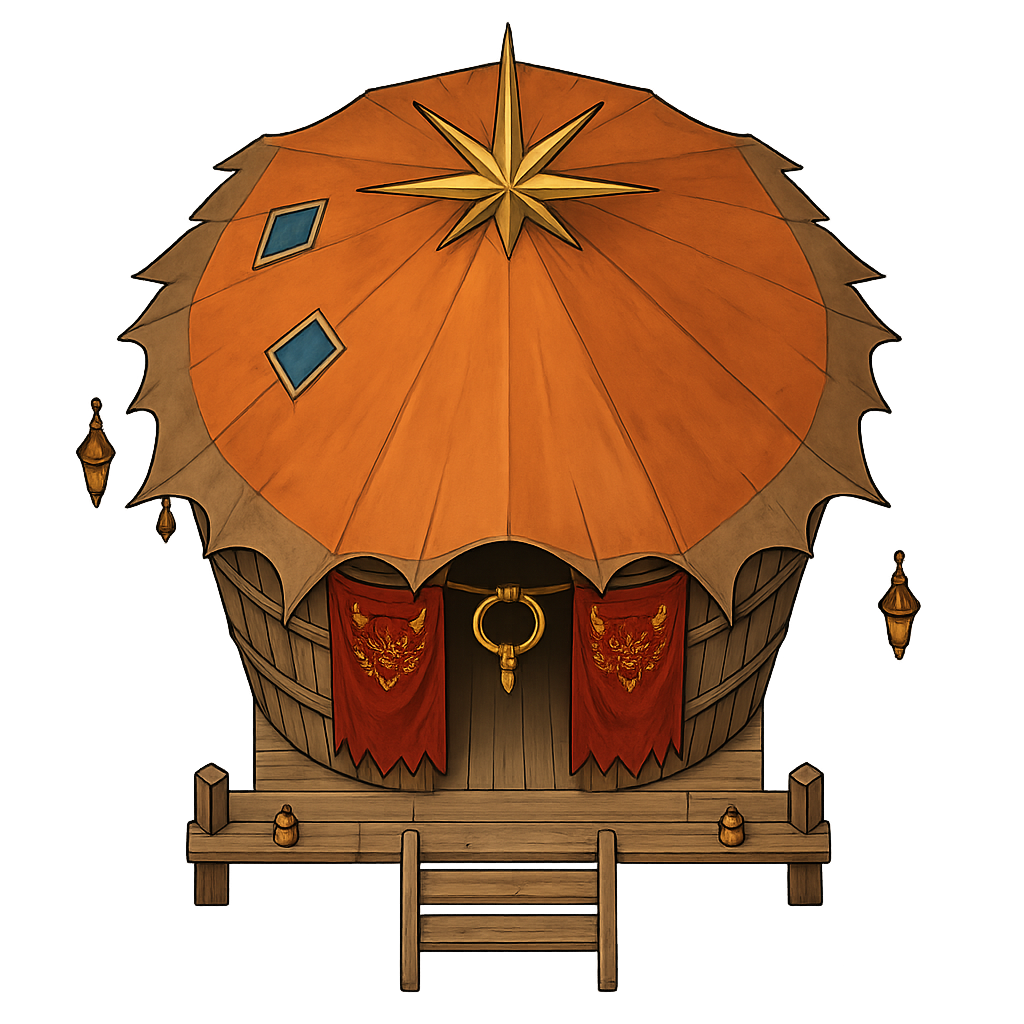
Top Down Token
Right click on image to download PNG

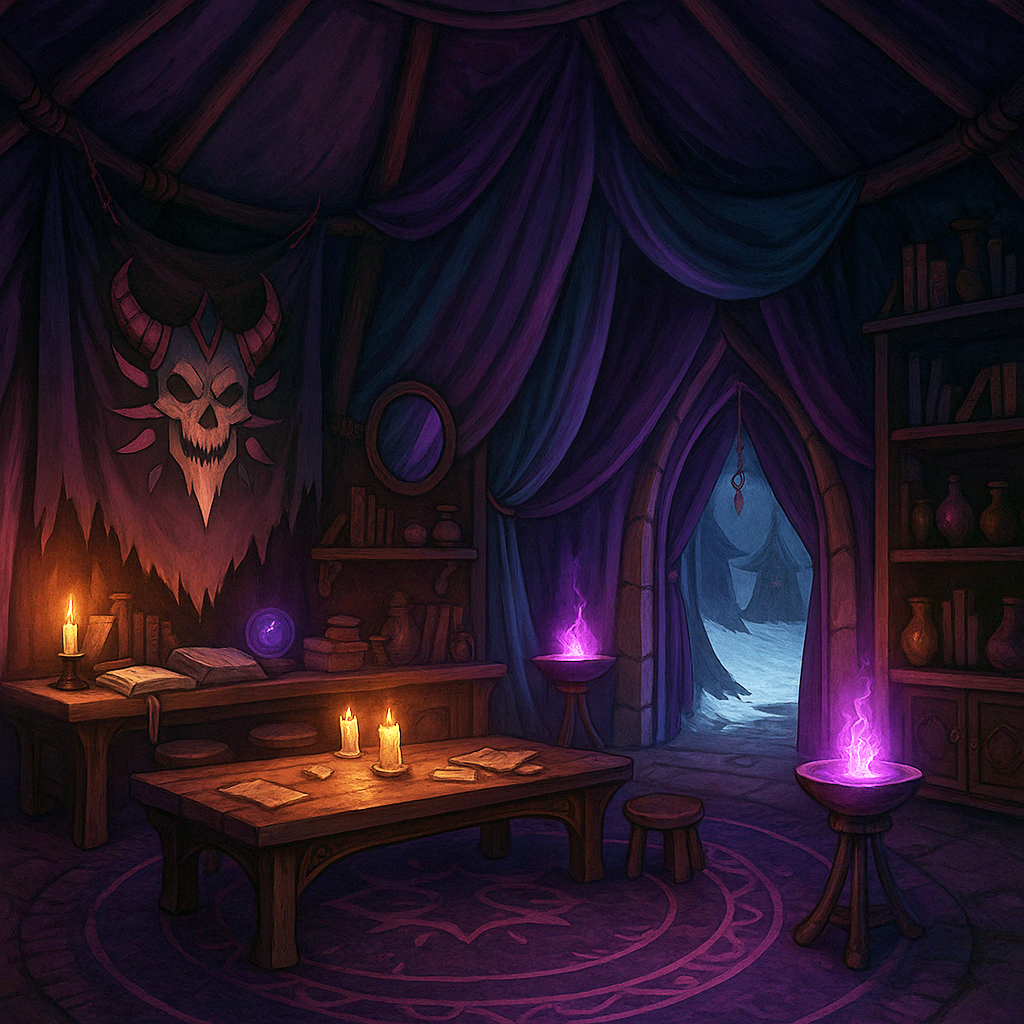
Shaman’s Shelter – Magic & Ritual
Heavily decorated and filled with ceremonial details: cloth streamers, horns, glyphs, and offering spaces. This design creates a sacred environment and reflects the user’s spiritual role. Home to shamans, spirit-talkers, or ritual guardians.
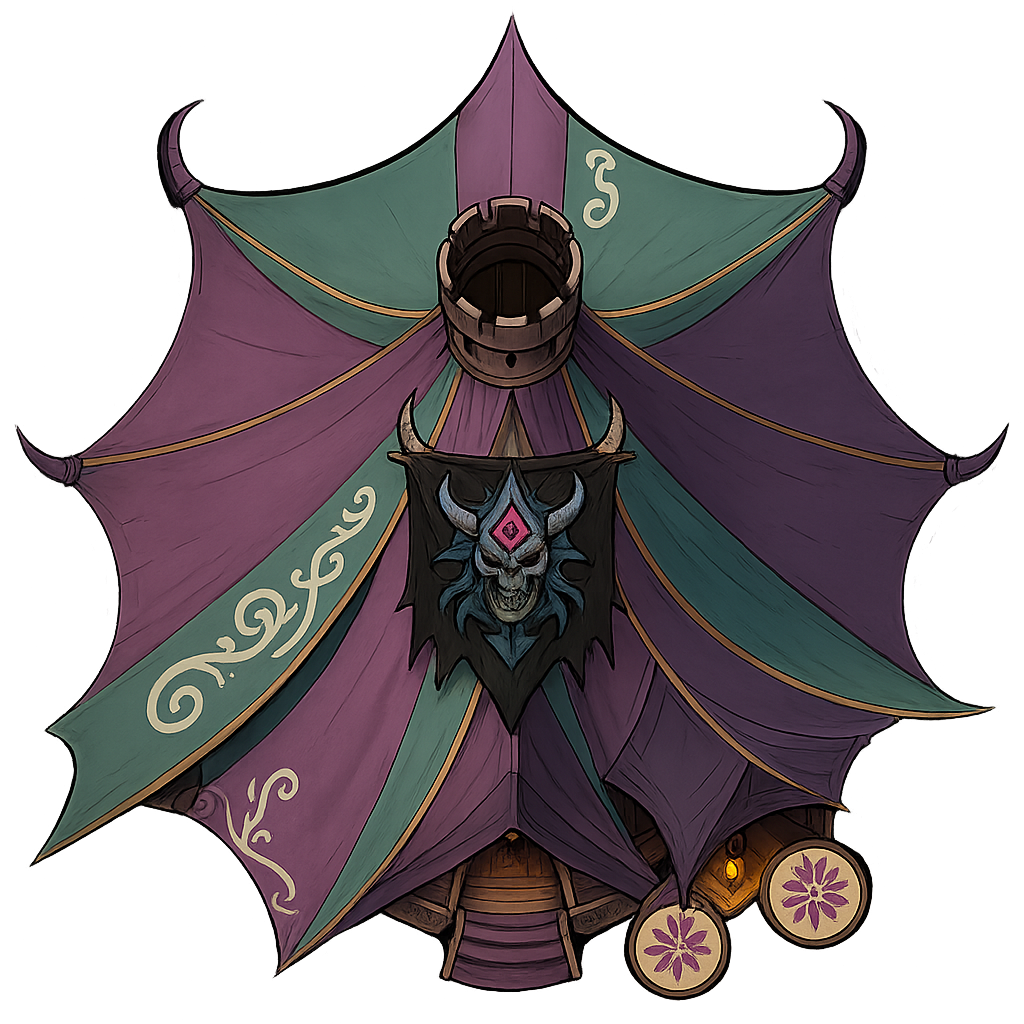
Top Down Token
Right click on image to download PNG
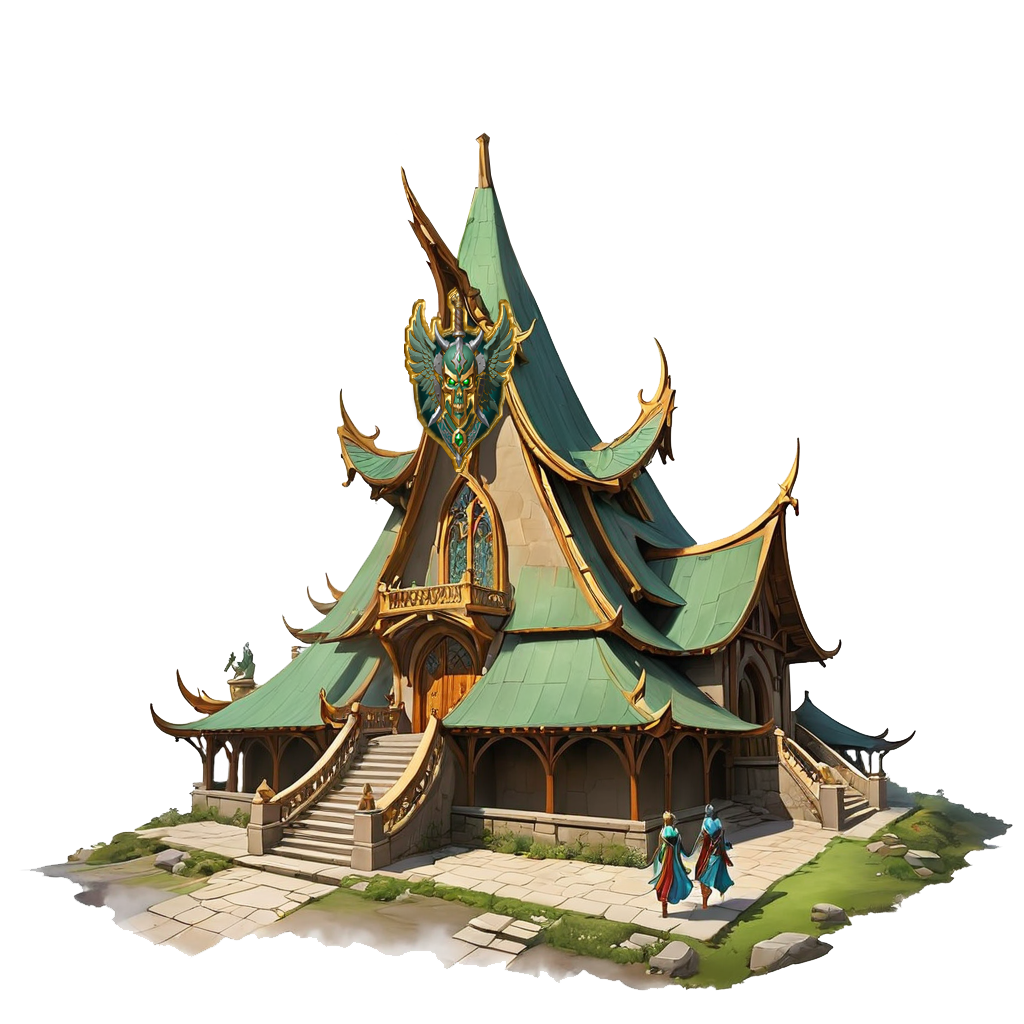

Wooden Lodge – Settled Families & Clan Officials
A semi-permanent structure with a sturdy wooden frame and sloping roof that mimics the tent’s silhouette. Often covered in hides or dyed cloth. These lodges house families, administrators, or respected elders. Clan colors and symbols are clearly visible.
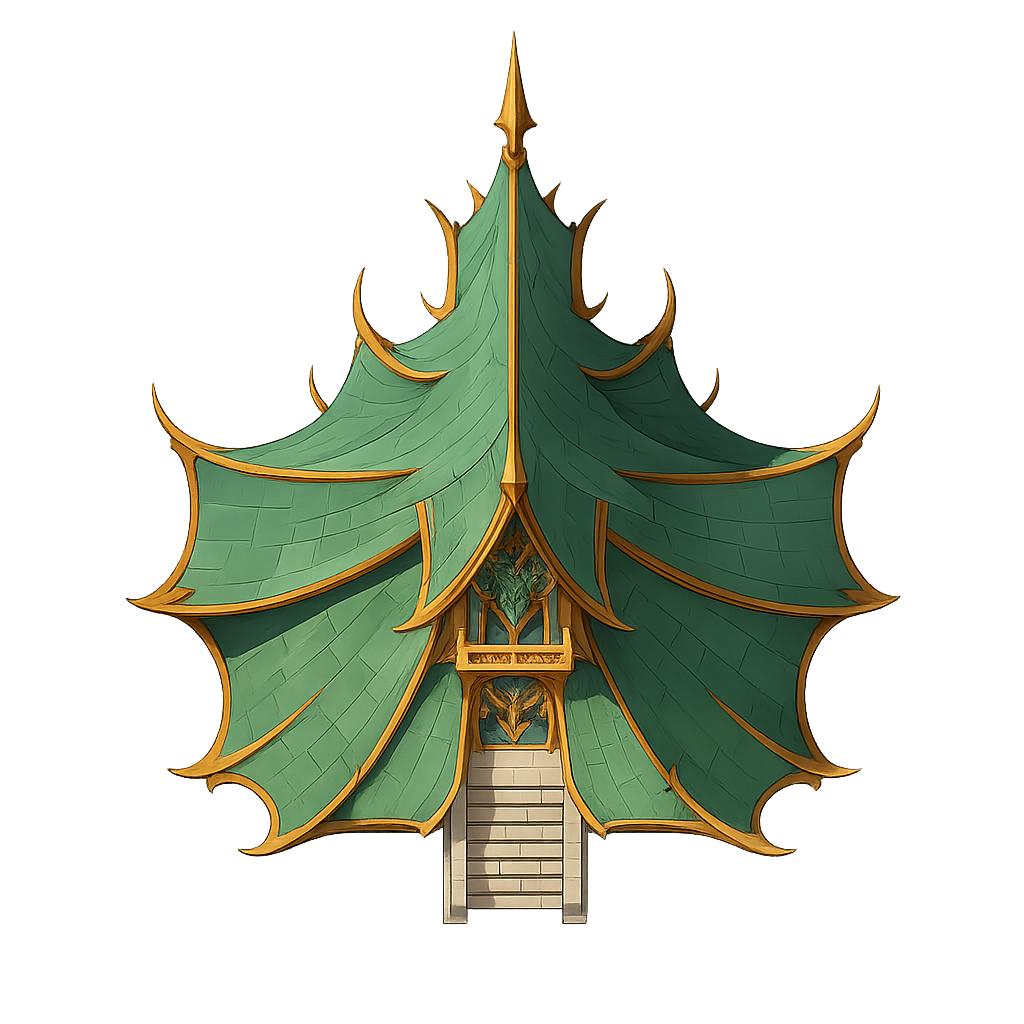
Top Down Token
Right click on image to download PNG
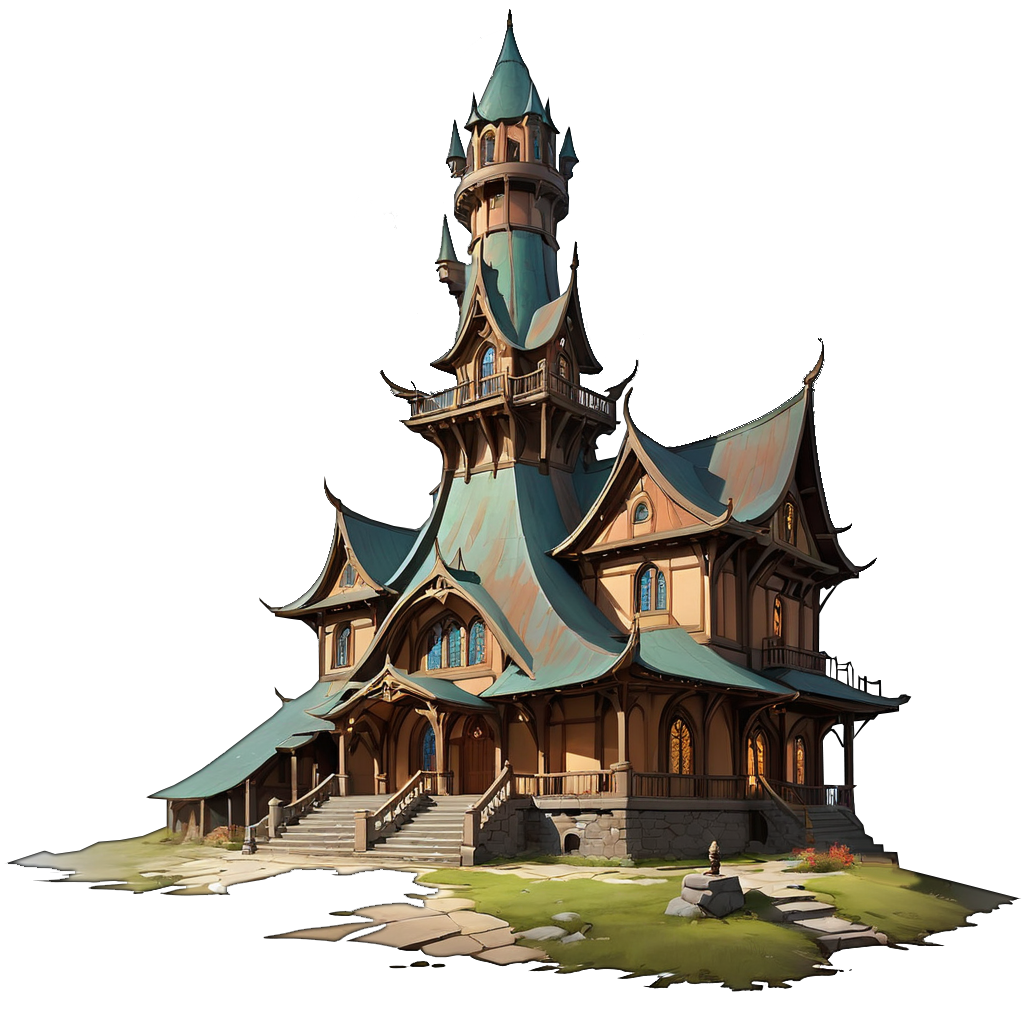
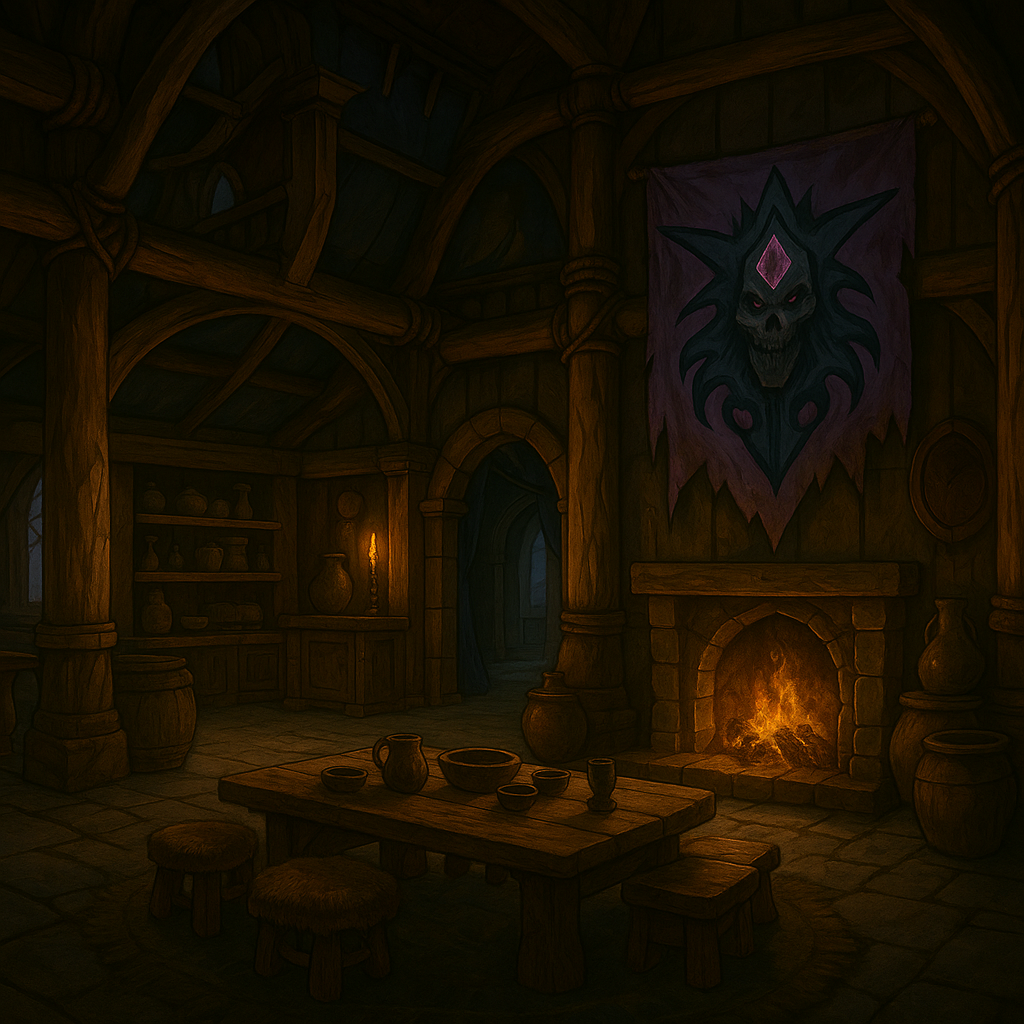
Great Lodge – Respected Lineages & Clan Leadership
An enhanced version of the wooden lodge, this grander structure offers improved space, warmth, and prestige. With refined materials and elevated architecture, it often houses prominent families, senior officials, or ceremonial gatherings. The tall design allows for light, status, and visibility—both practical and symbolic within clan society.
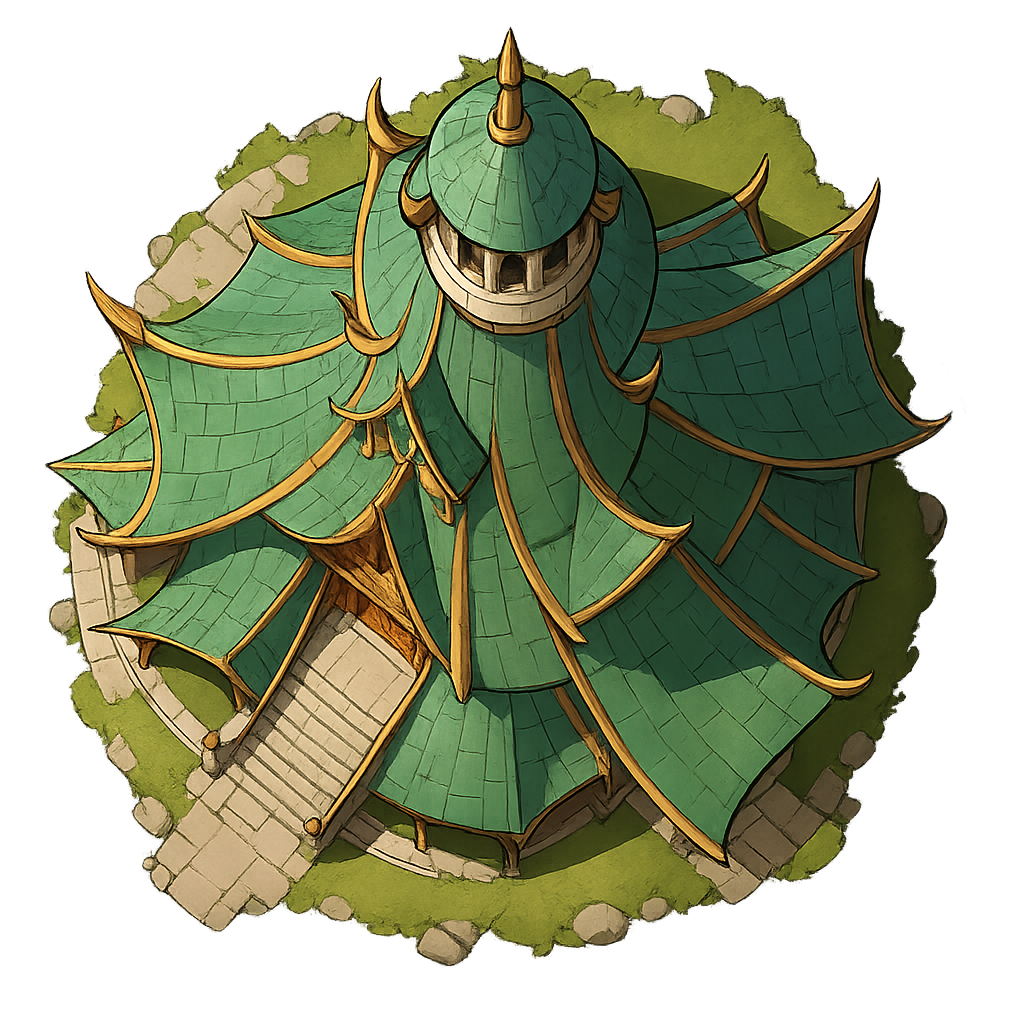
Top Down Token
Right click on image to download PNG


Command Canopy – Masters & Elders
A large structure with flowing lines and layered roofs. Broader and more refined than the great lodge,marking it as a place of status and importance. It is used by respected clan members for gatherings, discussions, and decisions that affect the whole tribe. Whether for votes, strategy, or settling disputes, the space reflects shared power rather than personal rule.

Top Down Token
Right click on image to download PNG
To the top

Food
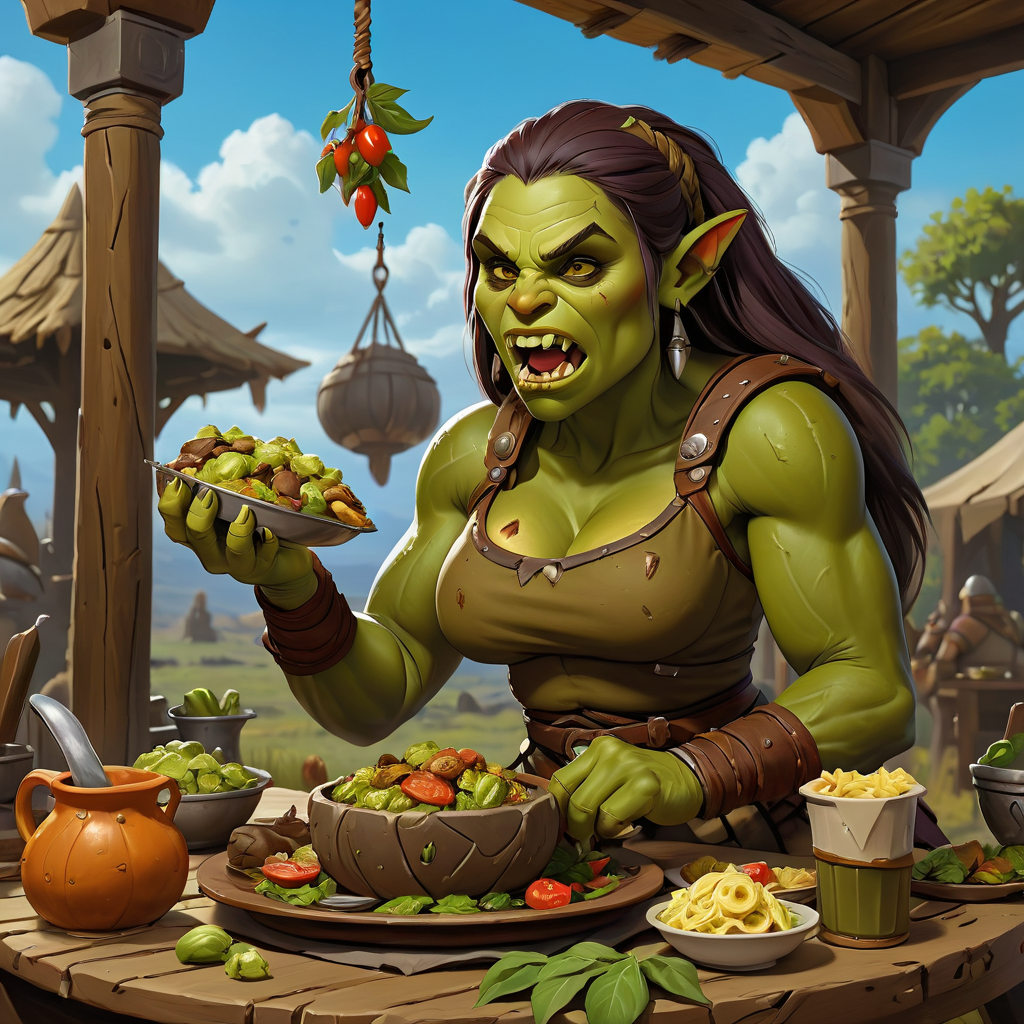
Orcish cuisine is not for the faint of heart. Built on survival, strength, and symbolism, every dish tells a story—of dominance, of sacrifice, or of raw defiance. From brain-stuffed pies to serpent-wrapped skulls, meals are rarely just food. They are ritual, challenge, and heritage.
What may seem grotesque to outsiders is sacred to the clans. A twitching boar brain may mark a child’s first rite of passage. A plate of fermented eyes might be shared in silence after a great hunt. Even a single mug of orcish brew can speak louder than any song.
This is not a cuisine of comfort—this is the fire-fed heart of orcish culture. Welcome to the feast.
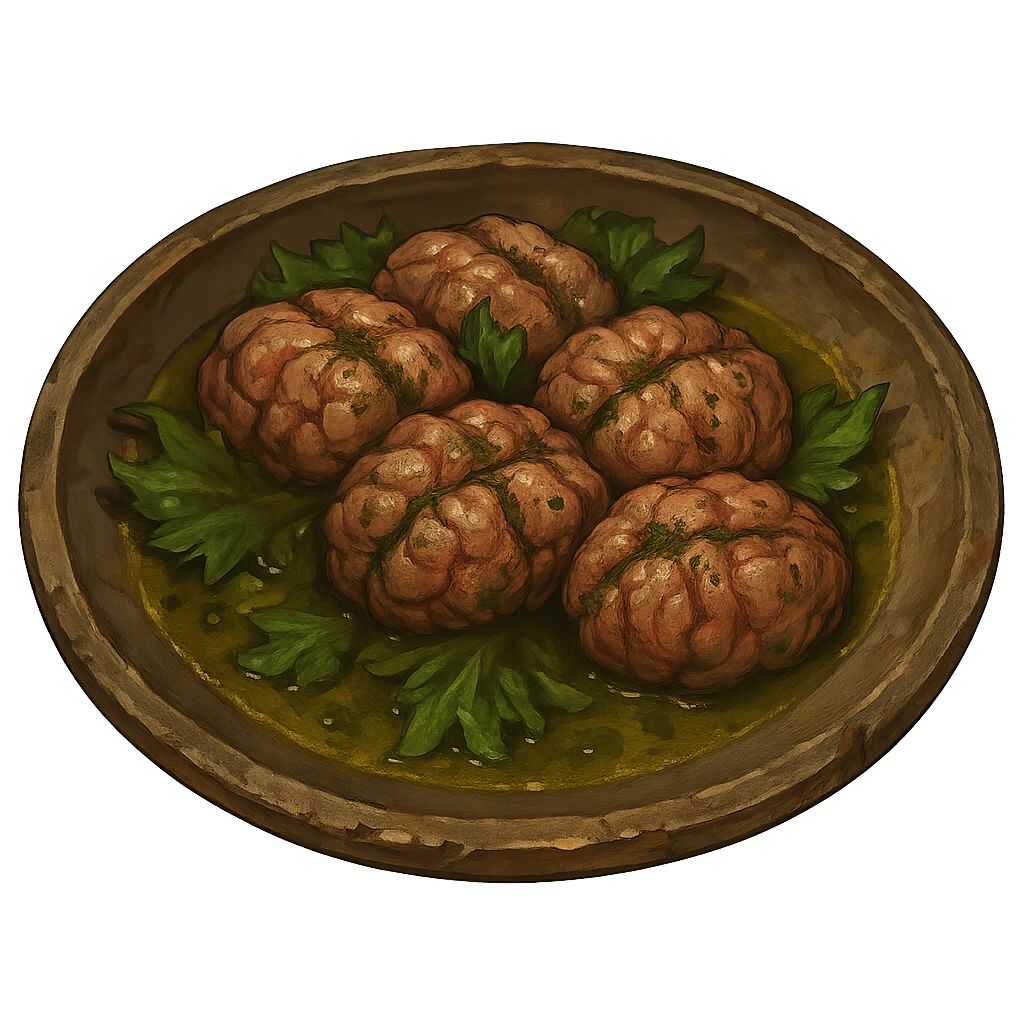
Boiled Boar Brains in Herb Slime
This traditional orcish starter features five boiled boar brains, carefully plated on a bed of wild greens and soaked in a thick, fermented herb slime. The brains are harvested fresh, preferably while the boar is still twitching, to preserve the full texture and essence. Served cold, it’s often eaten as a ceremonial first course during victory feasts or funerals.

Eyeglint Pike with Pickled Sockets
This unsettling delicacy features a whole river pike, slow-roasted in bark ash and served on a bed of swamp greens. The true highlight of the dish, however, lies in the garnish: a selection of pickled predator eyes, harvested from wolves, hawks, and other sharp-sighted beasts. These orbs are soaked in a brine of fermented bloodvine and bog salt to preserve their bite.
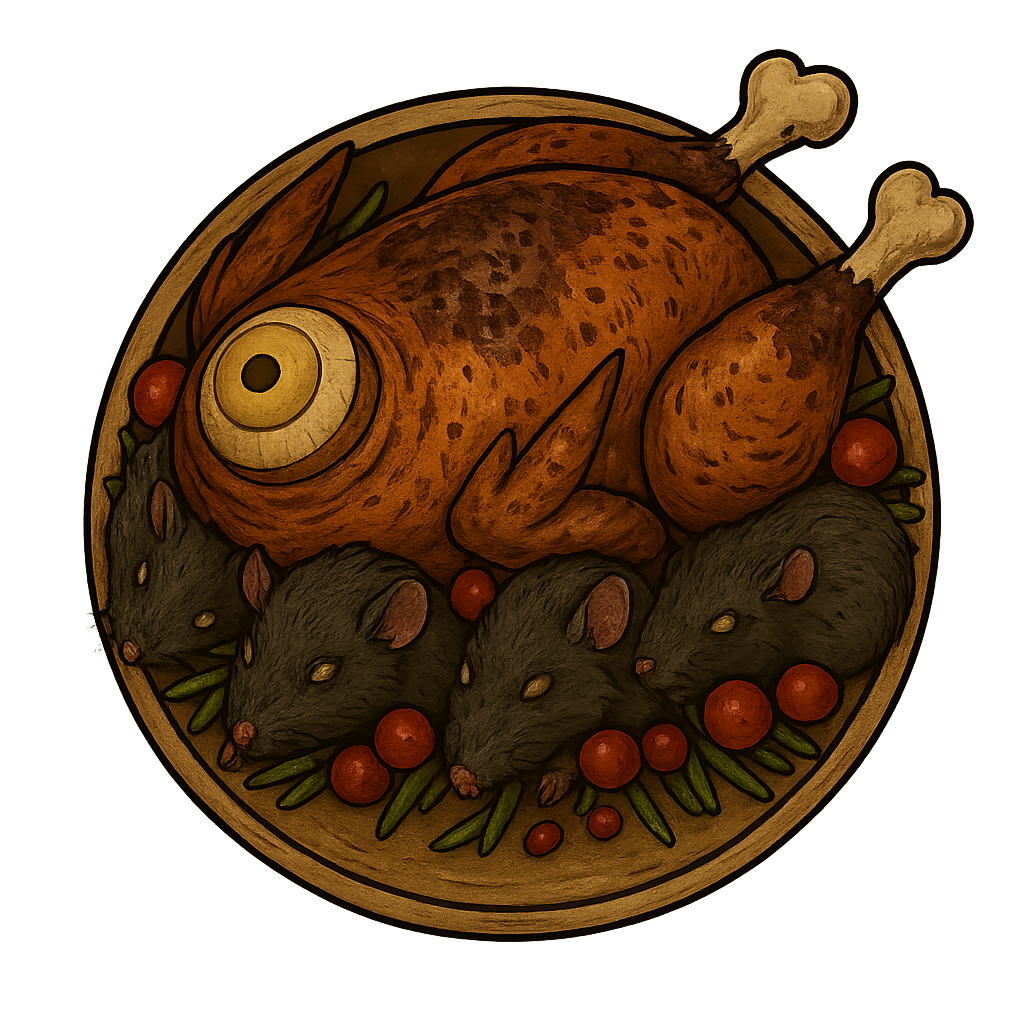
One-Eyed Roast with Vermin Stuffing
A festive centerpiece dish served during blood feasts and hunting celebrations. This enormous roast bird, known for its single cyclopean eye, is slow-roasted until the skin crisps and the scent draws flies. Stuffed with four whole swamp rats and surrounded by fermented redberries and snake beans, the dish is both a display of dominance and a test of stomach.

Boar's Head with Serpent Salad
A traditional high-status meal served during war councils or midwinter feasts. The severed head of a wild boar is presented intact, its mouth still snarling. Curled around the skull are fresh jungle serpents—skinned but served raw—accompanied by bitterleaf and bloodberries. The snakes are eaten whole, often while still writhing, for good luck.
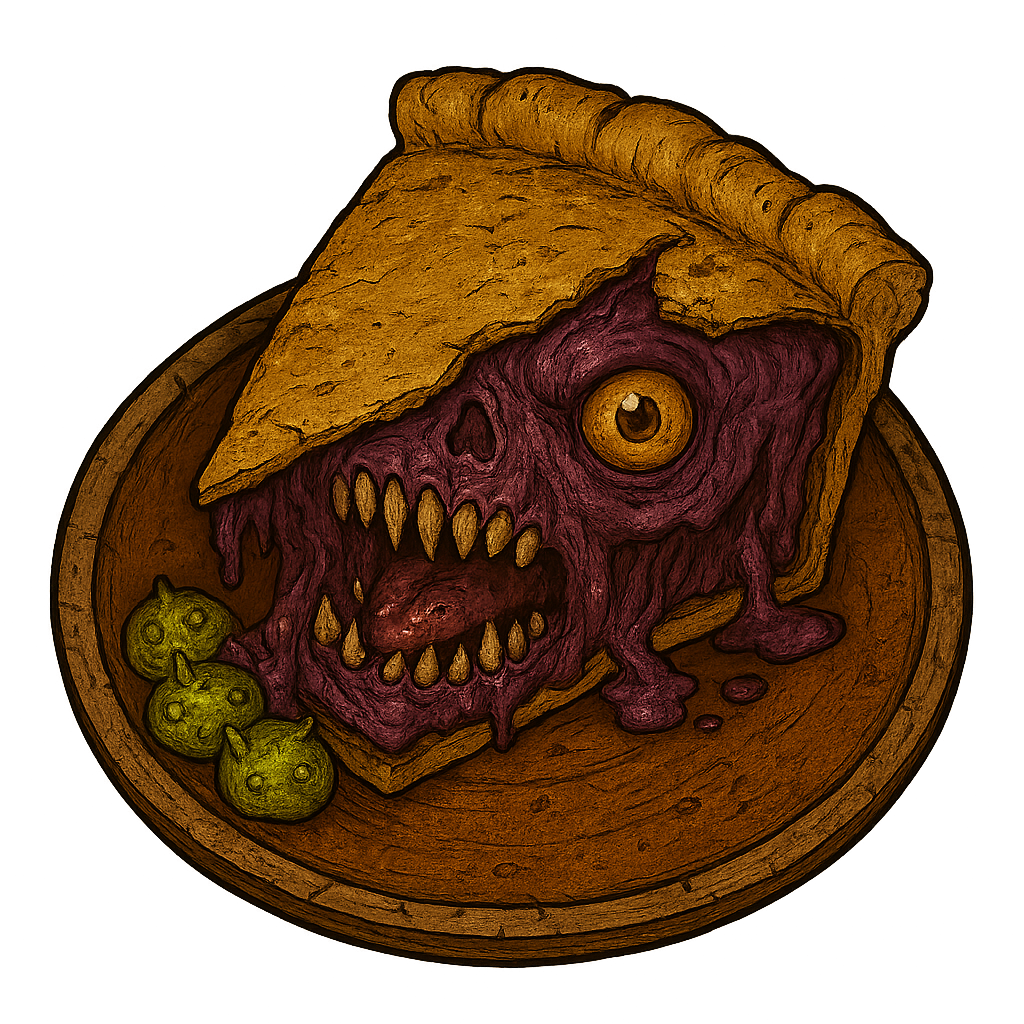
Screamer Pie
A once-banned delicacy now found in rogue kitchens and dark festivals. This pie is filled with fermented ape brains, pickled nerve roots, and screamberry syrup. When sliced, the filling lets out a faint wail. Some say the pie watches you. Traditionally served with candied goblin heads for texture and insult.
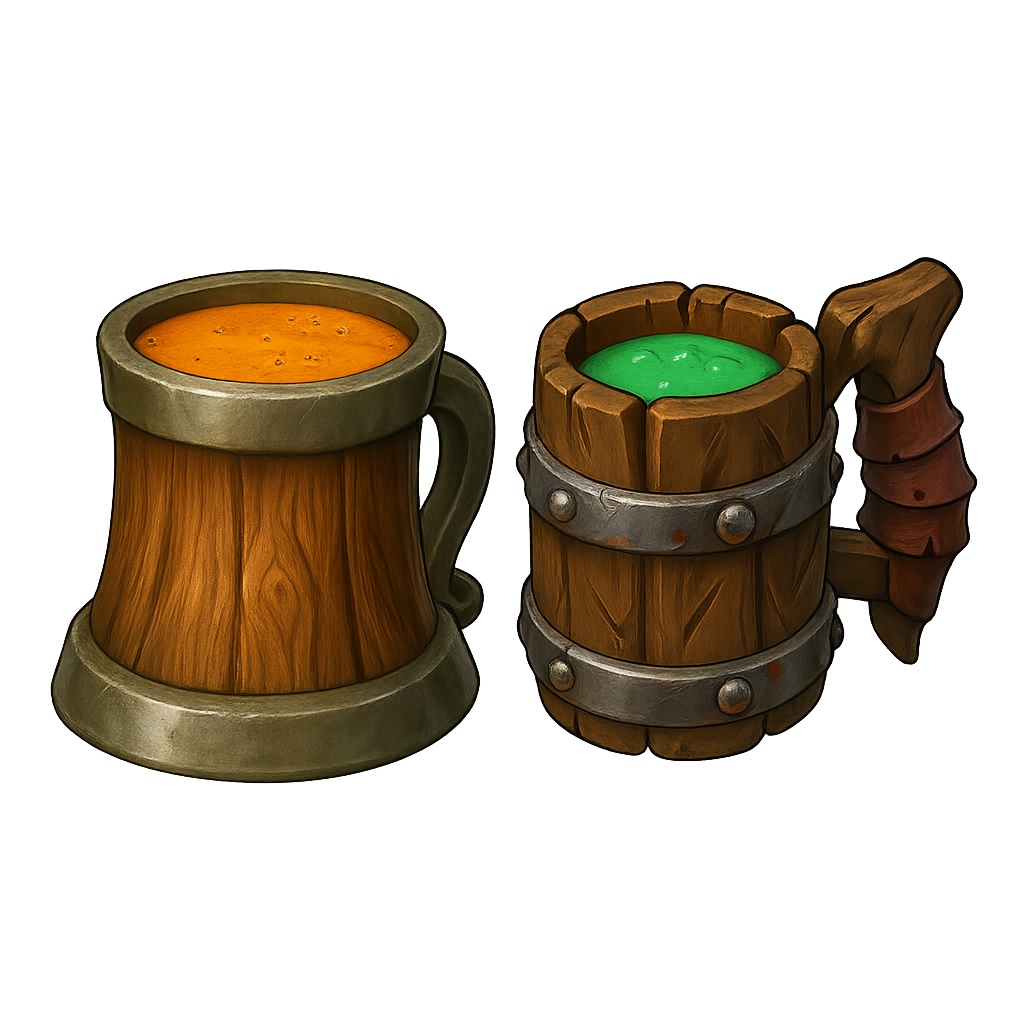
Orcish Brews of Bellaria
Orcish drinks are never subtle. They are brewed to burn, bite, or bellow. From the molten depths of the flame tuber fields to the marshy wilds where serpents slither, every mug tells a story of power, pride, and pain. Whether you’re warming your gut with Molten Rootbrew or testing your courage with the glowing Feral Grog, these brews are more than refreshments
To the top

Religion
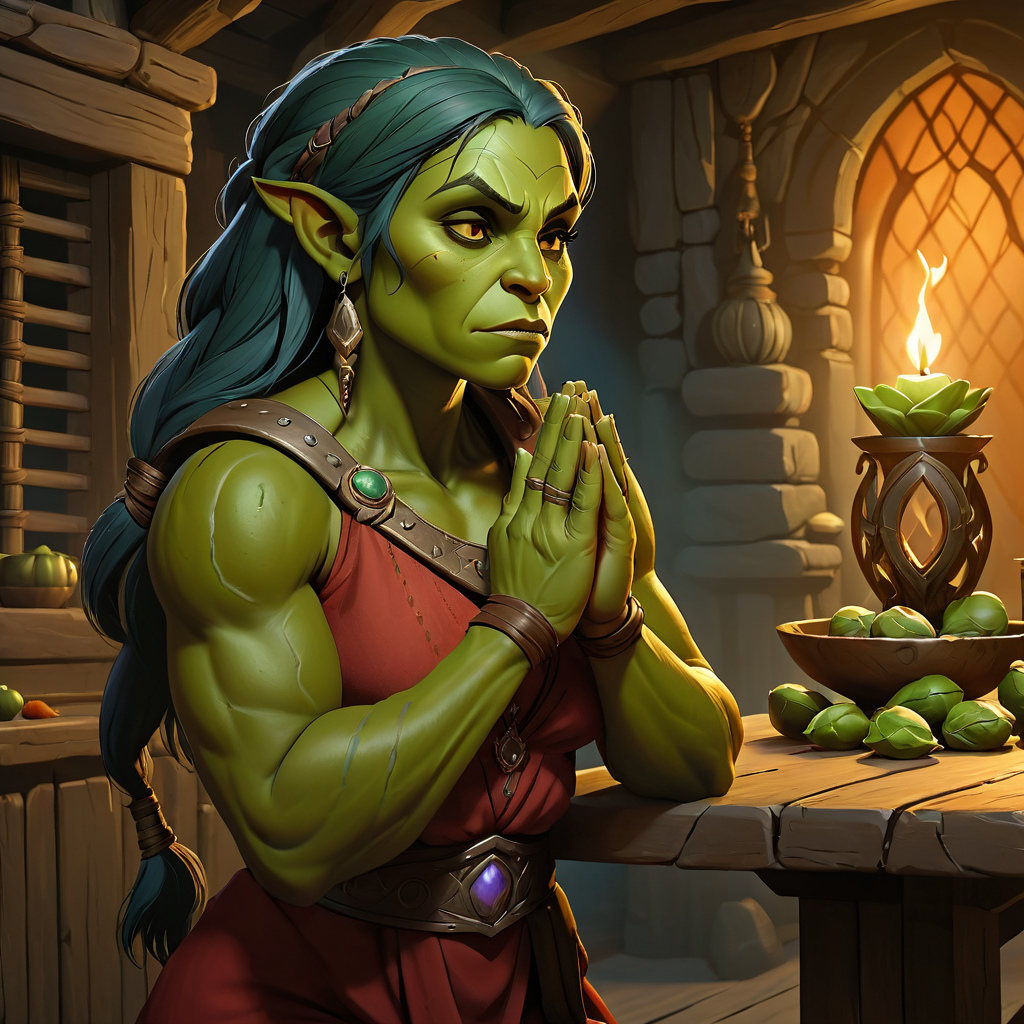
Death is not the end – it is balance. Kaba-Kaar, god of endings, watches silently from beyond. His presence is not cruel, but constant. Every breath, every sacrifice, every silence echoes in his name.
Worship is woven into daily life: through symbols carved in stone, placed on doorways, graves, and armor. These signs do not beg for mercy – they mark respect, warning, remembrance. They speak to the harsh truth that life is fragile, but meaning is earned.
Alongside him moves Yinn-Kaar, goddess of life – a force of healing and defiance. Together, they form the cycle. One takes. One gives. And in between, the people endure, honor, and remember.
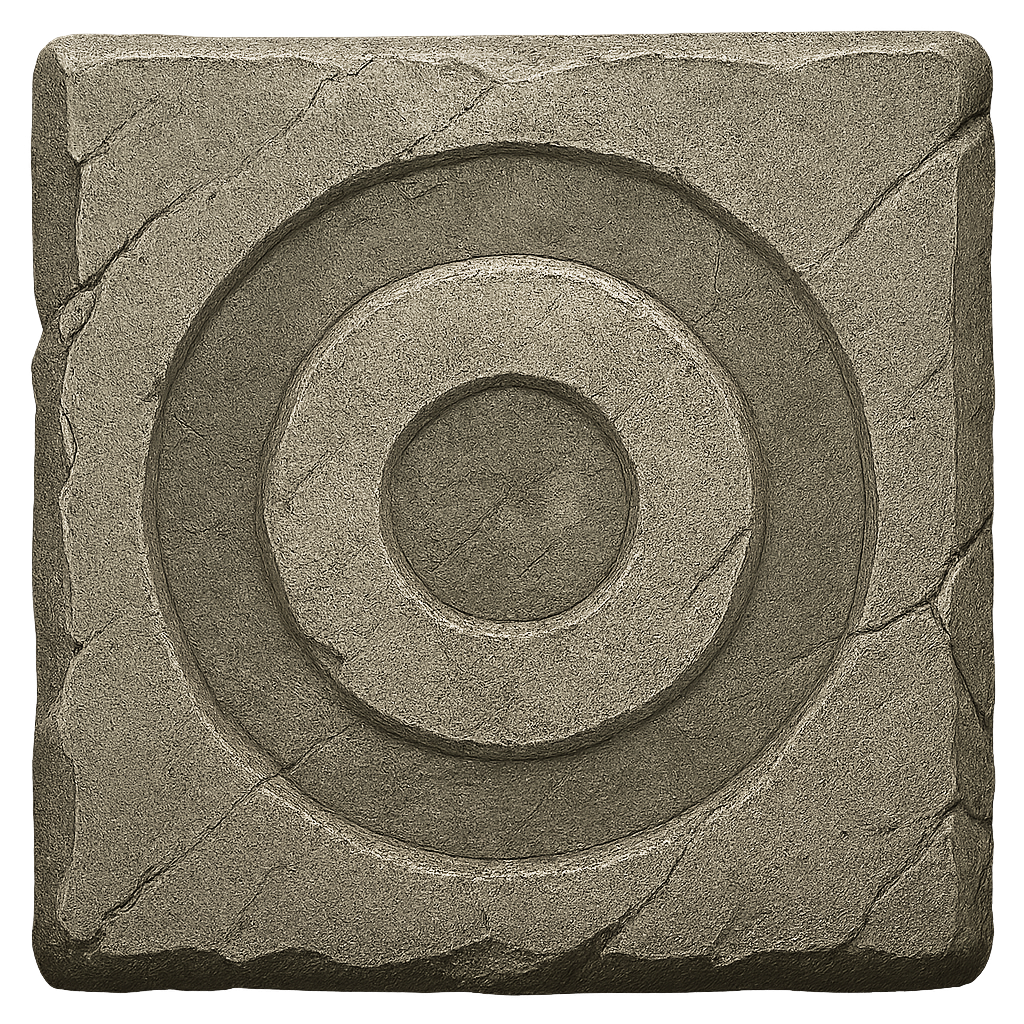
Eye of Death
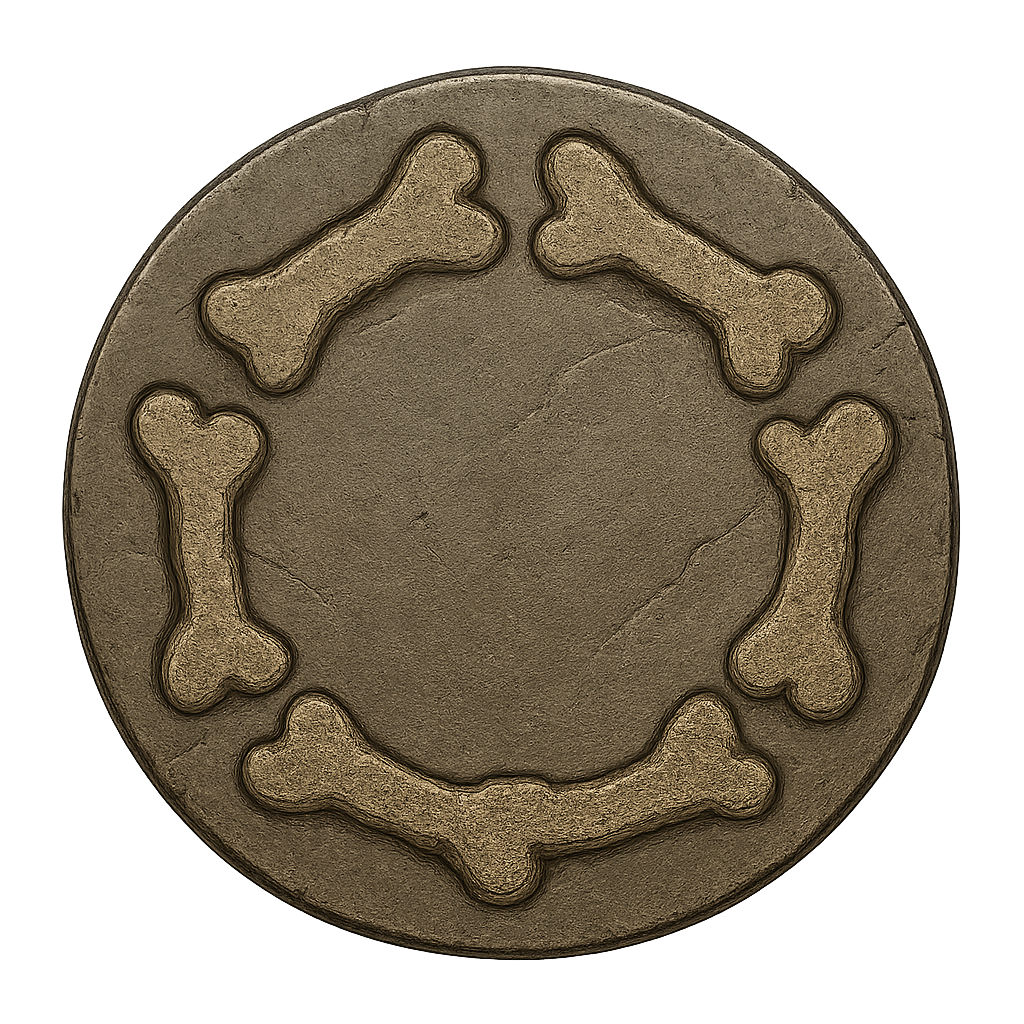
Bone Ring
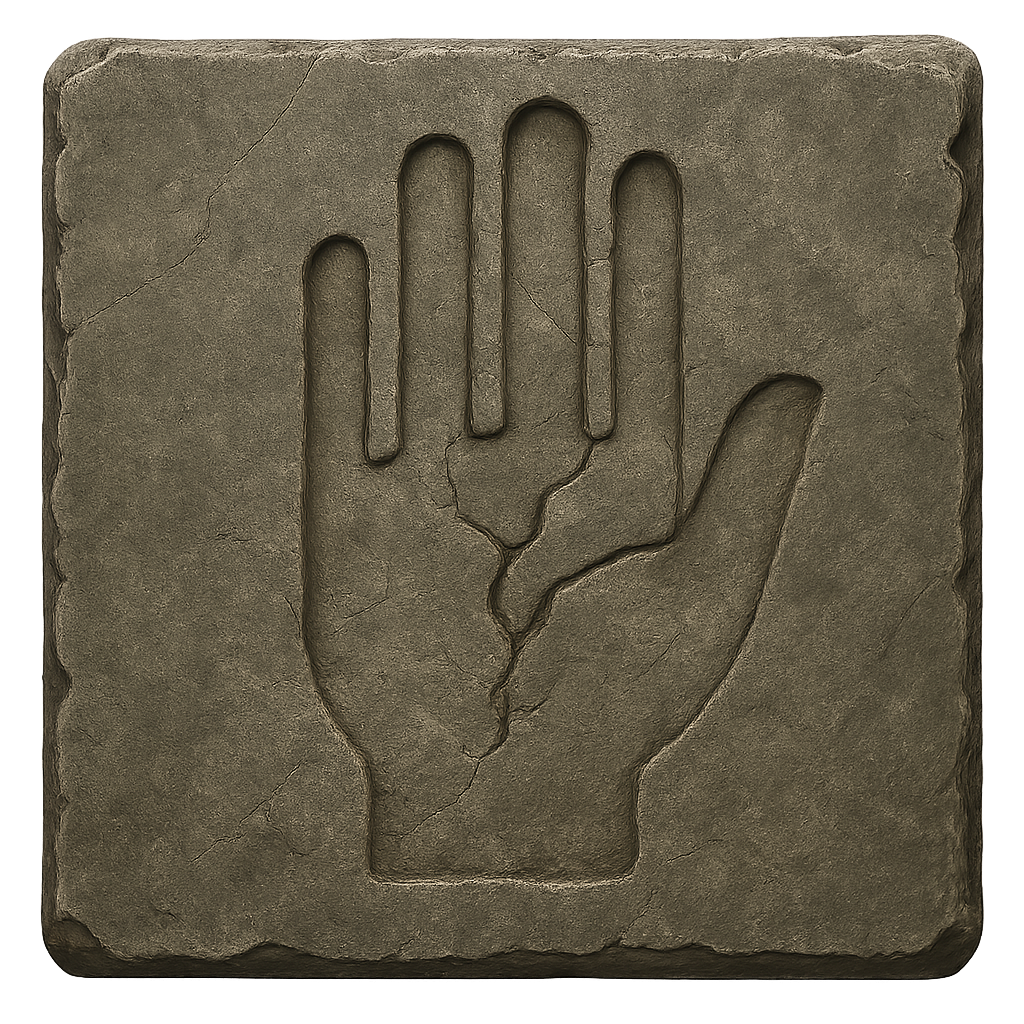
Cracked Hand
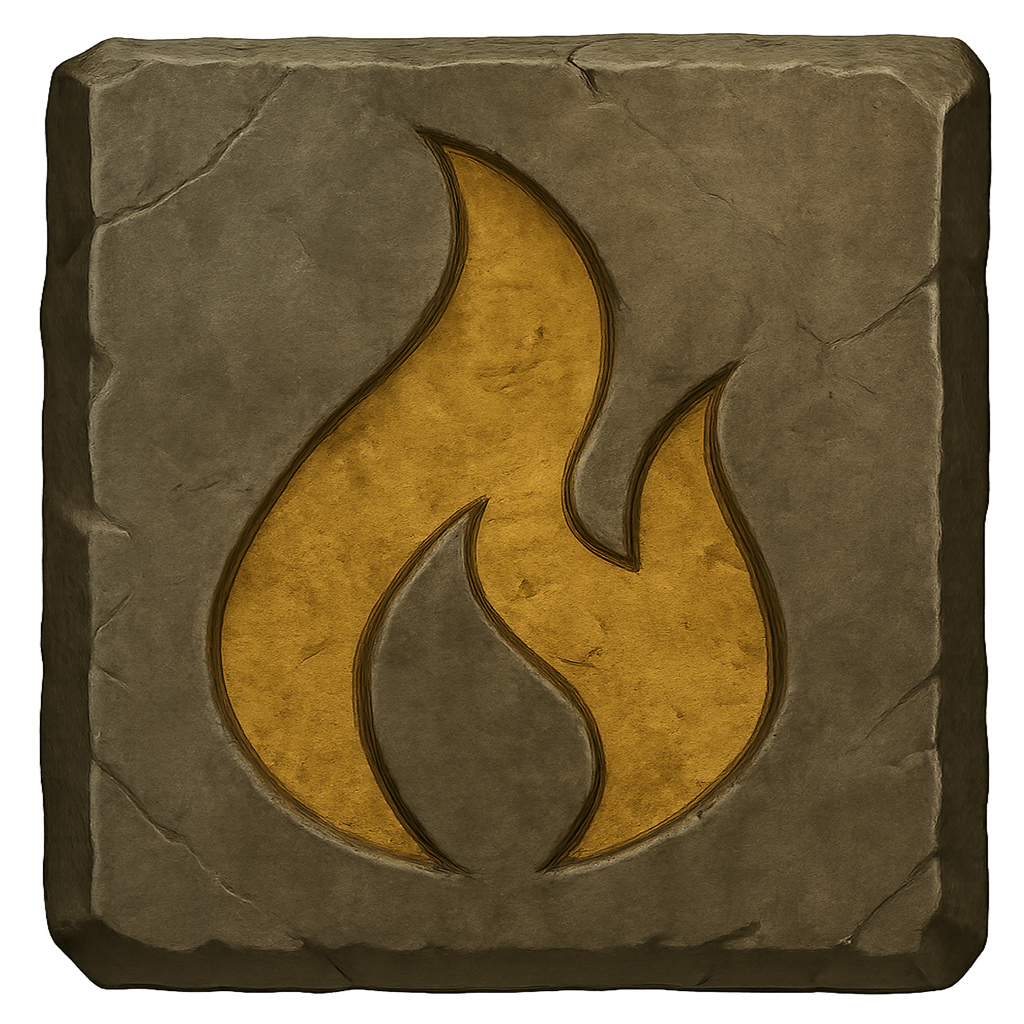
Eternal Flame
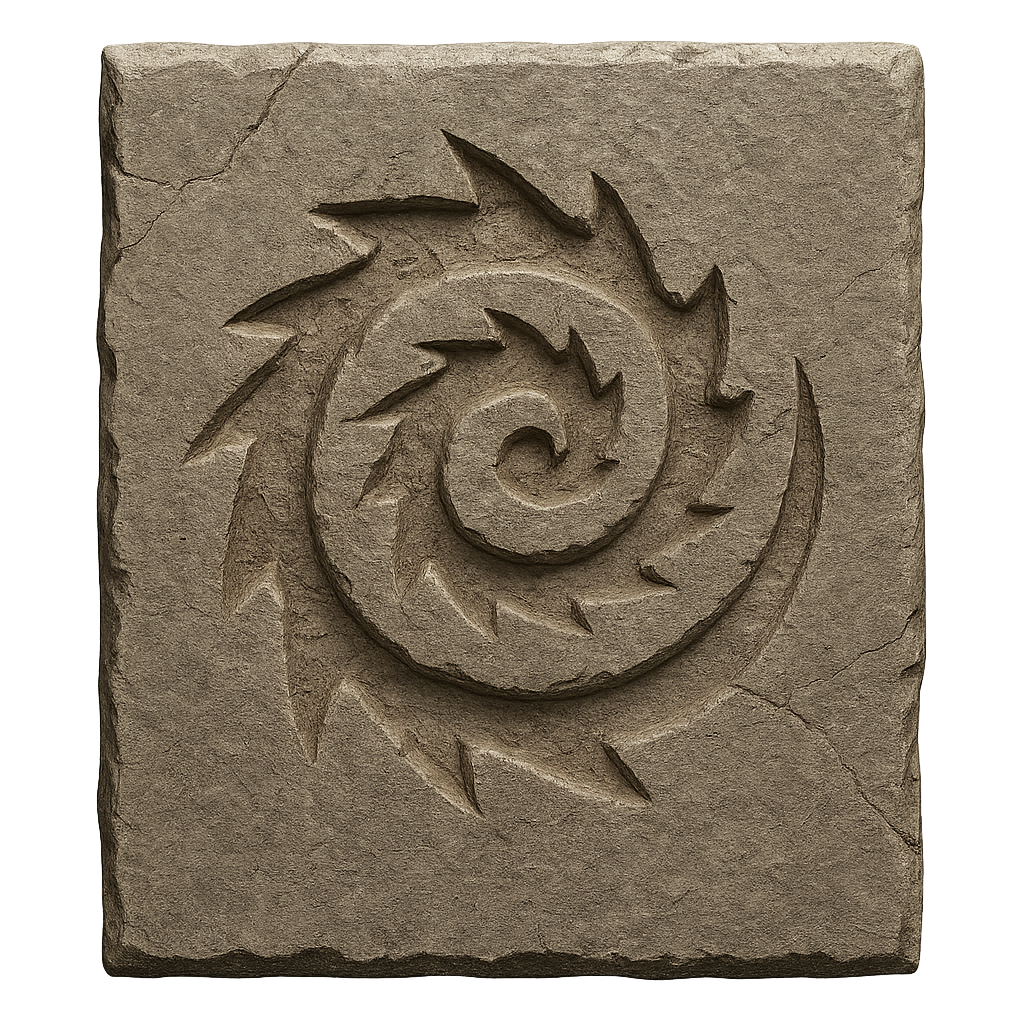
Circle of fangs

Healing Water
To the top

Language
To the top

Music

Music holds a central place in orcish culture, woven into the fabric of daily life, ceremony, and warfare. From the thundering rhythm of war drums to the haunting melodies of funeral rites, sound is used not only to communicate emotion but to invoke memory and power. Orc instruments are built for durability and impact – crafted from bone, hide, wood, and metal – each carrying a unique sound shaped by clan tradition.
Whether rallying warriors before battle, honoring ancestors through solemn chants, or passing down stories from elder to child, music serves as both a communal language and a spiritual tool. Though often raw and intense, orcish music is deeply expressive, carrying centuries of tradition in every beat, strum, and breath.
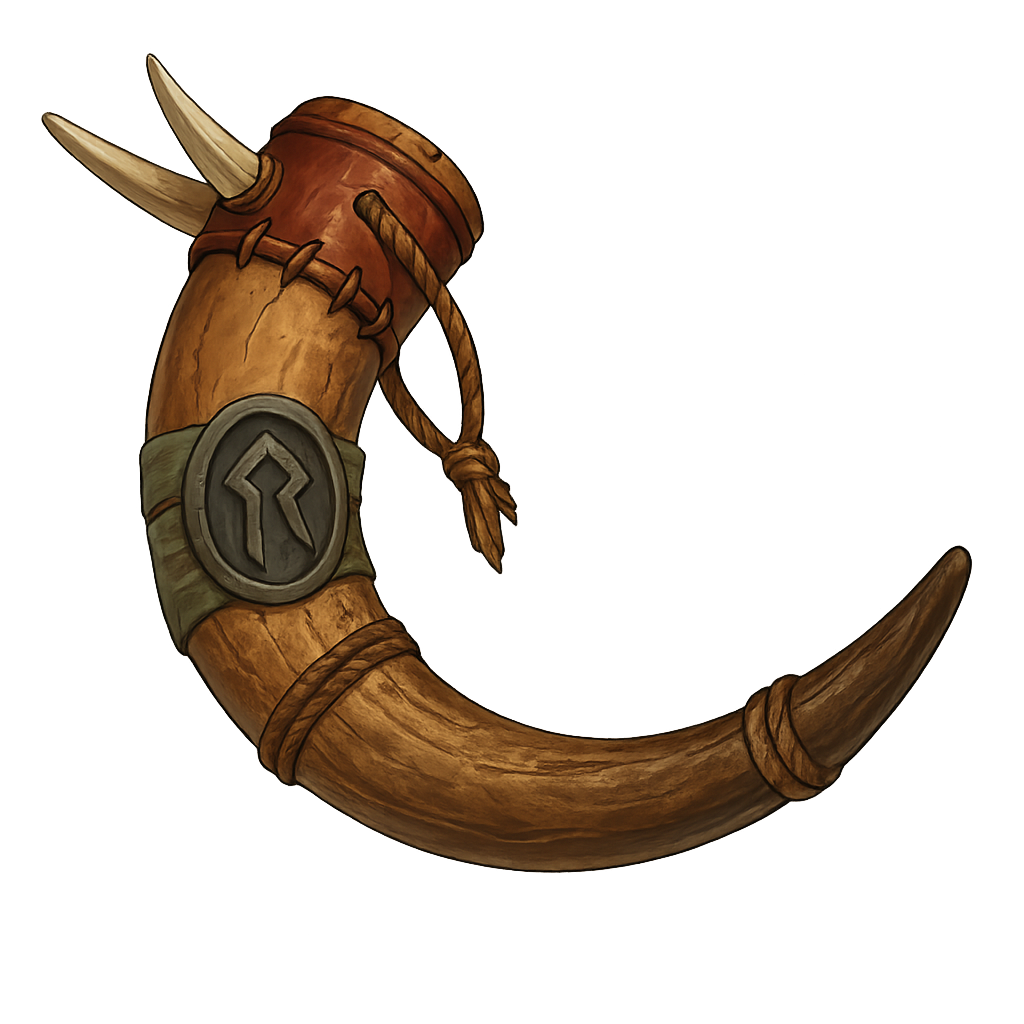
Thur’Kar
The clan’s gathering horn, blown during rituals and large meetings. A symbol of tradition and unity.
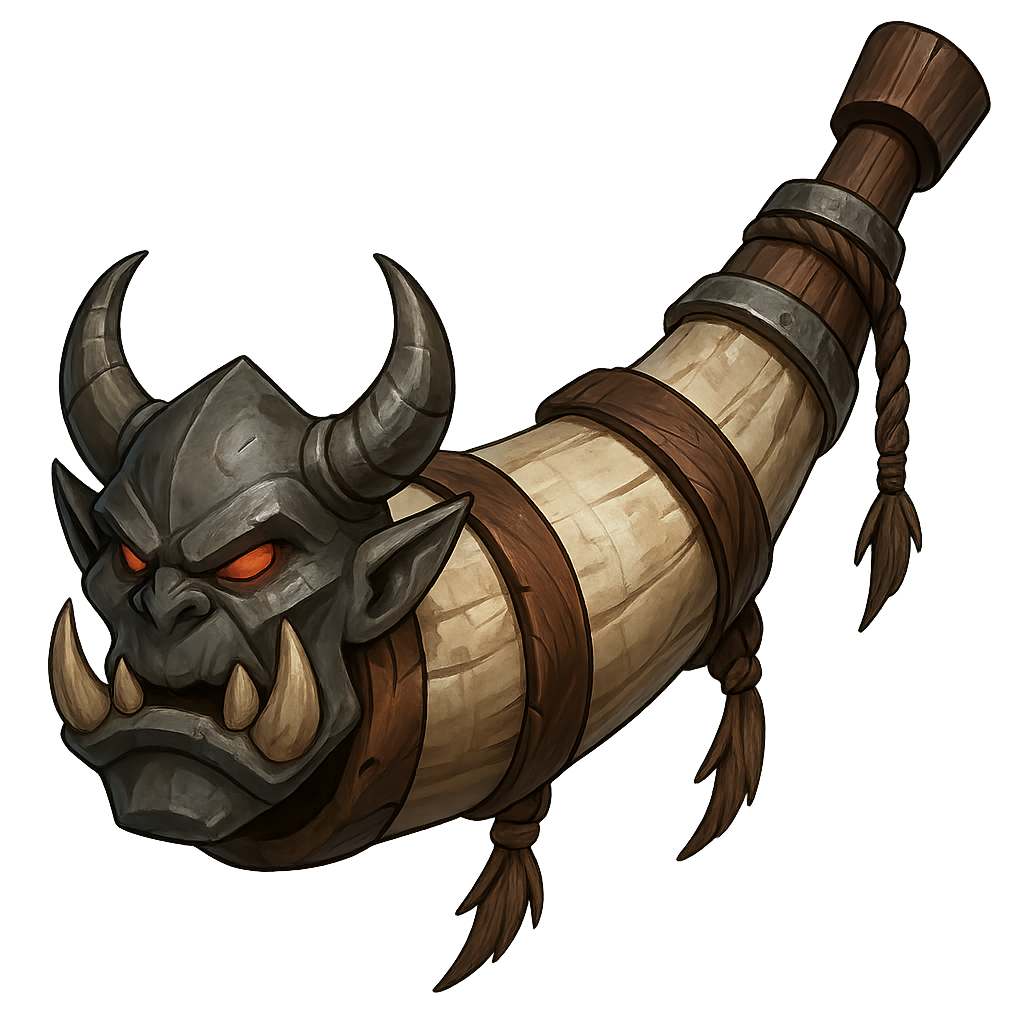
Vrakkhorn
A battle horn adorned with a metal skull. Terrifies enemies and awakens rage in warriors.
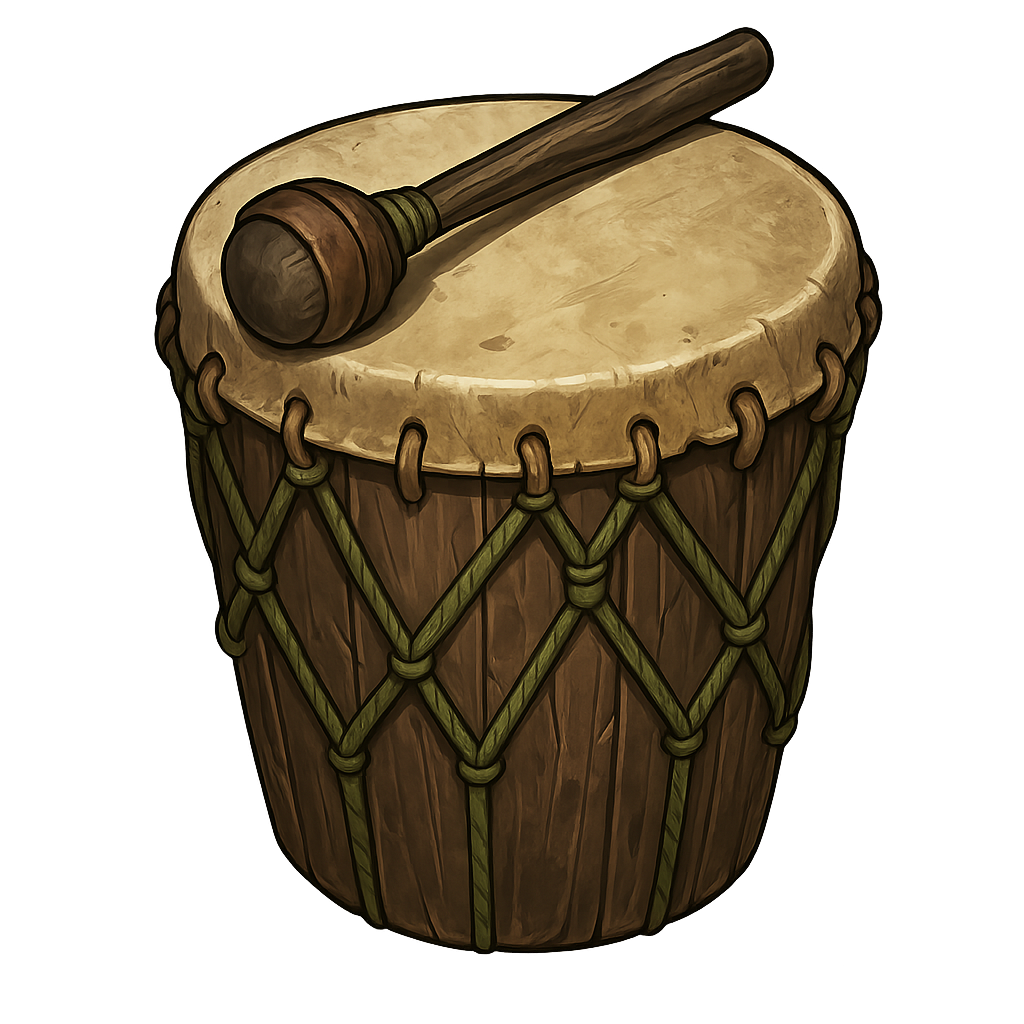
Gro’tan
Everyday drum used to keep work rhythm and during celebrations. Represents the clan’s heartbeat. Grants focus or calm to groups.
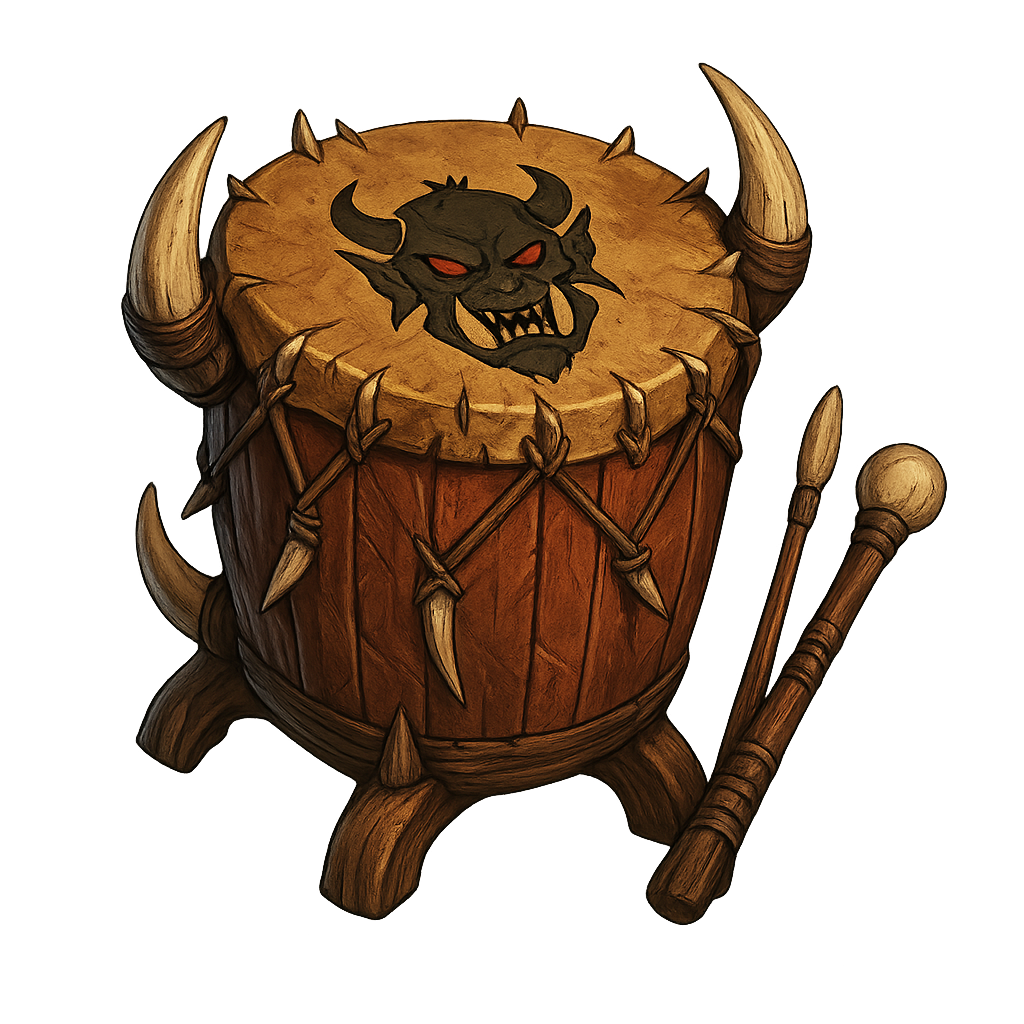
Drum of Kaba-Kaar
A ceremonial drum used in rituals of the death god. Strengthens connection to the spirit world and enhances magical acts in Kaba-Kaar’s name.
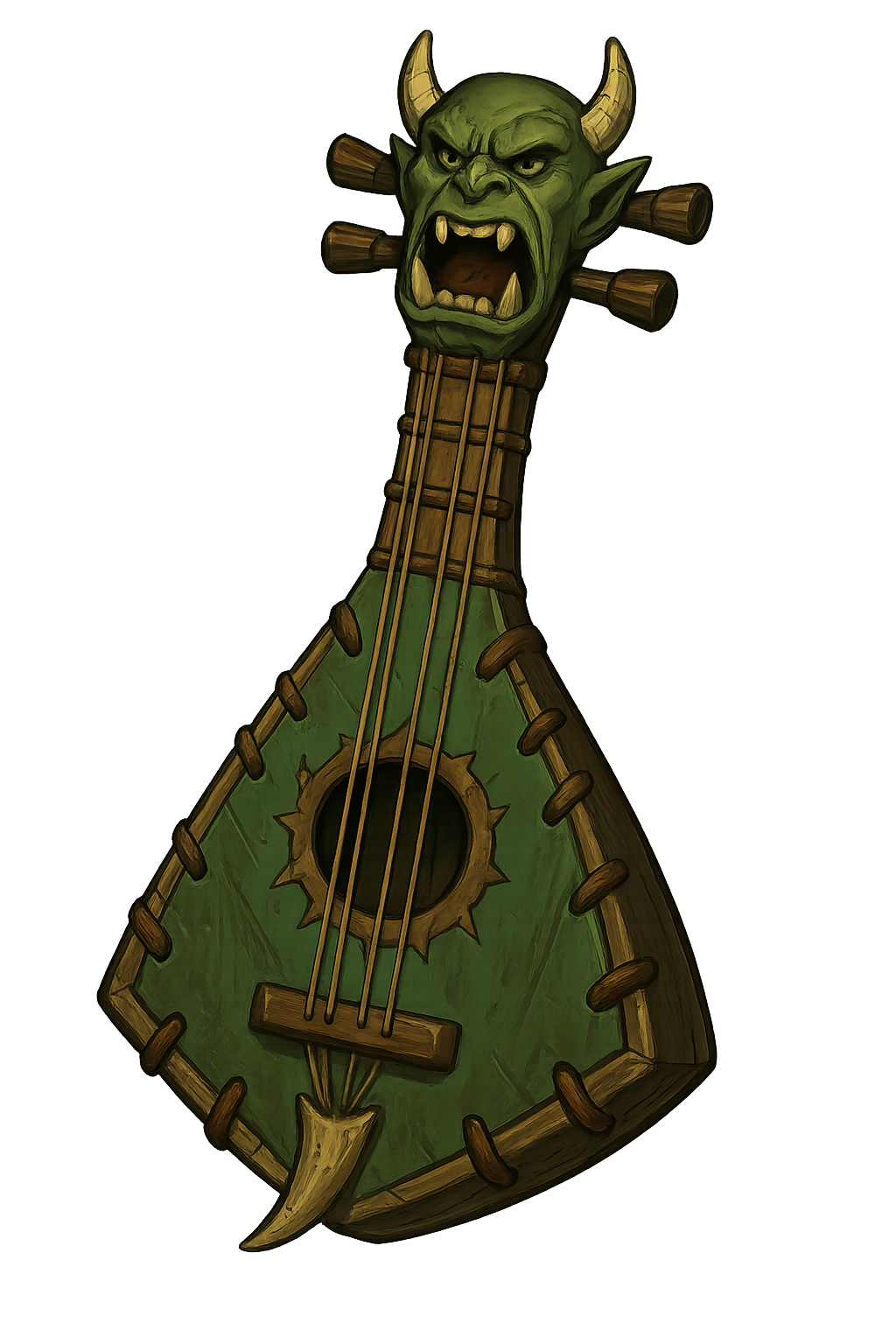
Grulltang
A string instrument with an orc-like head. Played at feasts and in songs of glory. Boosts morale and mocks enemies in song.
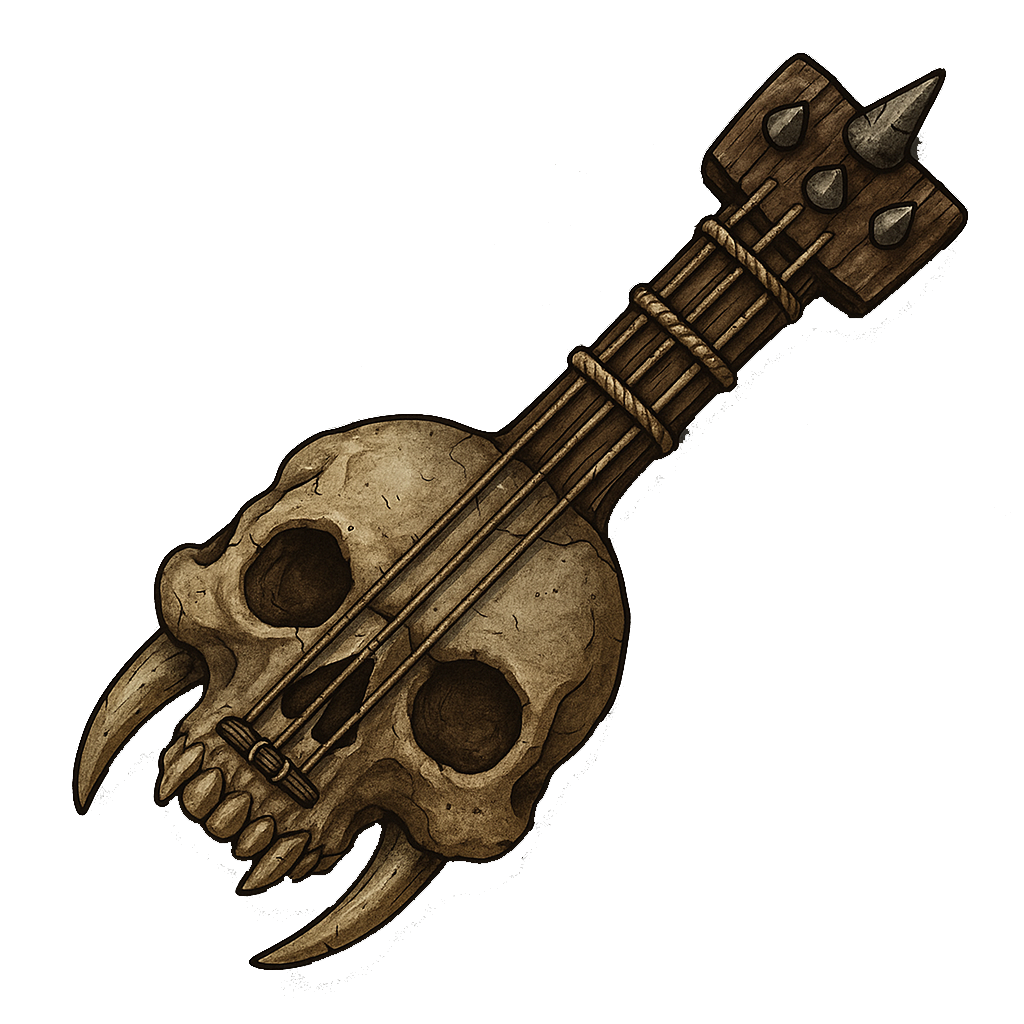
Mournblade Lyre
A lyre carved from bone and horn, played at funerals and remembrance ceremonies. Evokes reverence and calm. Helps the clan honor the dead with dignity and respect.
To the top

Traditions
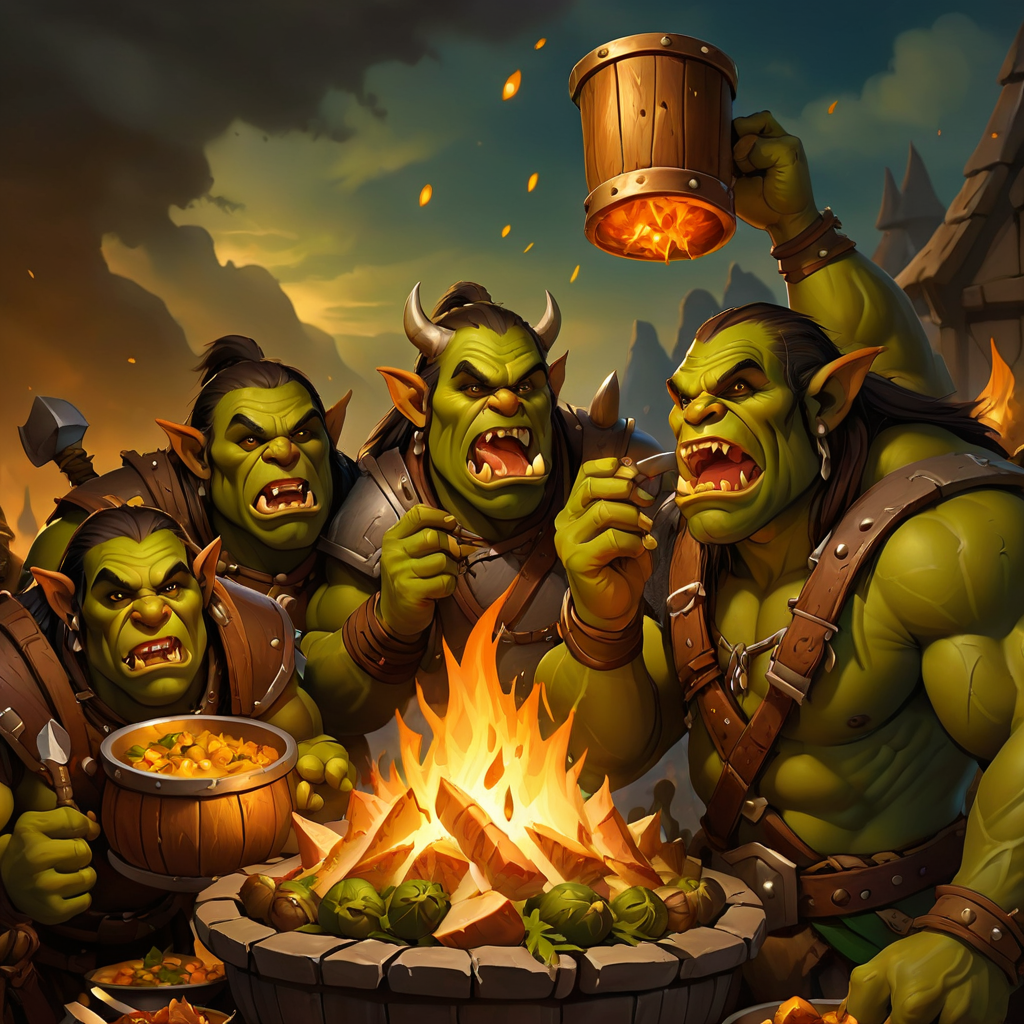
Music holds a central place in orcish culture, woven into the fabric of daily life, ceremony, and warfare. From the thundering rhythm of war drums to the haunting melodies of funeral rites, sound is used not only to communicate emotion but to invoke memory and power. Orc instruments are built for durability and impact – crafted from bone, hide, wood, and metal – each carrying a unique sound shaped by clan tradition.
Whether rallying warriors before battle, honoring ancestors through solemn chants, or passing down stories from elder to child, music serves as both a communal language and a spiritual tool. Though often raw and intense, orcish music is deeply expressive, carrying centuries of tradition in every beat, strum, and breath.
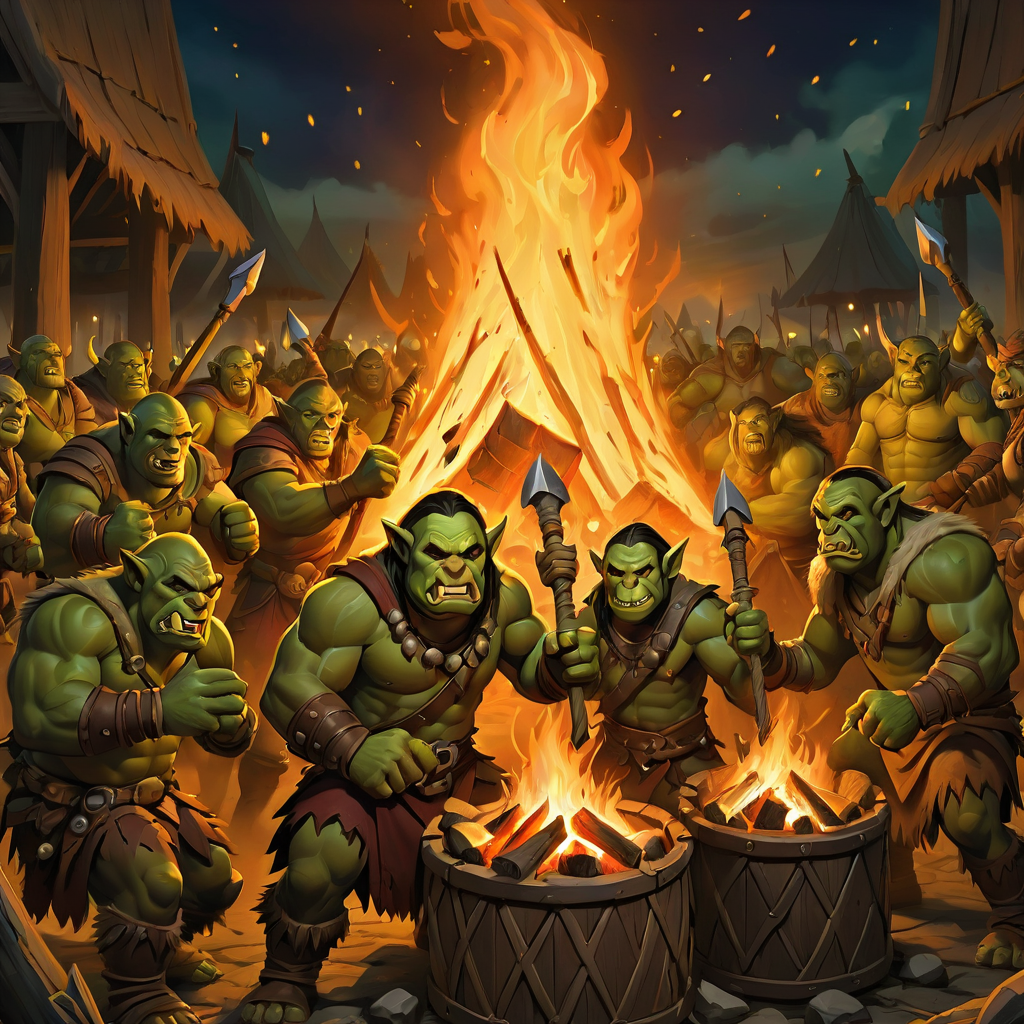
Festivals
-
Drumfall – Thunderous event where clans compete in rhythm to earn Kaba-Kaar’s favor in war.
-
First hunt – Children are marked with the blood of the first hunt to signify their passage into the ranks of the clan
-
Ironfest – Forge gathering where orc smiths display weapons and techniques, placing the orcs second only to dwarves in the art of forging.

Rituals
-
Bloodmemory – Ancestral tales told by the fire, reserved for those of rightful age and clan.
-
Death Silence – A full day without words to honor fallen warriors and unite the living during the winter solstice.
-
Fire Marking – Body painting with glowing ash to seal spiritual commitment to clan, becomes permanent tattoos.
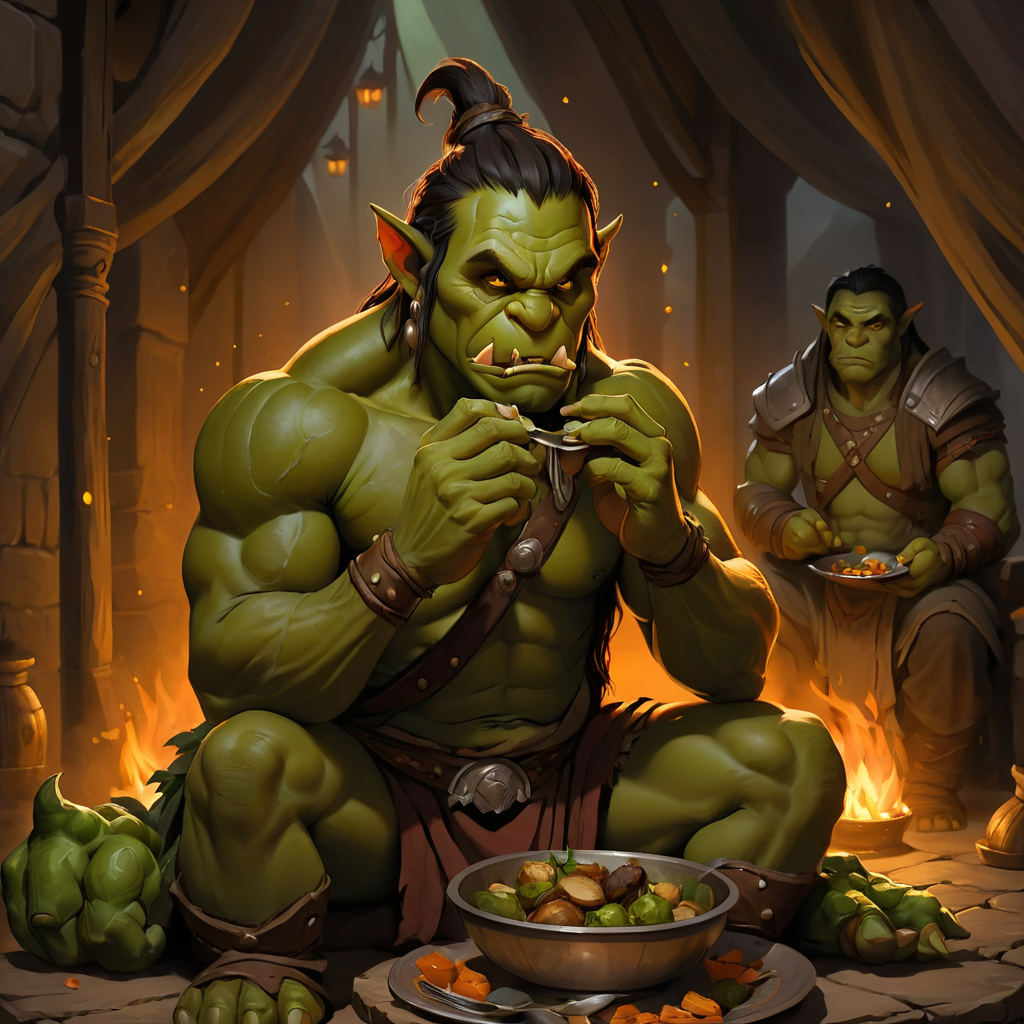
Daily Customs
-
Morning Blow – Striking a hard surface three times to summon courage and chase weakness.
-
Twohanding – Always eat with both hands to show humility and respect.
-
Tent Verse – A whispered line to Kaba-Kaar upon entering a home, warding off spirits.

Taboos
-
White Cloth – Only those ready to die wear white; otherwise it’s a grave insult.
-
Backglance – Looking over your shoulder offends ancestors and is done only in ritual.
-
Steel Touch – Touching another orc’s blade without permission is considered a deep violation. Blades are seen as soul-linked, and the act implies ownership or challenge.
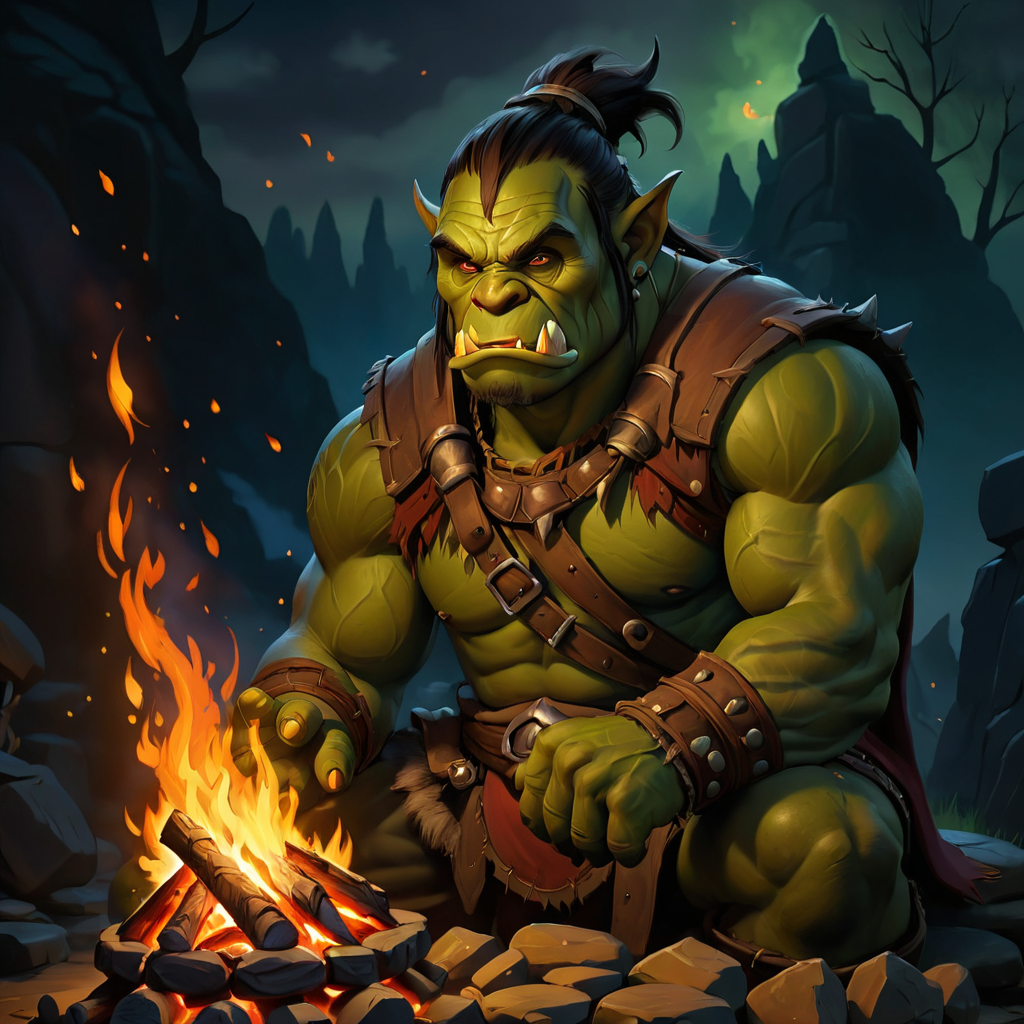
Duties
-
Blade Watch – Night watch carries a heavy bone necklace as a symbol of trust.
-
Elder Bond – The youngest carries a rock each day to learn the weight of loyalty.
-
Burden Duty – A chosen keeps the fire alive all night. Letting it die brings disgrace.

Initiations
-
Hut Claim – When an orc is deemed old and skilled enough, they may build or inherit their own tent-hut. This marks full autonomy and the right to host others.
-
First Blood Feat – To be recognized as a full warrior, an orc must defeat and kill their first enemy in open battle. The kill must be witnessed and named.
-
Garx Slayer – Killing a Garx—a massive, tusked swamp-beast—is a rite of passage for aspiring champions. The tusk is worn as proof and protection.
To the top

Clothing

Music holds a central place in orcish culture, woven into the fabric of daily life, ceremony, and warfare. From the thundering rhythm of war drums to the haunting melodies of funeral rites, sound is used not only to communicate emotion but to invoke memory and power. Orc instruments are built for durability and impact – crafted from bone, hide, wood, and metal – each carrying a unique sound shaped by clan tradition.
Whether rallying warriors before battle, honoring ancestors through solemn chants, or passing down stories from elder to child, music serves as both a communal language and a spiritual tool. Though often raw and intense, orcish music is deeply expressive, carrying centuries of tradition in every beat, strum, and breath.
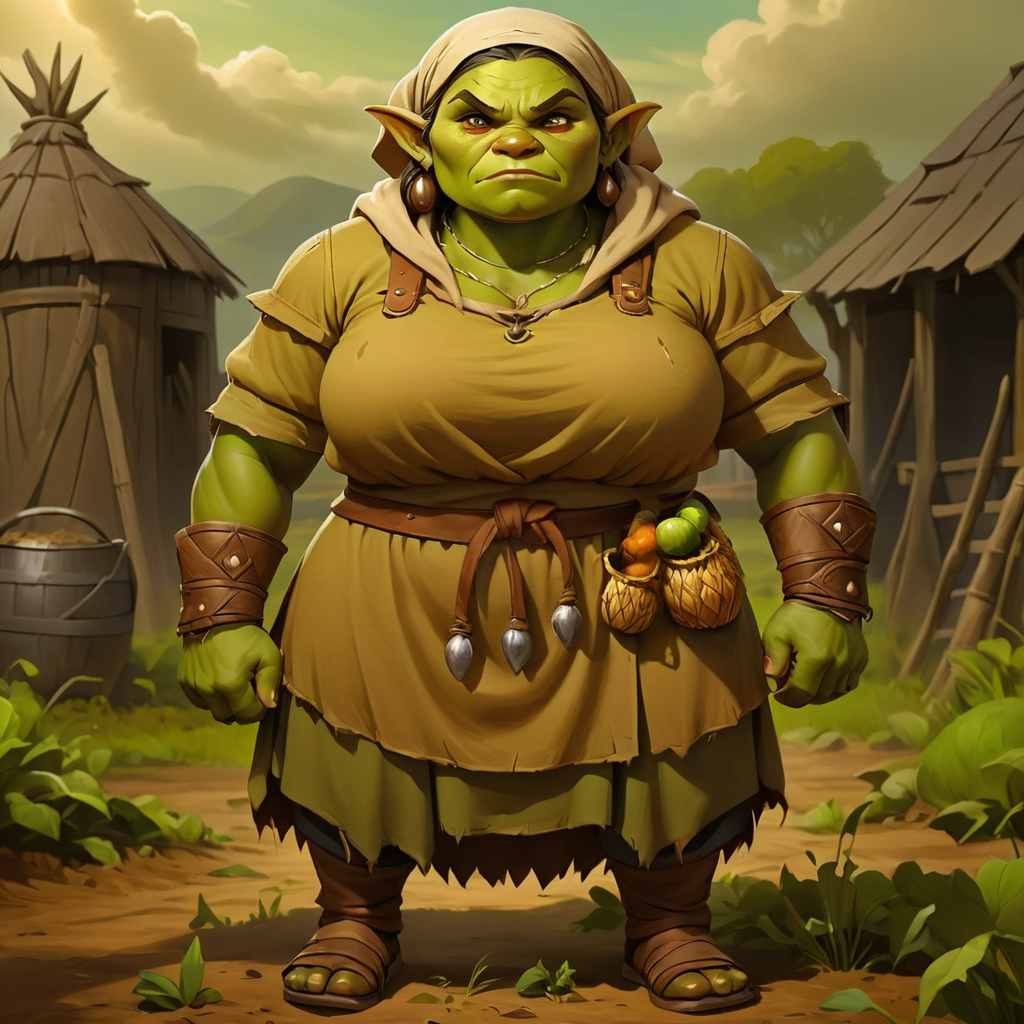
Farmer

Tracker

Warrior

Black smith

Chaman

Priest
To the top

Weapons

Music holds a central place in orcish culture, woven into the fabric of daily life, ceremony, and warfare. From the thundering rhythm of war drums to the haunting melodies of funeral rites, sound is used not only to communicate emotion but to invoke memory and power. Orc instruments are built for durability and impact – crafted from bone, hide, wood, and metal – each carrying a unique sound shaped by clan tradition.
Whether rallying warriors before battle, honoring ancestors through solemn chants, or passing down stories from elder to child, music serves as both a communal language and a spiritual tool. Though often raw and intense, orcish music is deeply expressive, carrying centuries of tradition in every beat, strum, and breath.
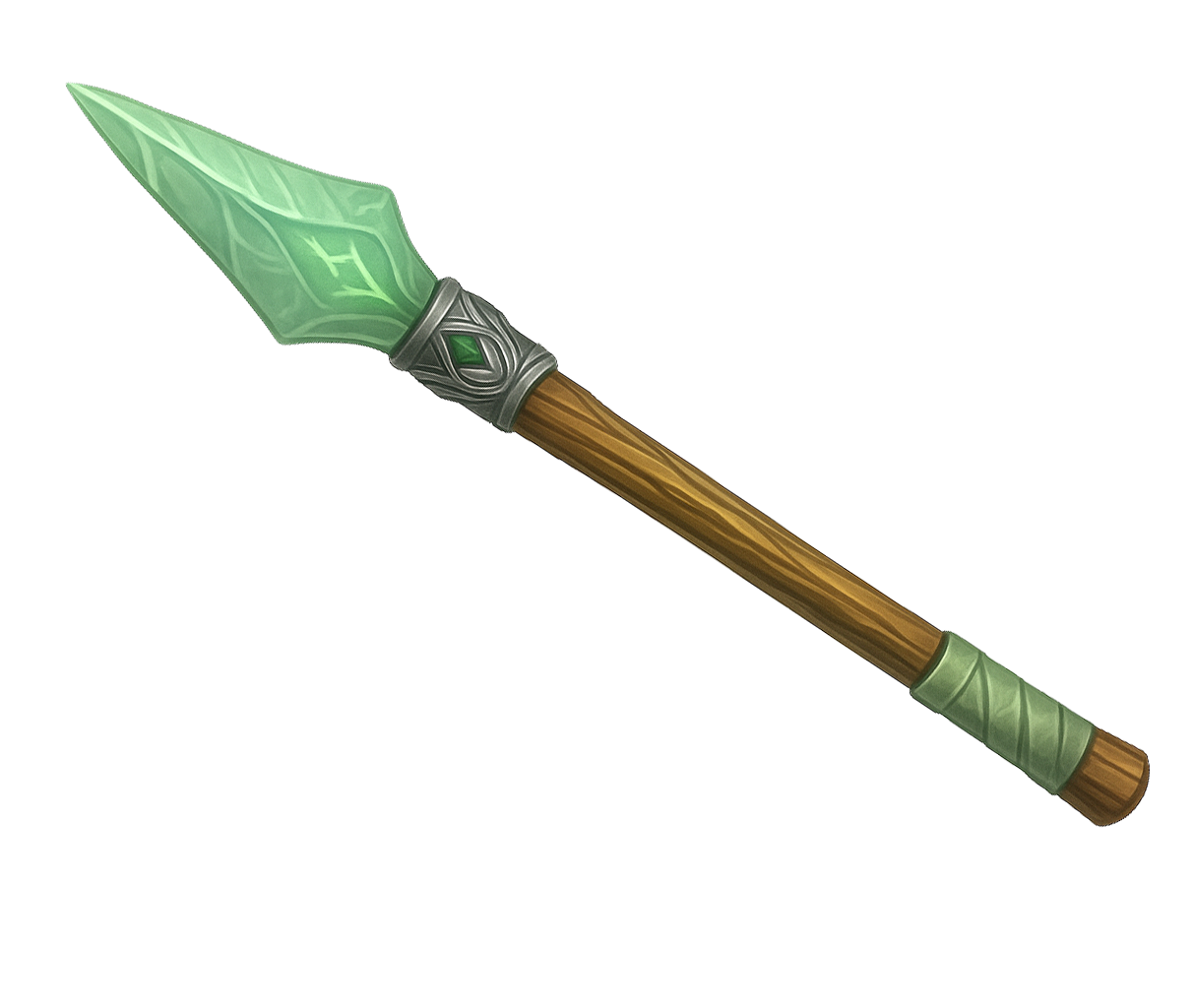
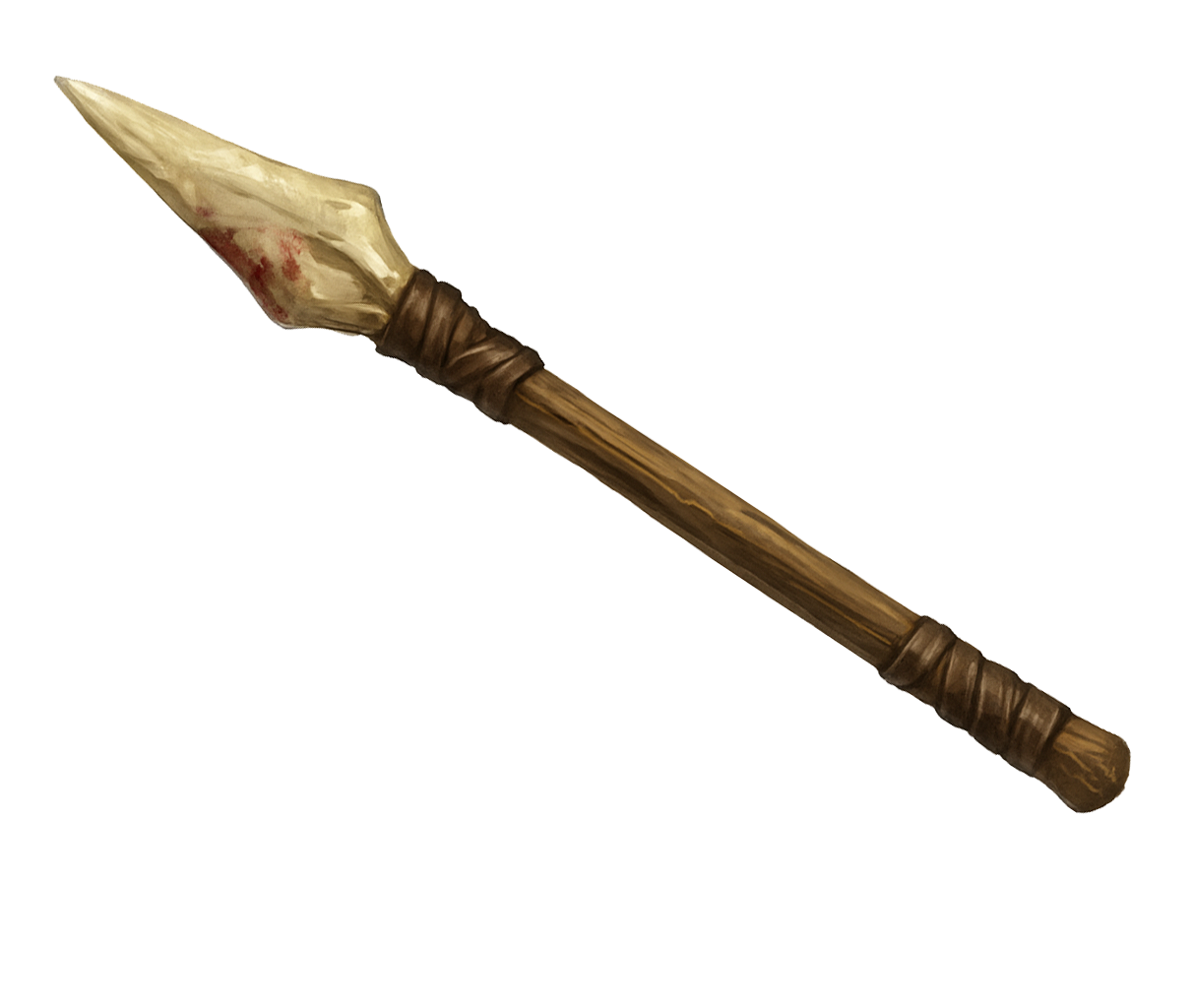
Wooden Lodge – Settled Families & Clan Officials
A semi-permanent structure with a sturdy wooden frame and sloping roof that mimics the tent’s silhouette. Often covered in hides or dyed cloth. These lodges house families, administrators, or respected elders. Clan colors and symbols are clearly visible.
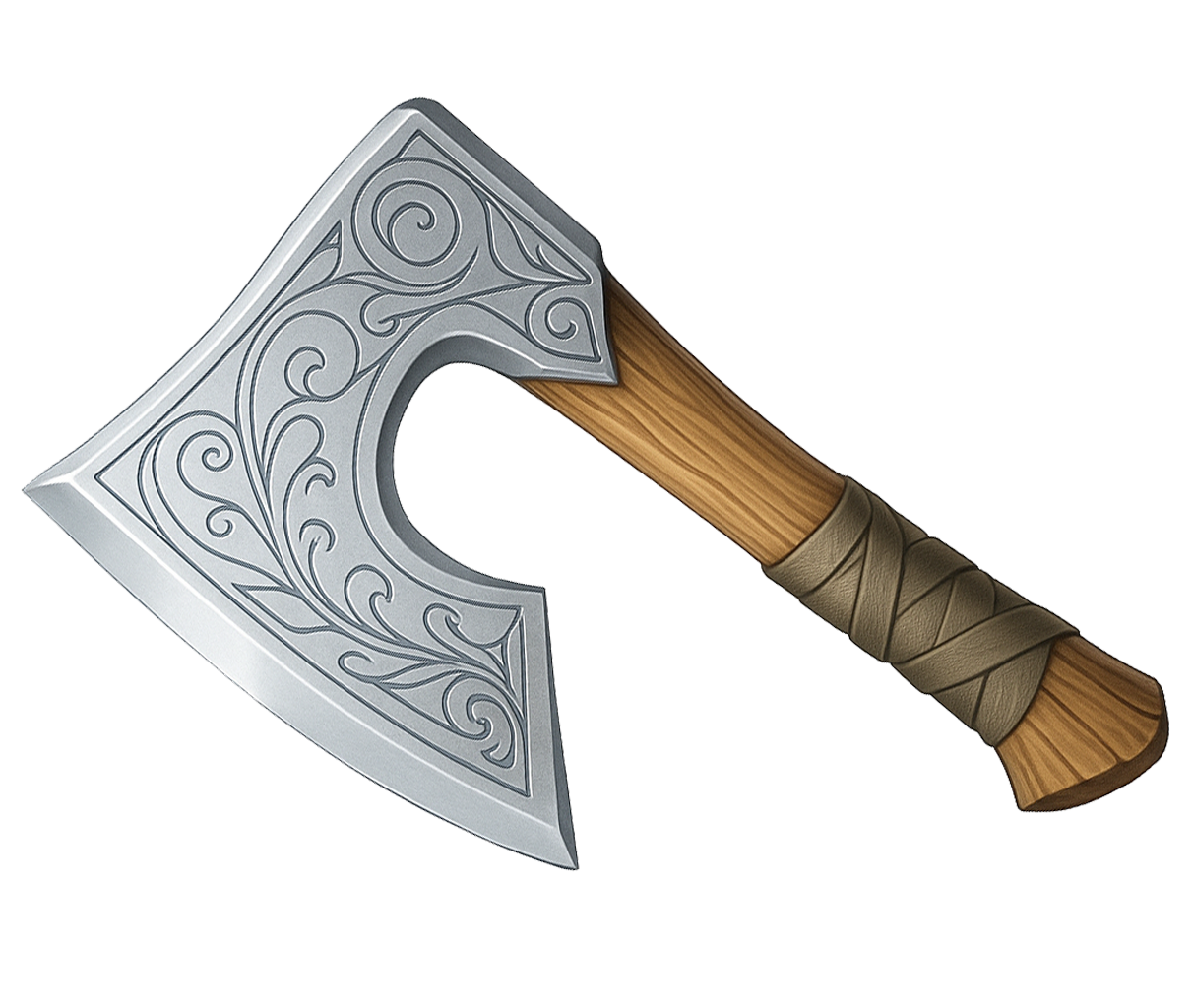

Great Lodge – Respected Lineages & Clan Leadership
An enhanced version of the wooden lodge, this grander structure offers improved space, warmth, and prestige. With refined materials and elevated architecture, it often houses prominent families, senior officials, or ceremonial gatherings. The tall design allows for light, status, and visibility—both practical and symbolic within clan society.
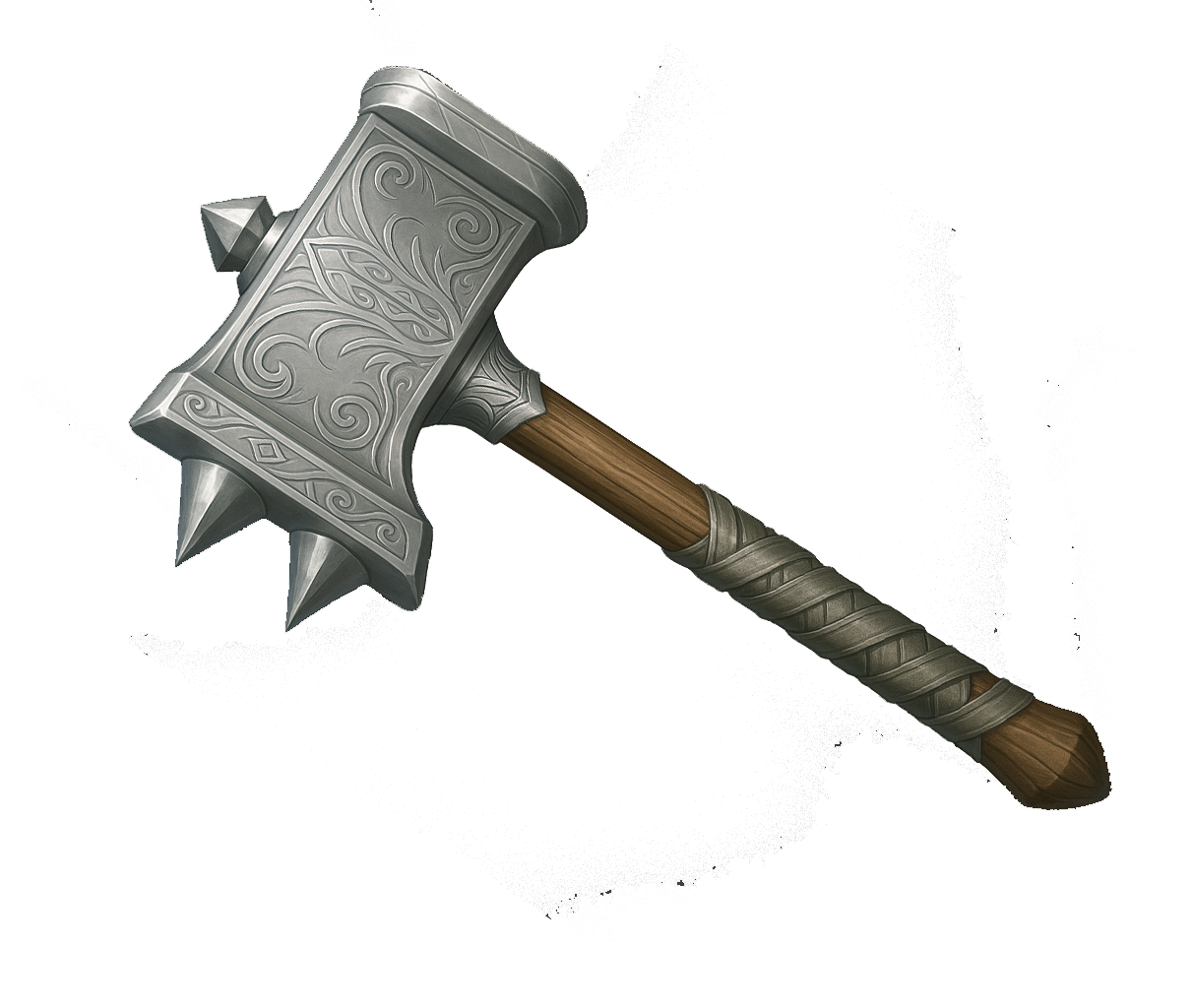
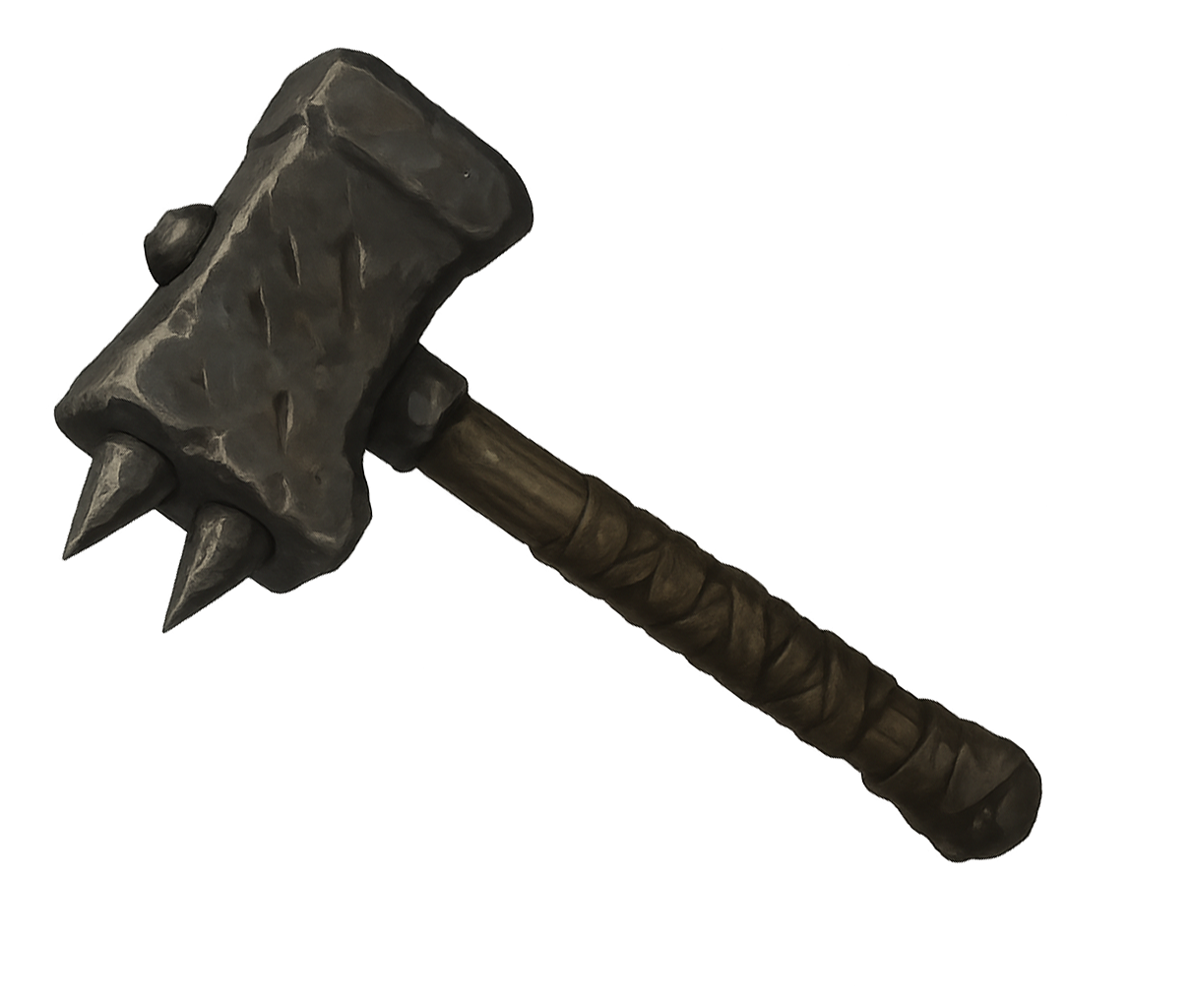
Command Canopy – Masters & Elders
A large structure with flowing lines and layered roofs. Broader and more refined than the great lodge,marking it as a place of status and importance. It is used by respected clan members for gatherings, discussions, and decisions that affect the whole tribe. Whether for votes, strategy, or settling disputes, the space reflects shared power rather than personal rule.
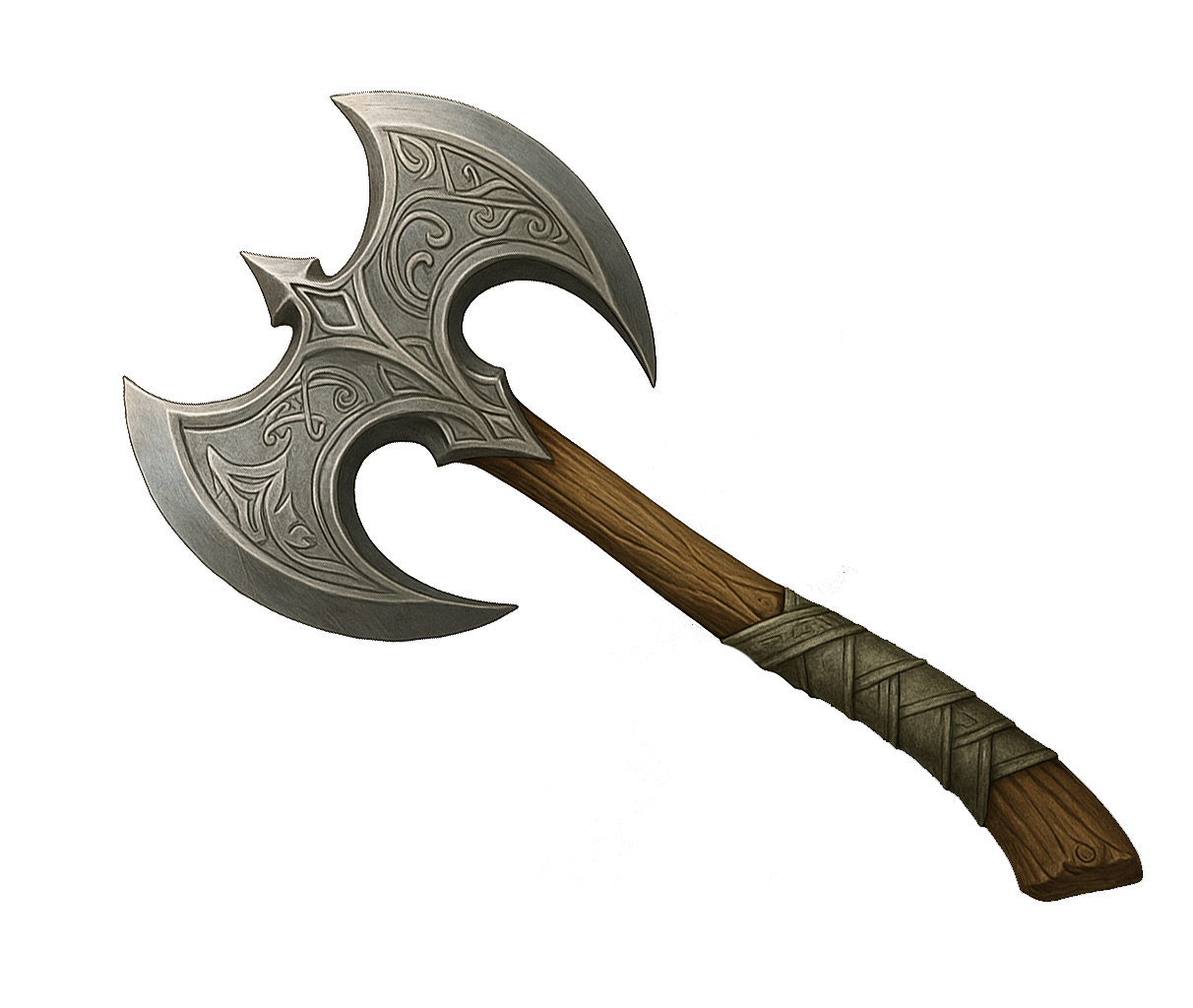
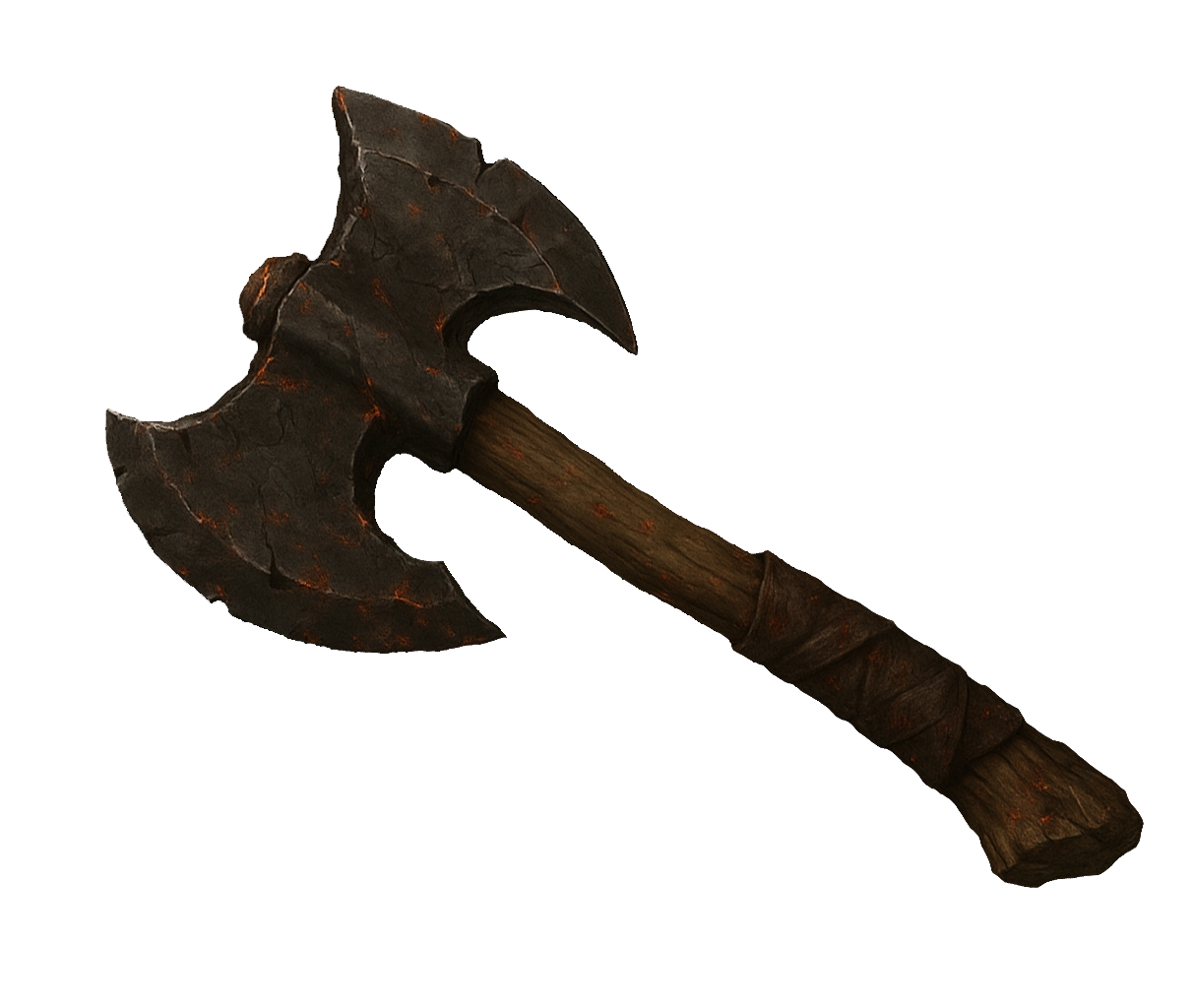




To the top

Animals
To the top

Combat
To the top

Trading
To the top


